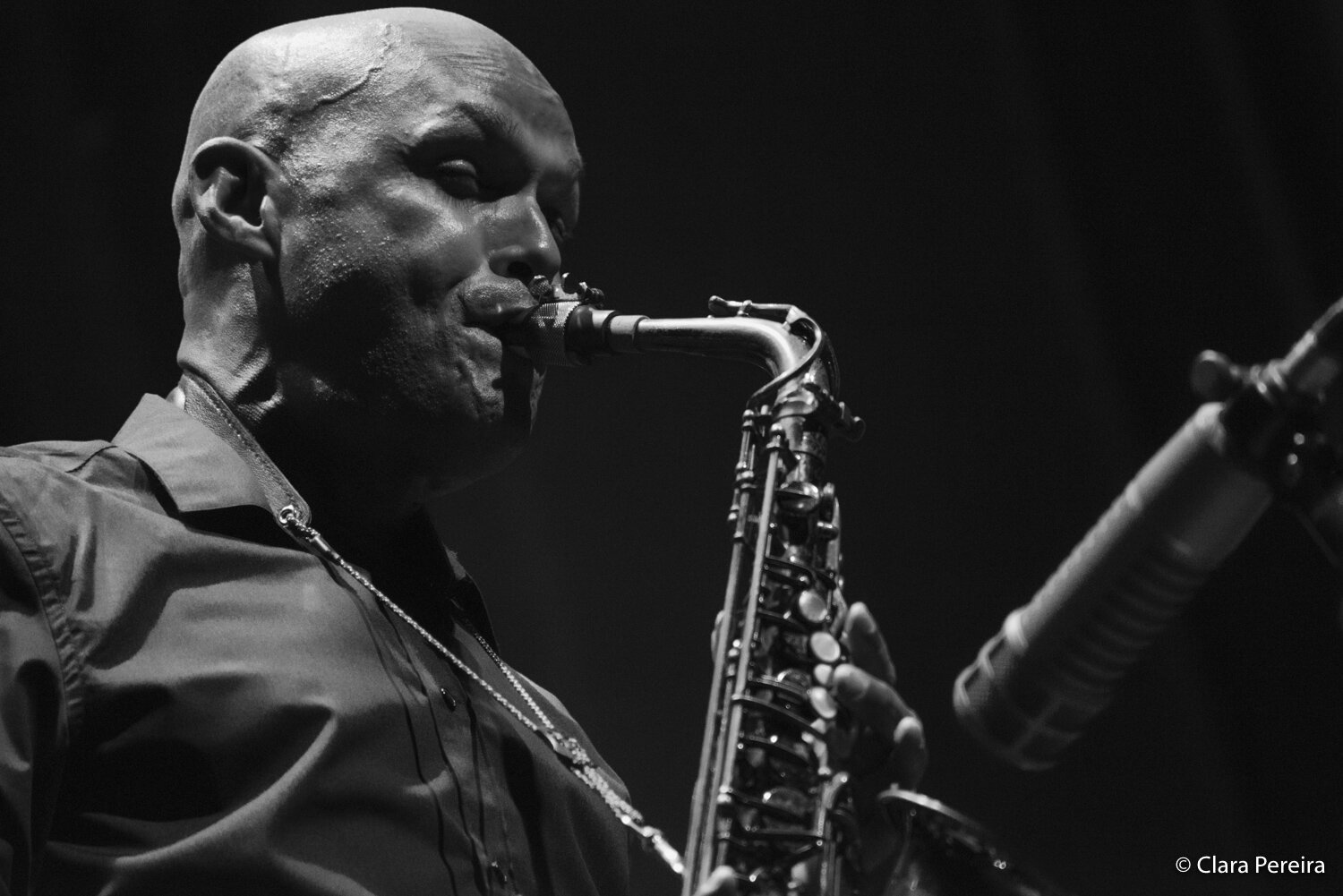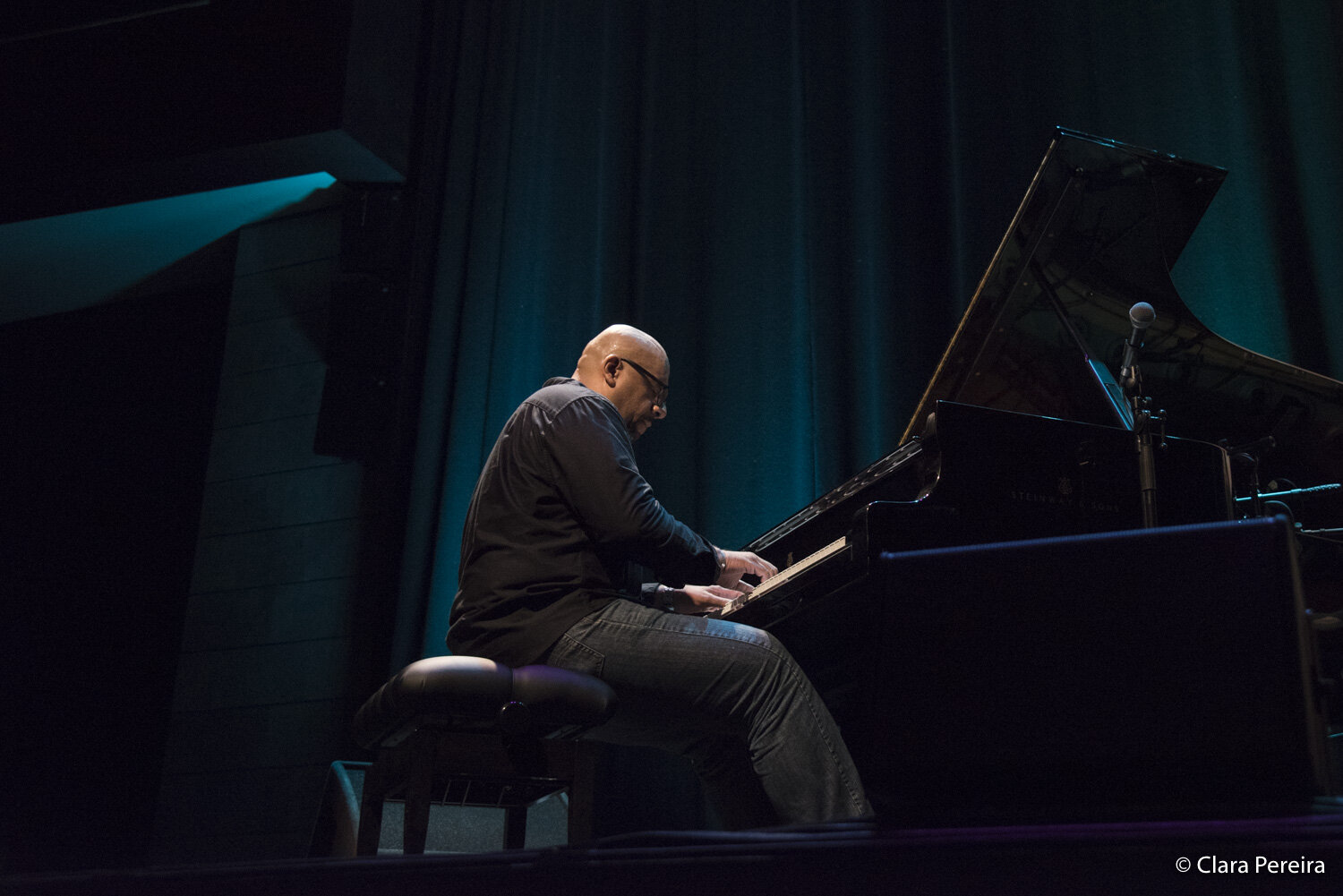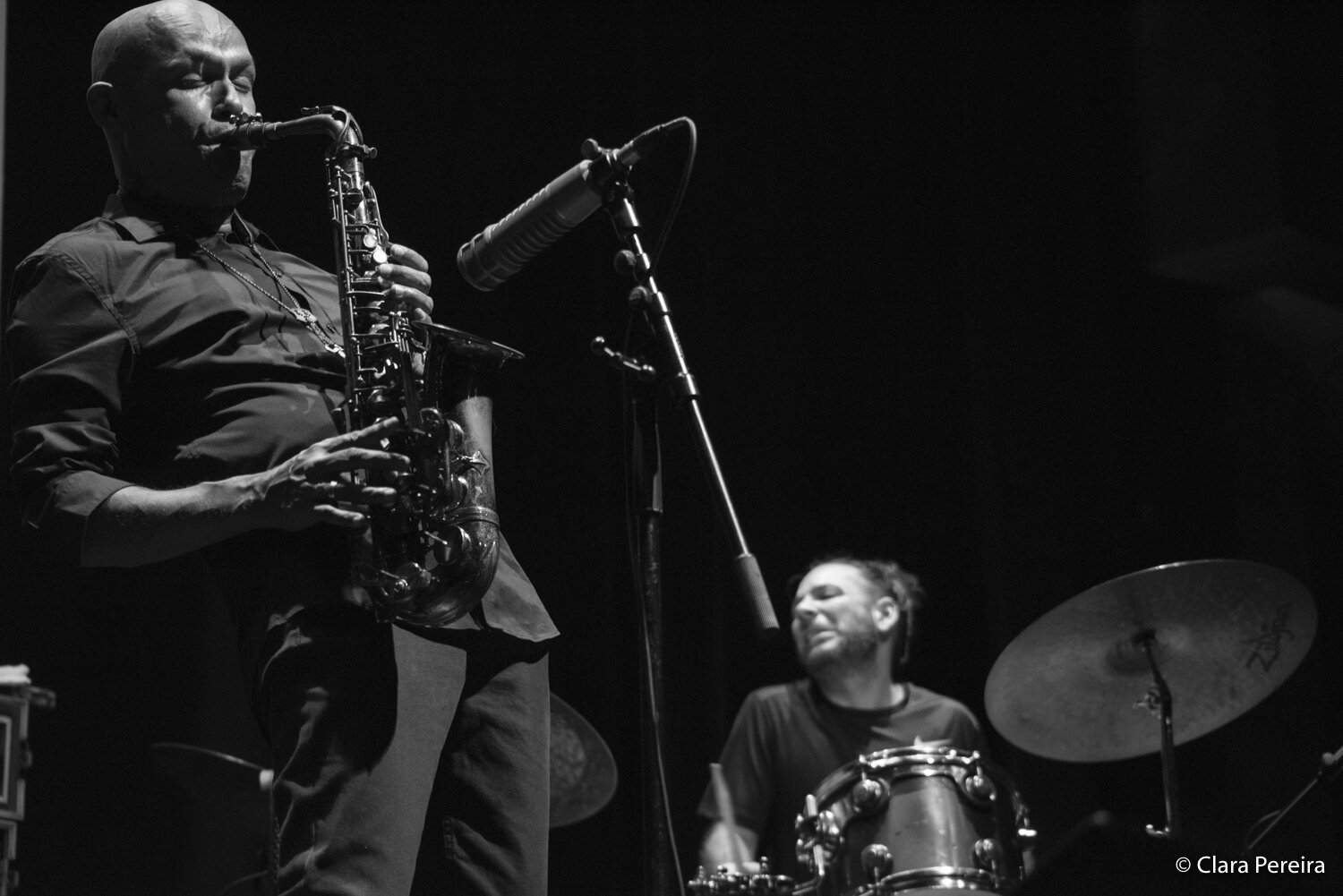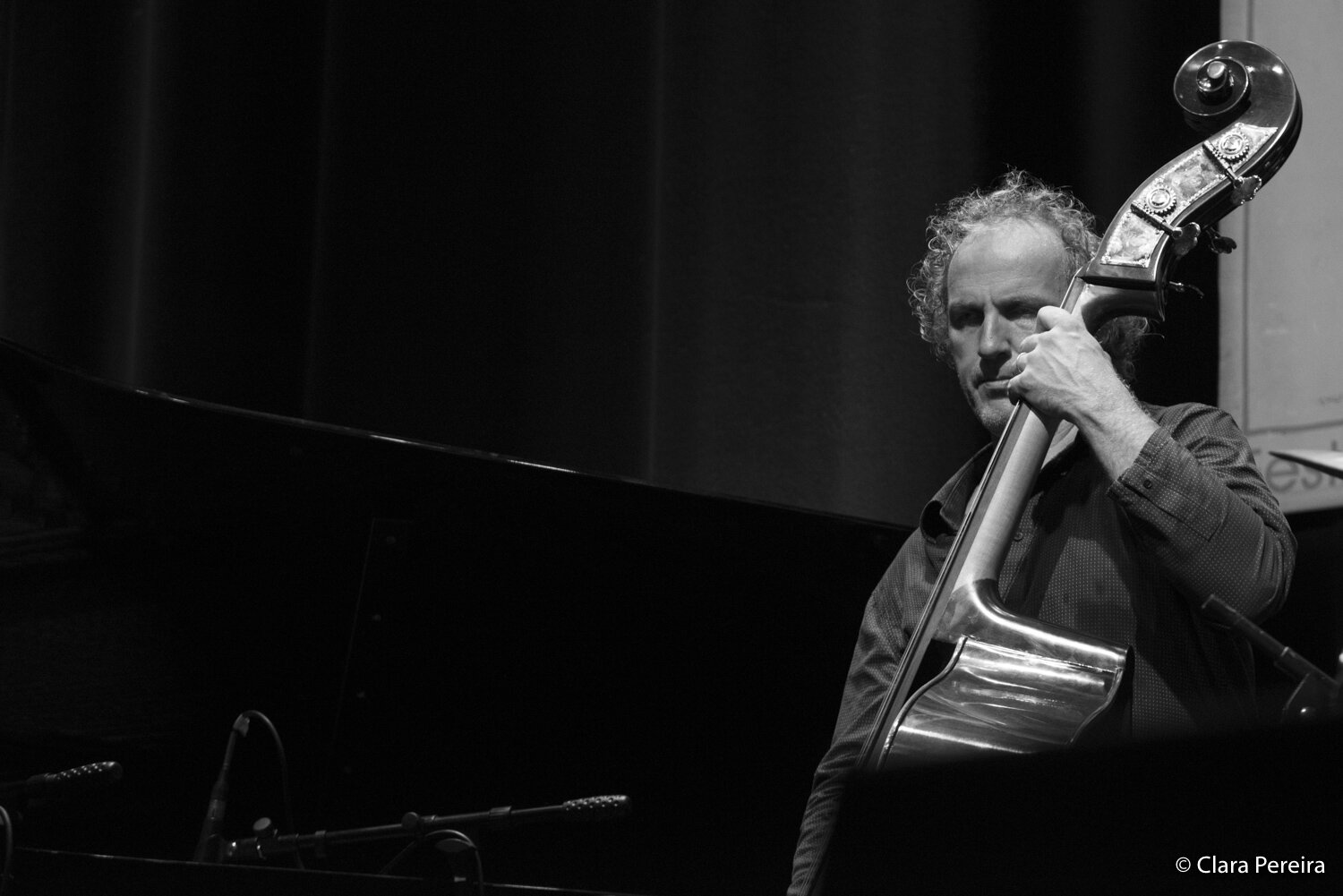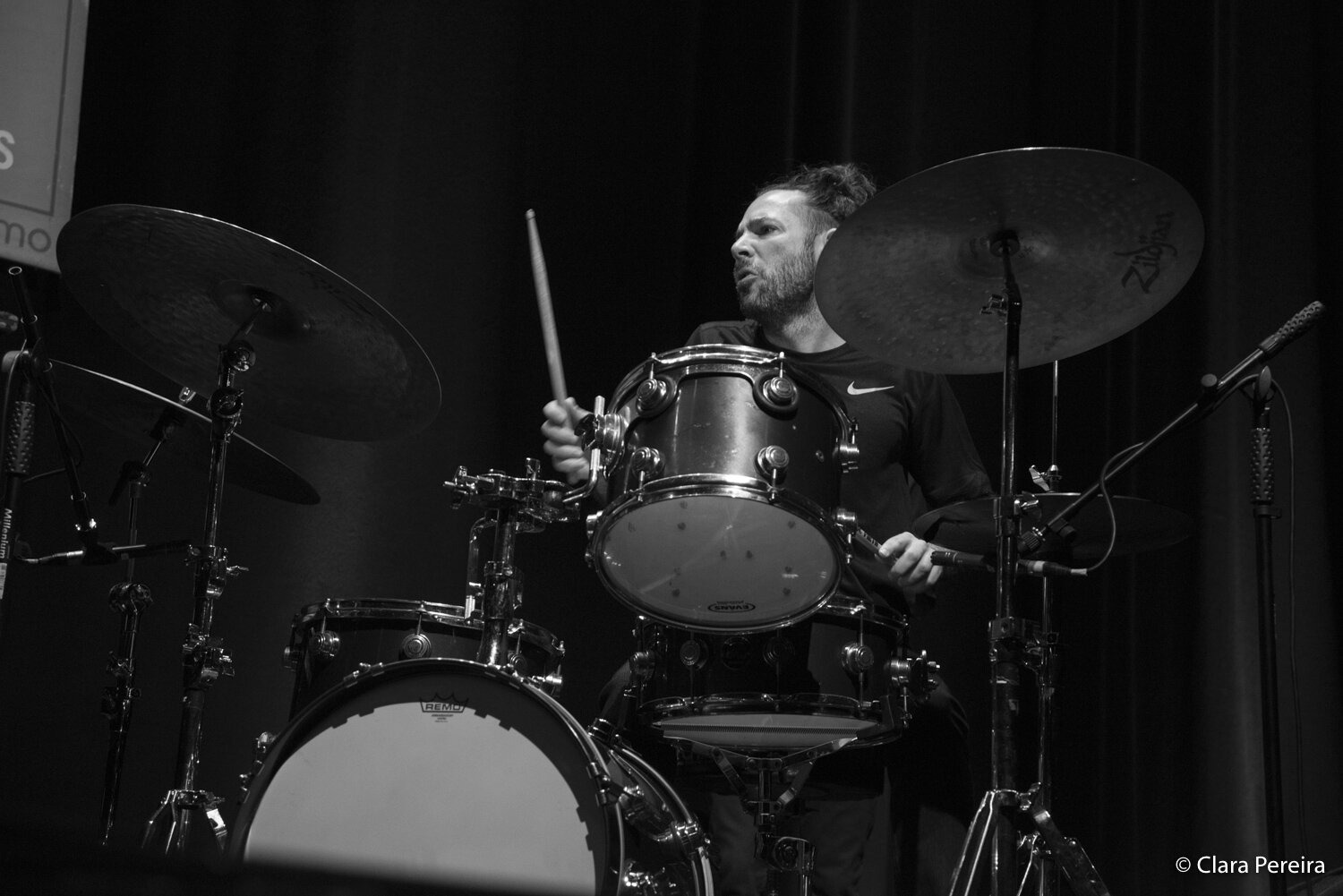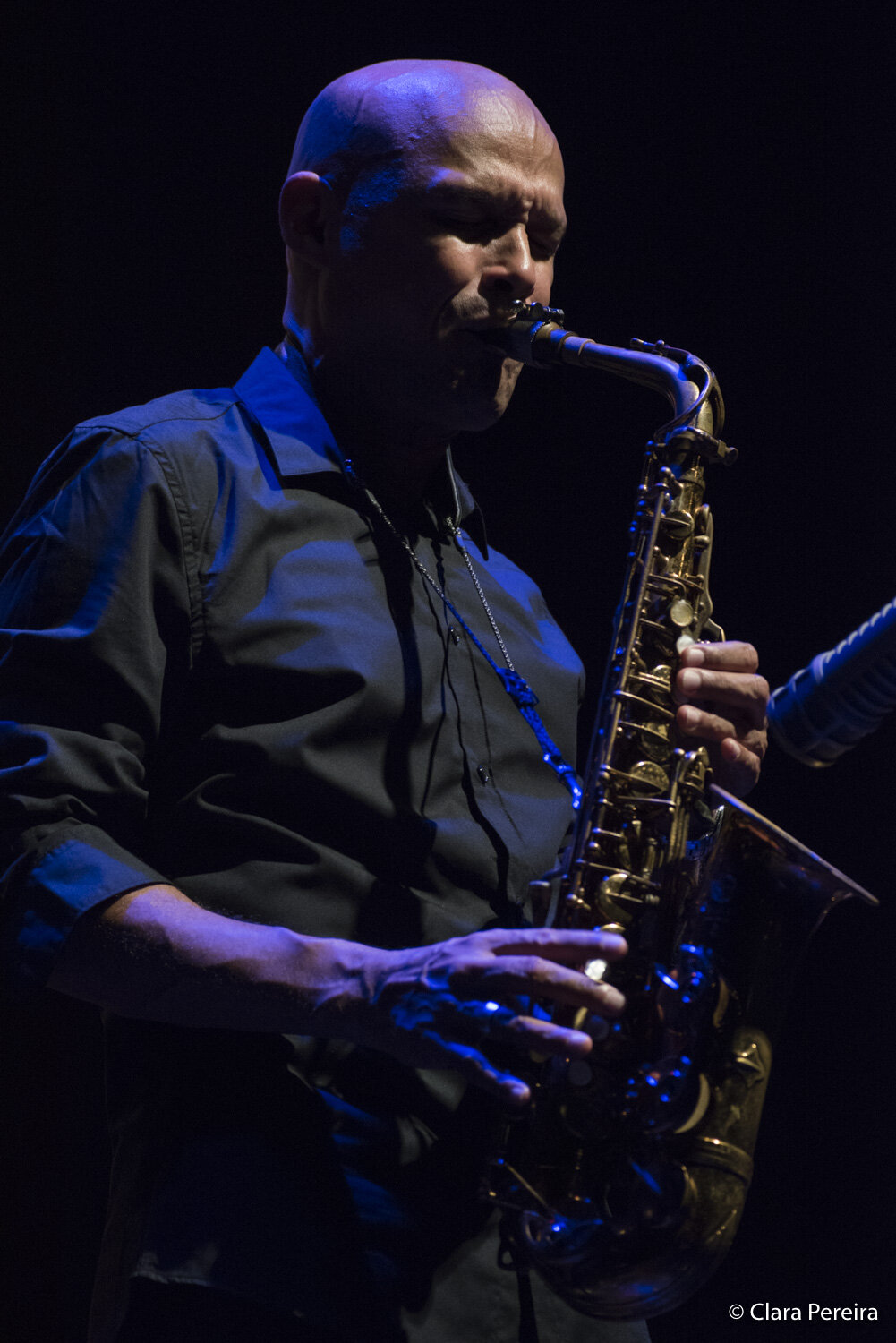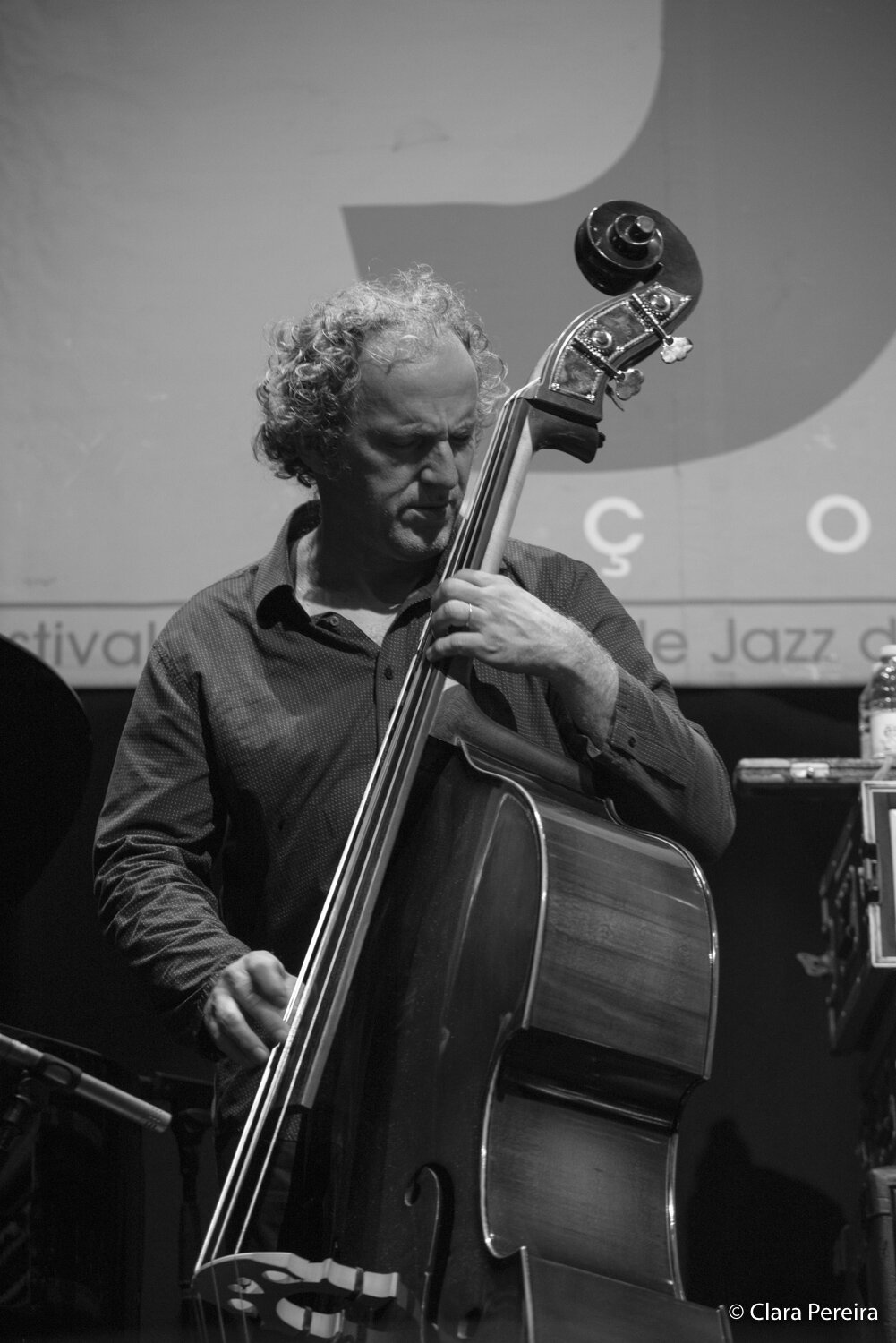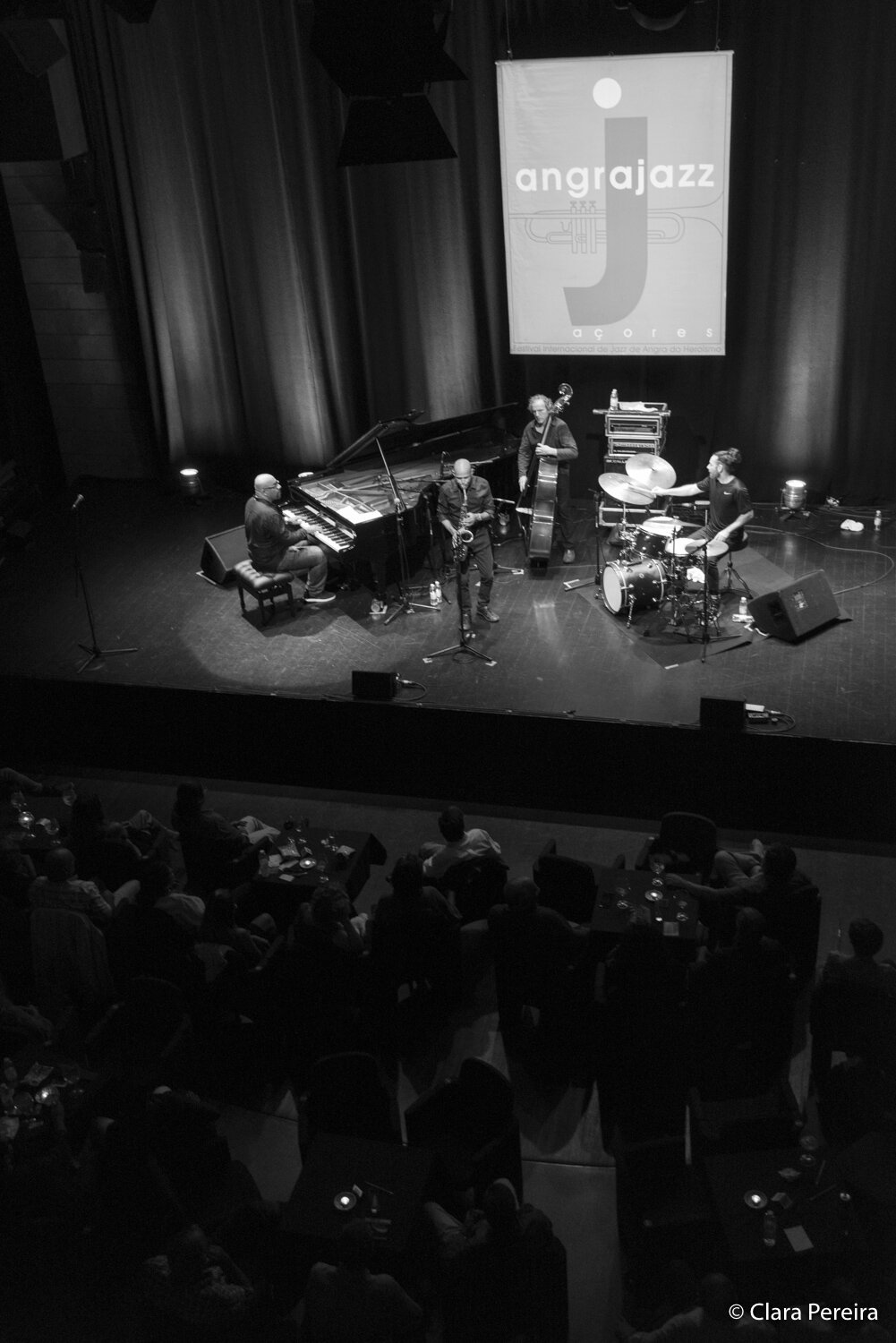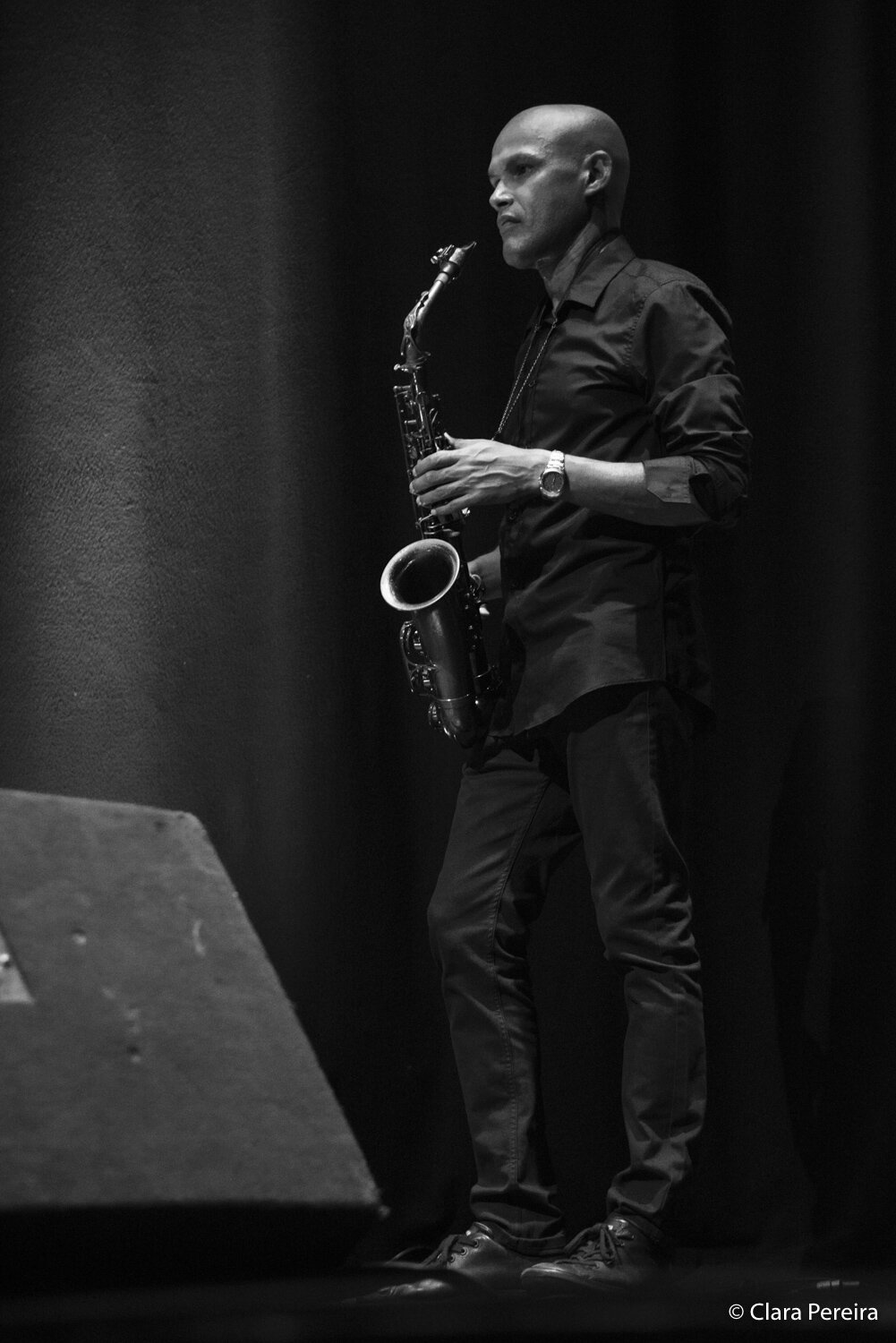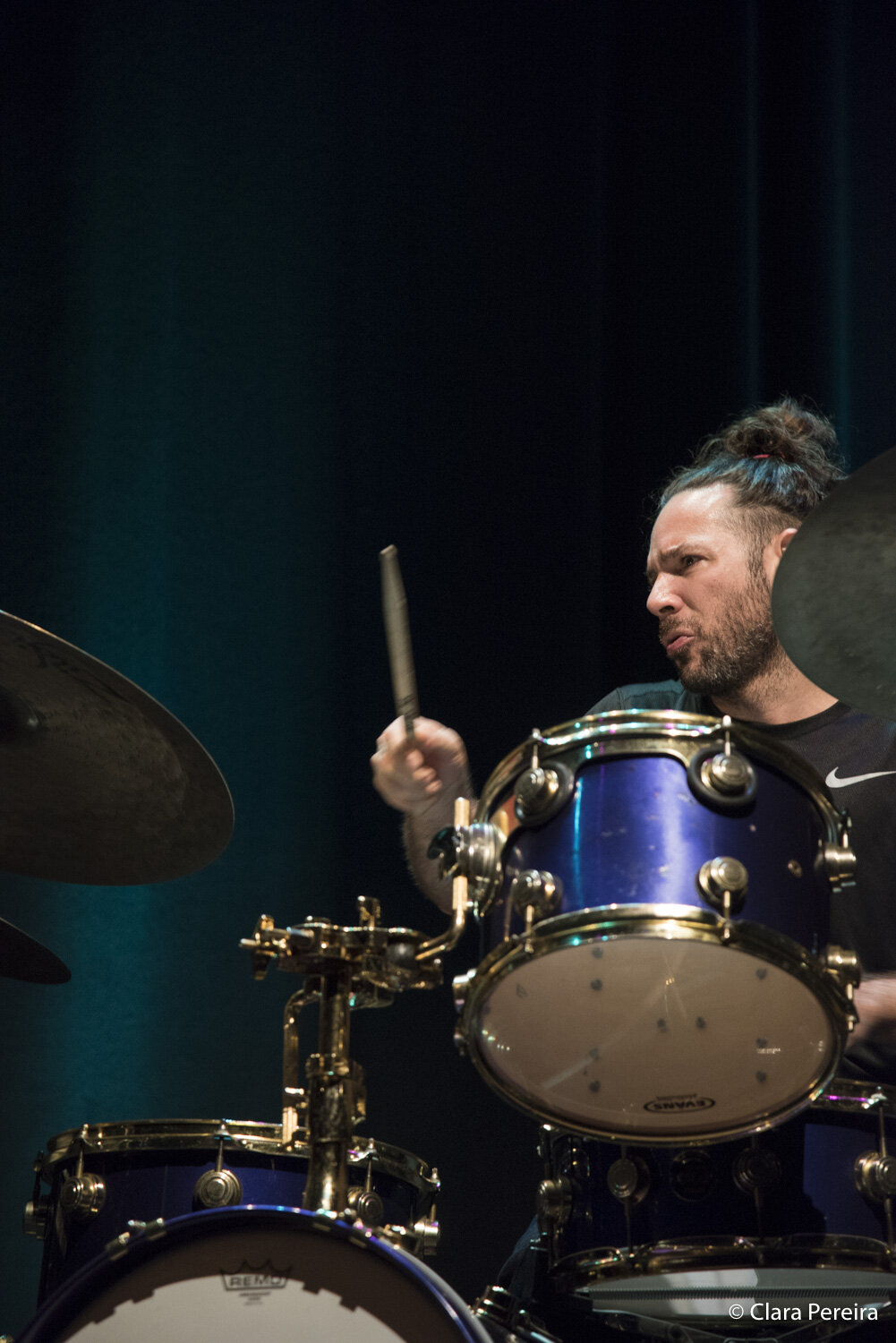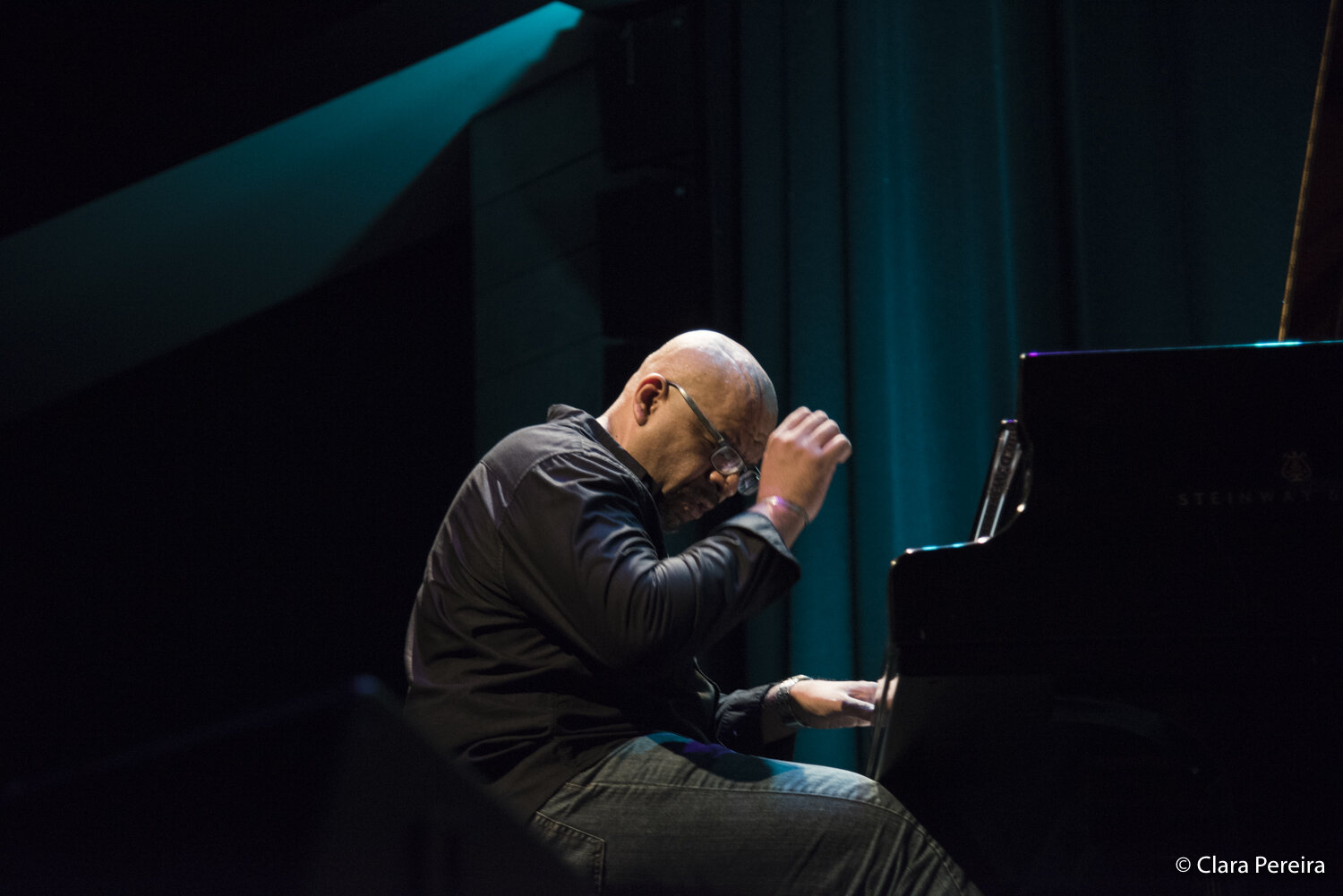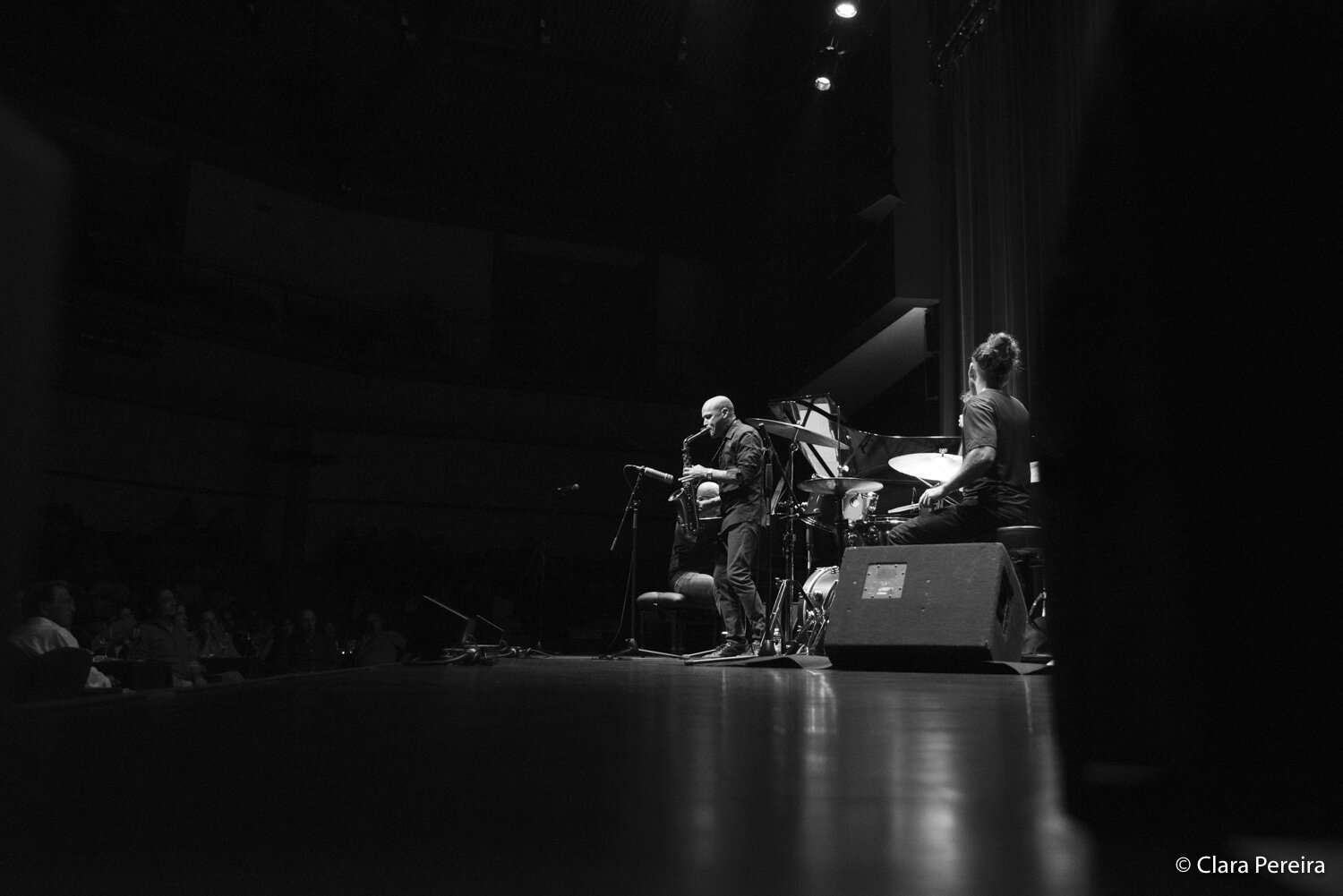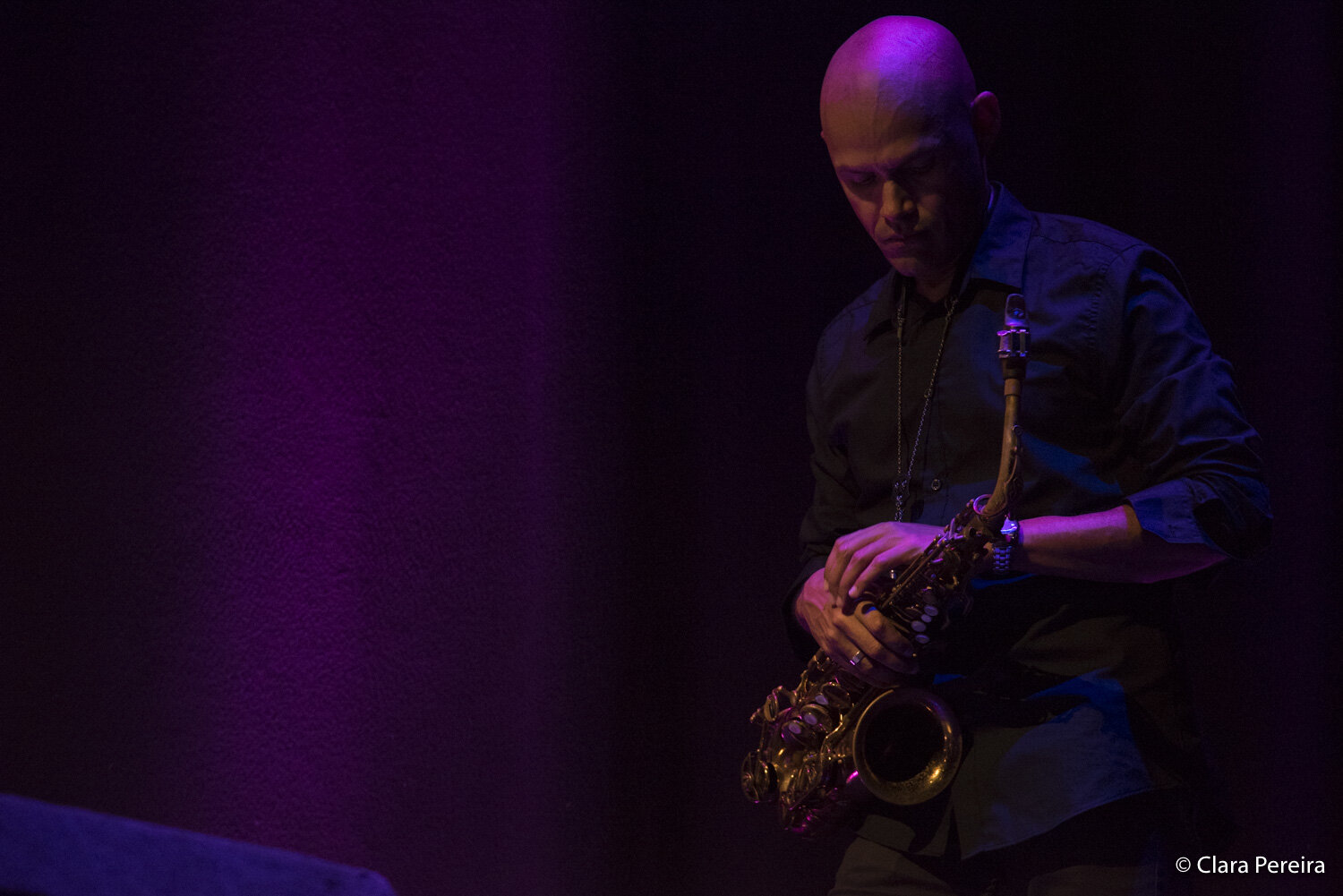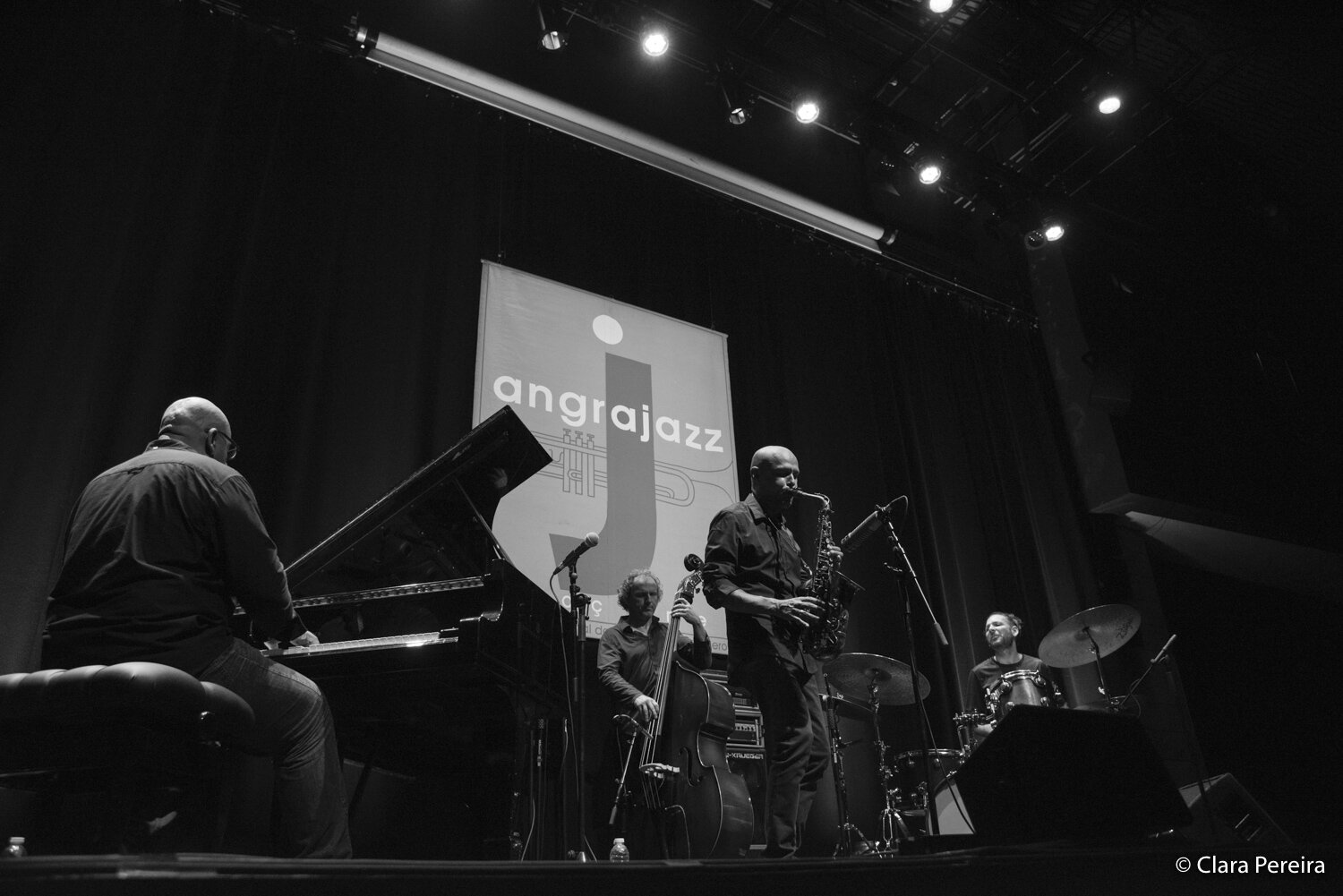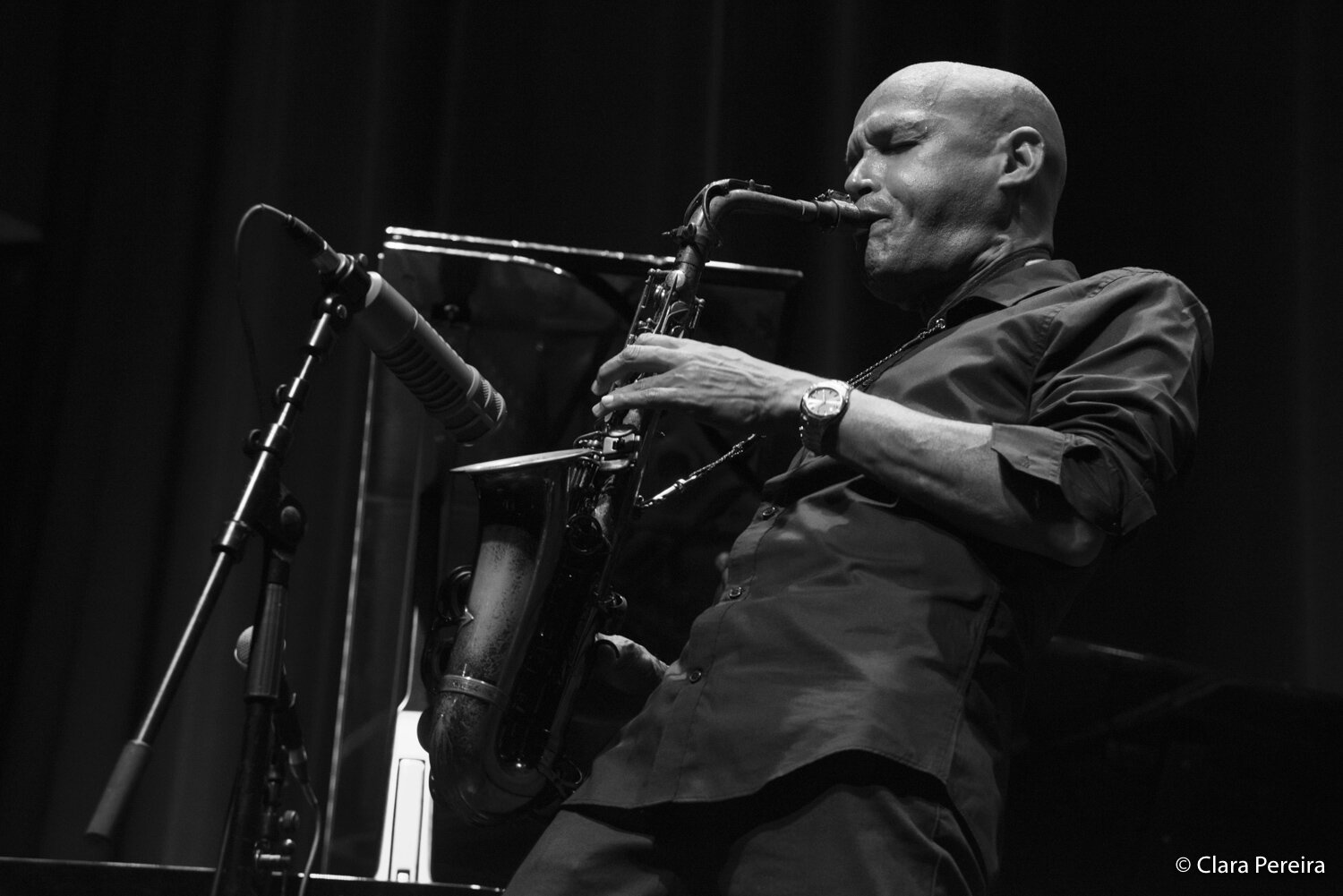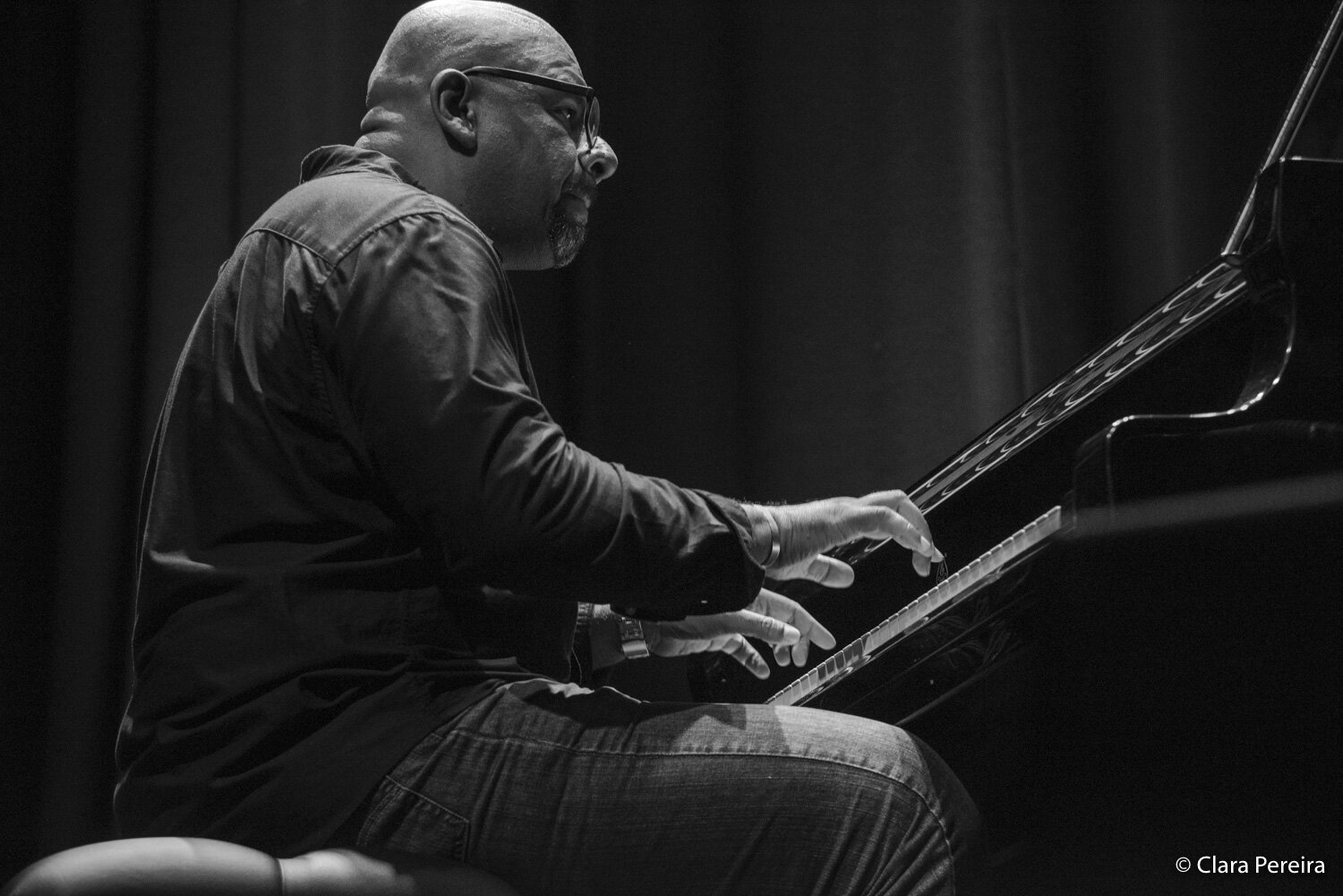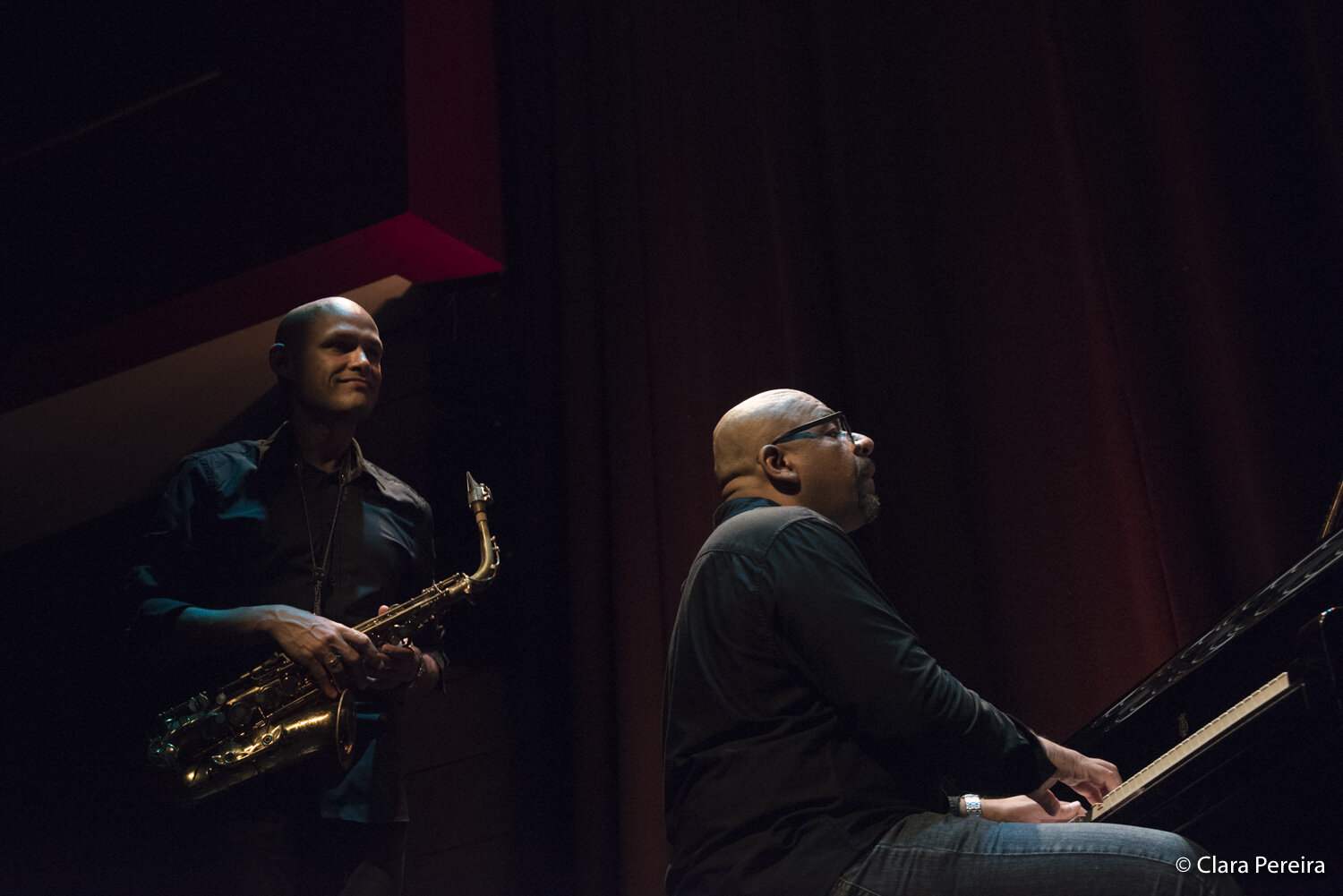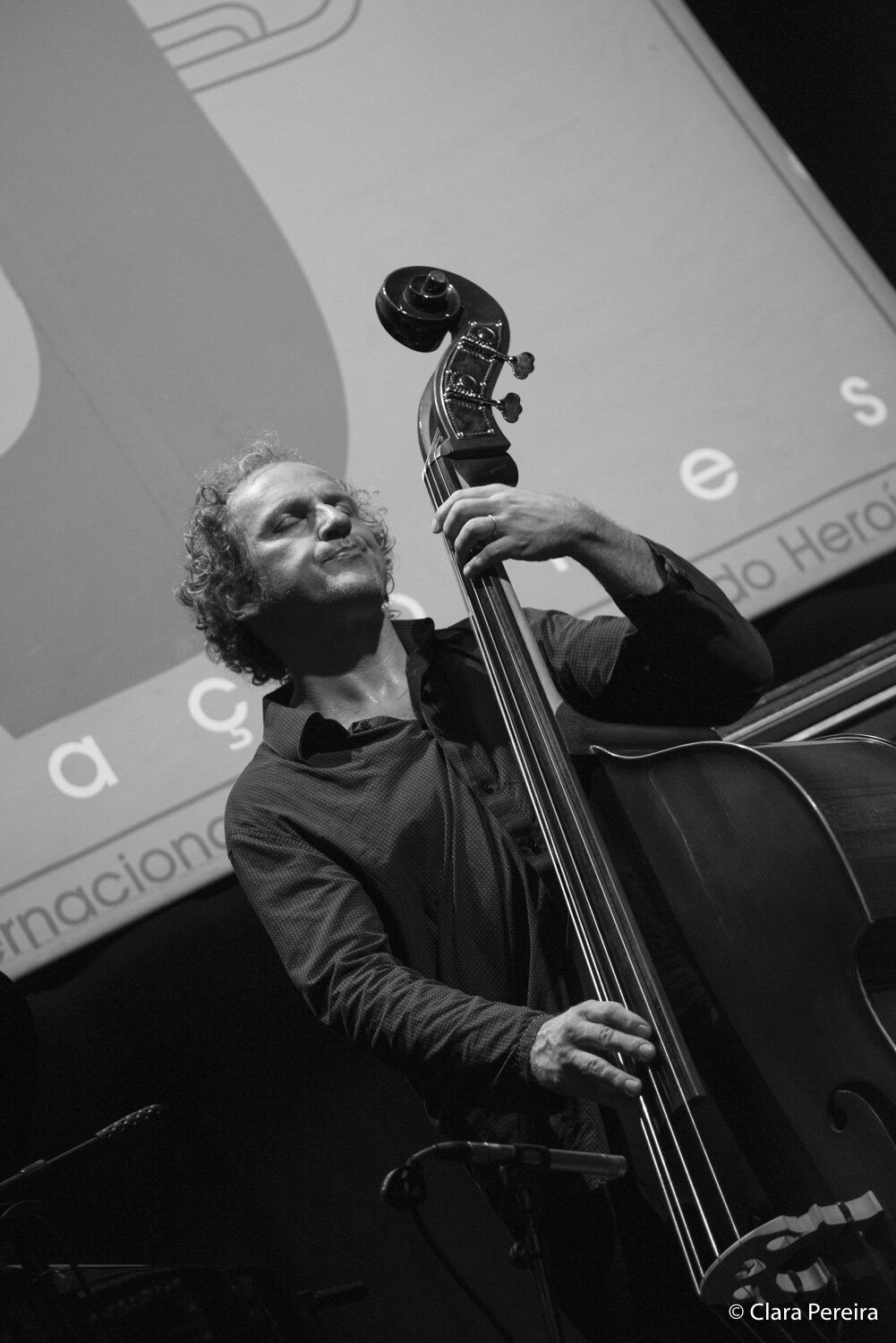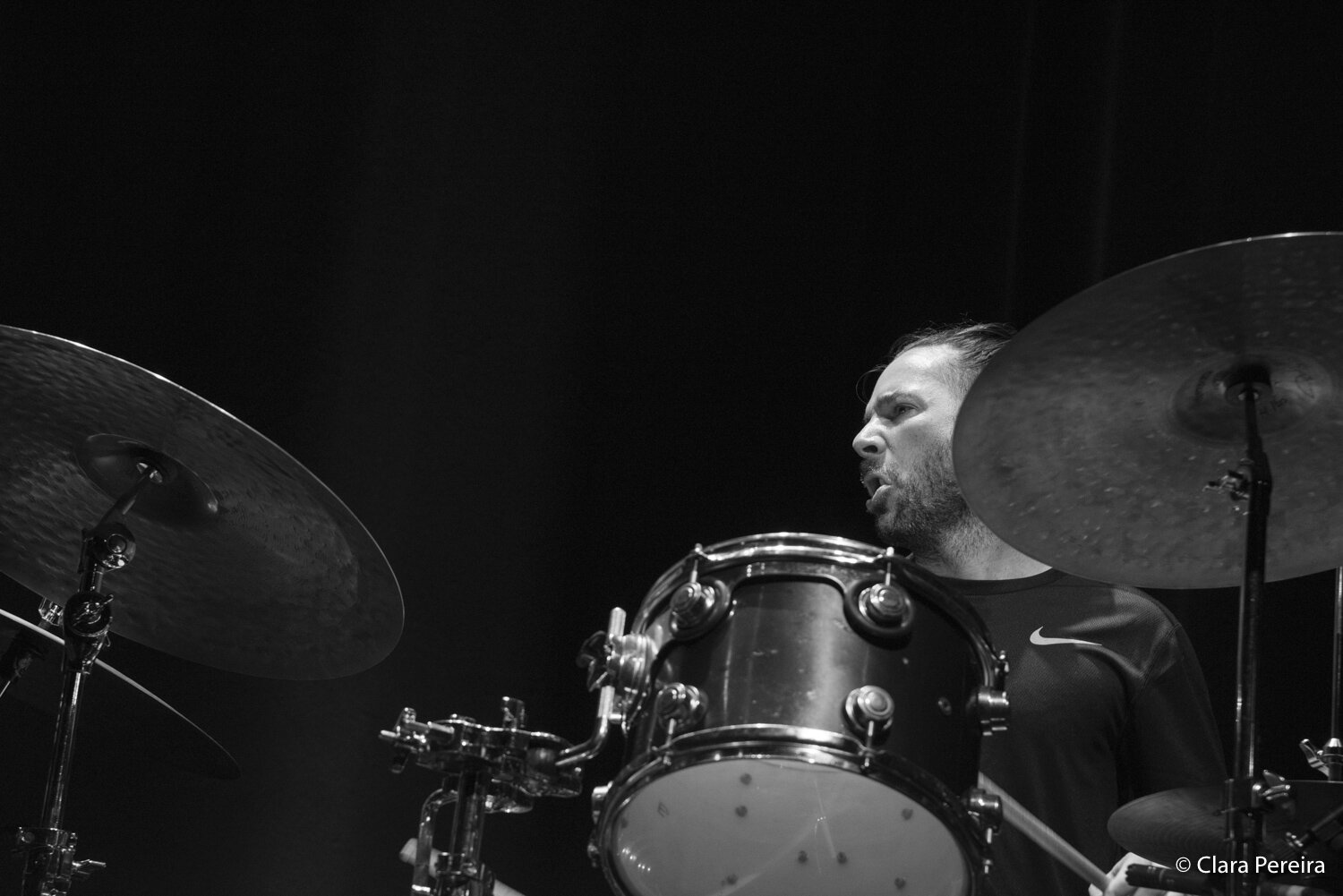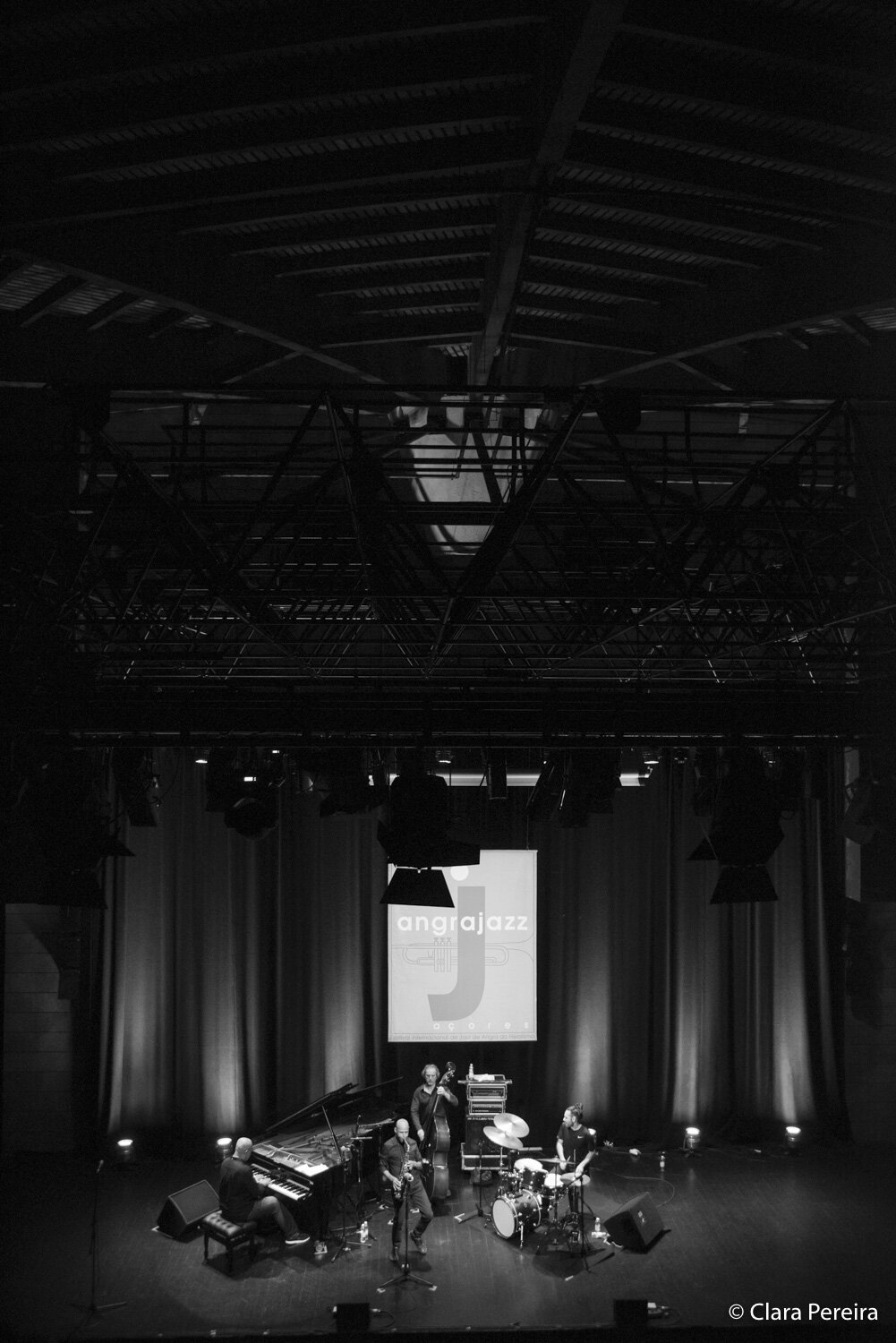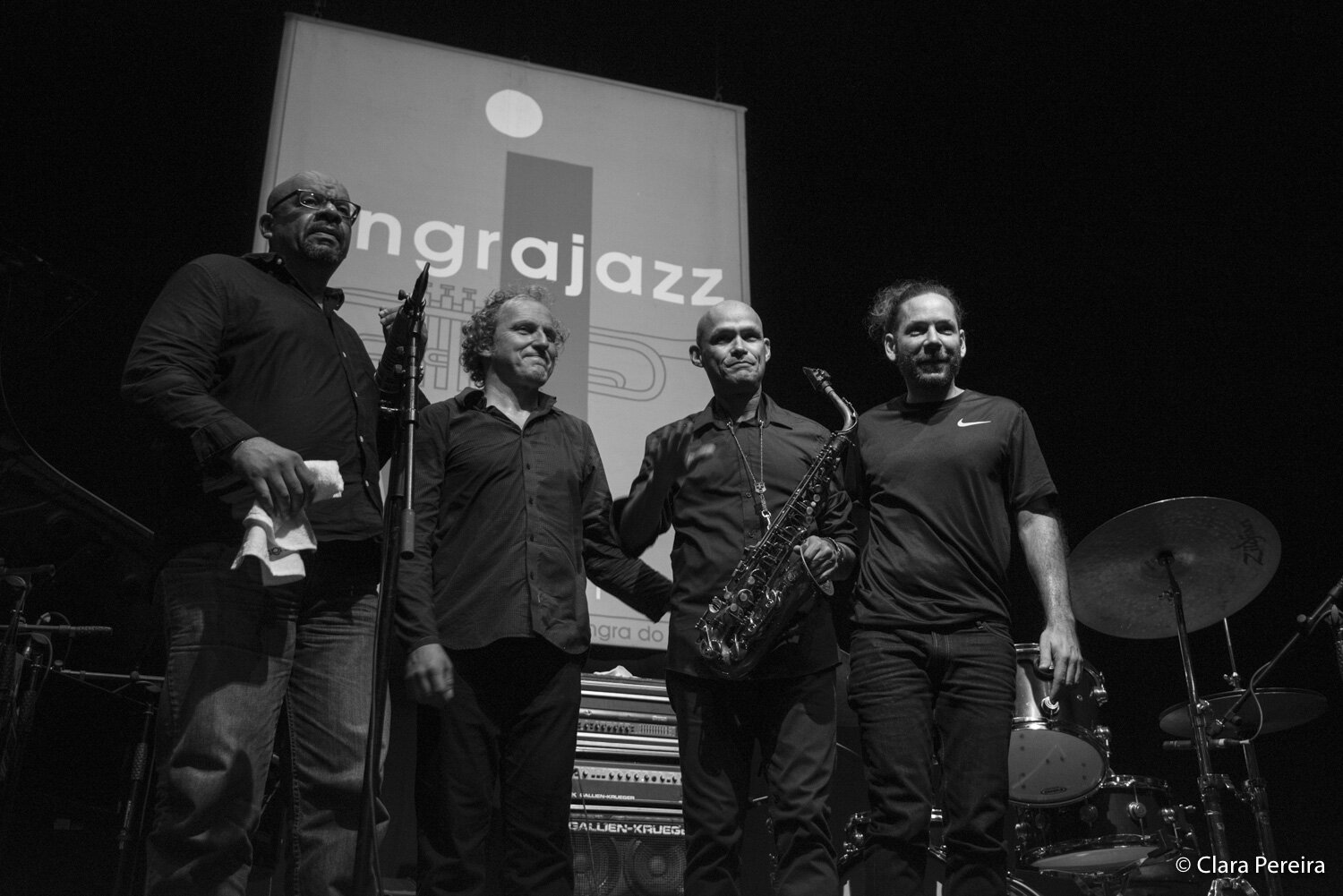ANGRAJAZZ 2019, TERCEIRA ISLAND, AZORES, PORTUGAL, OCT 3 TO 5
photography by ©Clara Pereira / text by Filipe Freitas
The 21st edition of AngraJazz, the Angra do Heroísmo International Jazz Festival that takes place in Terceira island, Azores, Portugal, was another wonderful opportunity to see highly respected figures from the European and American jazz scenes playing live in a gratifying celebration of the jazz culture in its traditional and modern currents.
Not even the flight cancellation to Terceira Island, one day prior to the beginning of the festival due to the passage of hurricane Lorenzo, affected the great spirit that surrounds this already iconic festival. Luckily, the island was found in the same great shape as we know it from the previous years. Hence, in addition to an encouraging festival lineup, those who visited the island were able to fully enjoy the warmth of its local people, amazing food, raw nature, and a relaxed atmosphere so characteristic from this inviting land surrounded by the Atlantic ocean.
Thursday, Oct 3rd
ORCHESTRA ANGRAJAZZ
The festival kicked in with the local 22-piece big band, AngraJazz Orchestra, whose performance, conducted by Pedro Moreira, had the pianist/composer/conductor Carlos Azevedo, co-leader of Matosinhos Jazz Orchestra, as a special guest. He joined the ensemble after the first couple of tunes, namely, Carlos Bica's “Blue is Love” and a touching rendition of “I'm Old Fashioned”, which featured Lisbon-based Danish trombonist Claus Nymark on a melodic statement where every single note breathed deeply, naturally identifying its own place over the harmony. Curiously, these happened to be the most attractive numbers of the repertoire, since for some reason I was unable to relate with Azevedo's jazz compositions for big band, at least in this particular context. In addition to the waltzing "Heritage", the Latin-flavored "Labirinto", and the mournful ballad "Noite", they played “Oube Lá”, whose attempted dialogue between piano and keyboards did not reach the desired impact. Still, and considering the obvious limitations of an island-based ensemble that can only manage to rehearse once or twice a month, there was an enormous effort from the musicians to do things right, which is laudable and a badge of honor for the festival directors and local enthusiasts. For the interpretation of Bernardo Sassetti’s “Olhar”, Azevedo and Moreira switched positions, and while the former conducted according to his own arrangement, the latter was featured as a soloist, blowing the tenor saxophone with keenness. The session ended comfortably with “FPWL”, piece written by Azevedo and included on the orchestra's second album, AngraJazz.
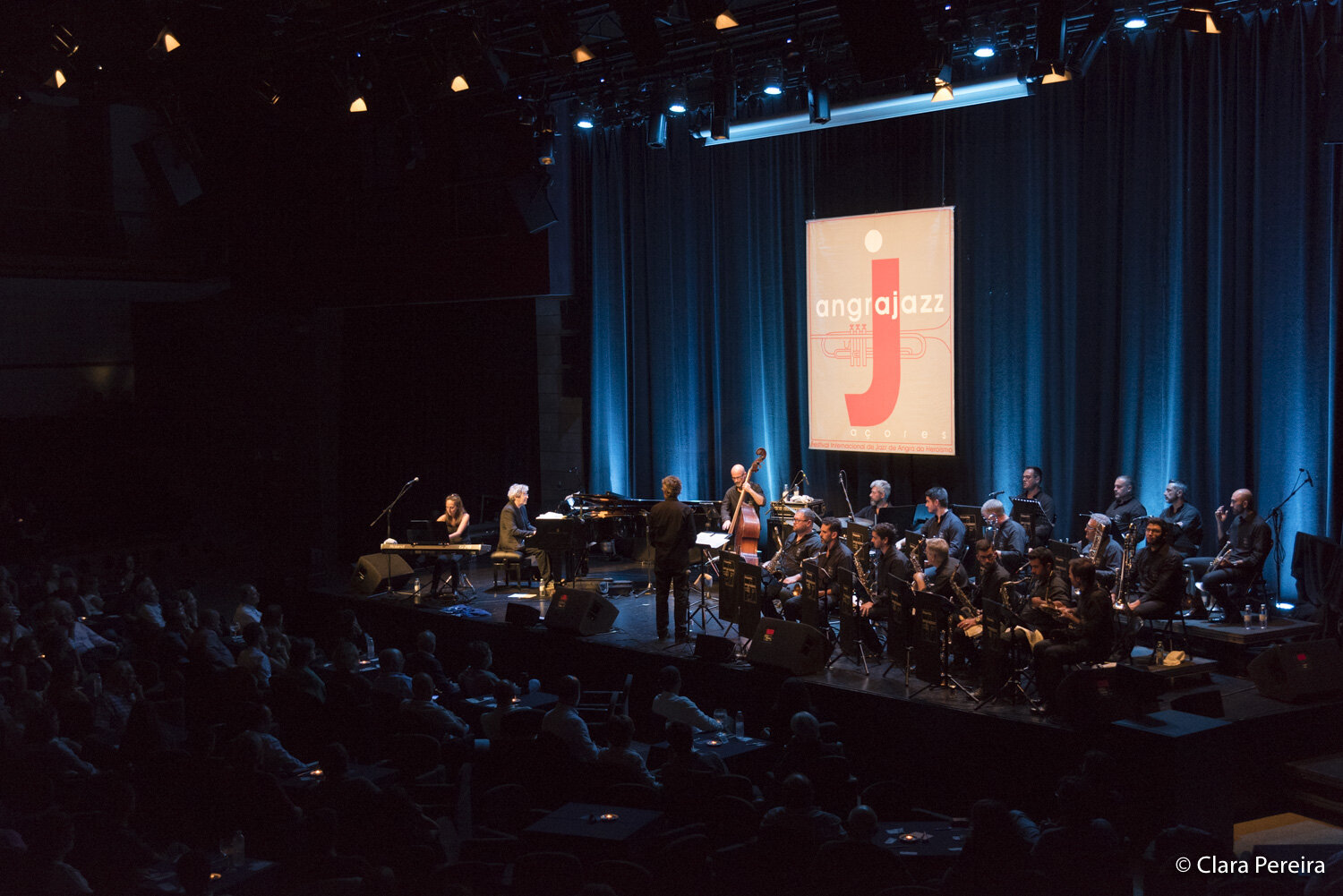
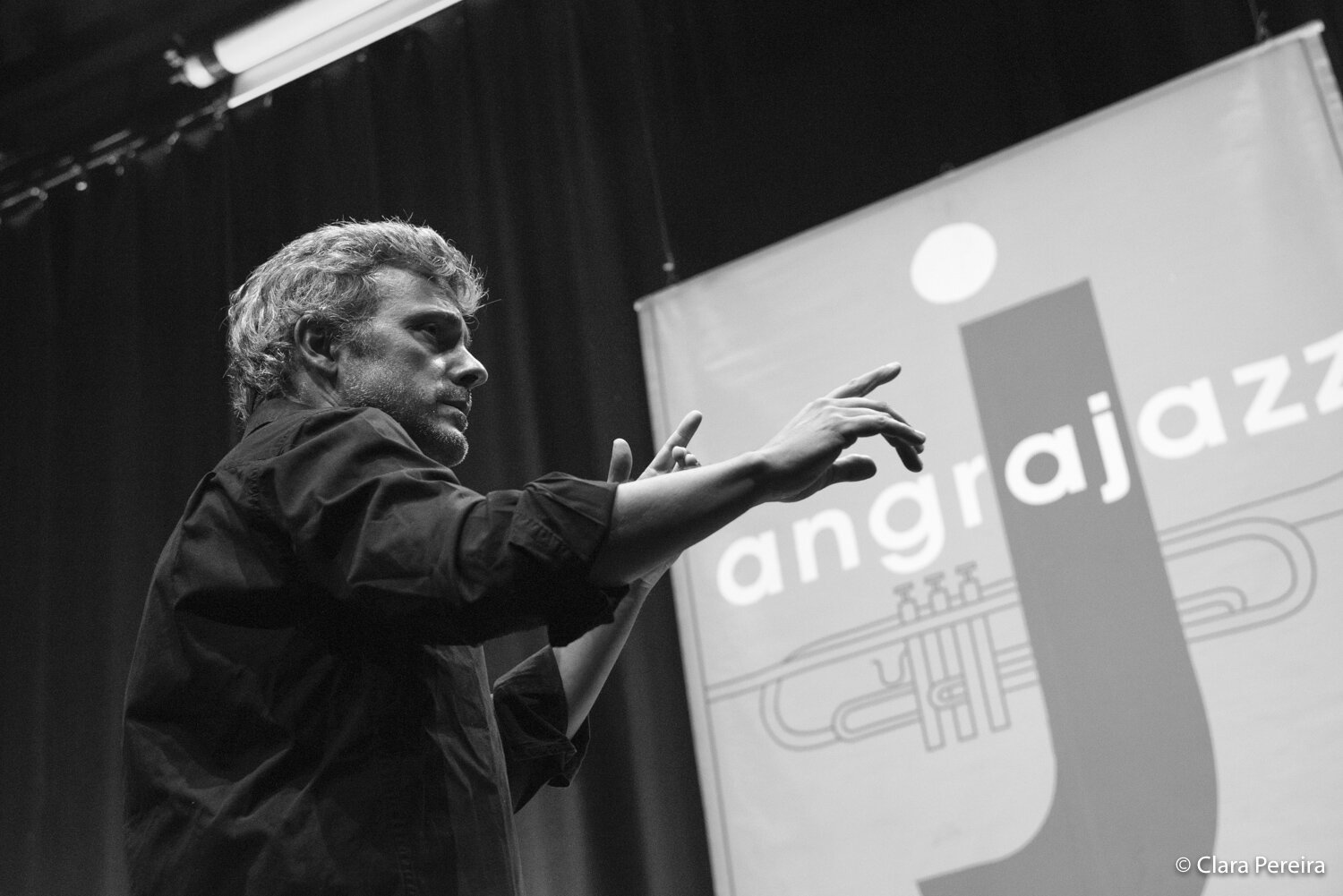
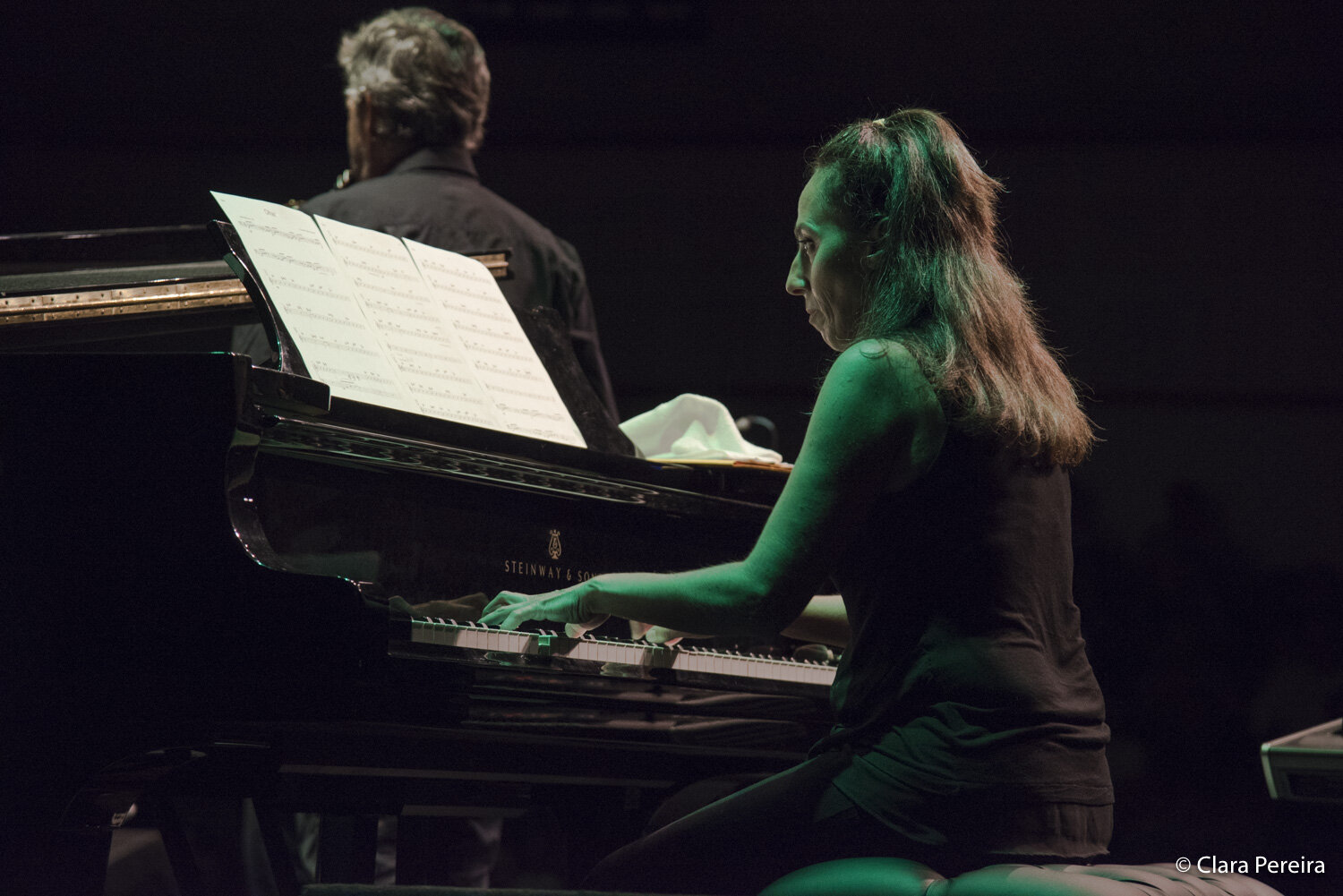
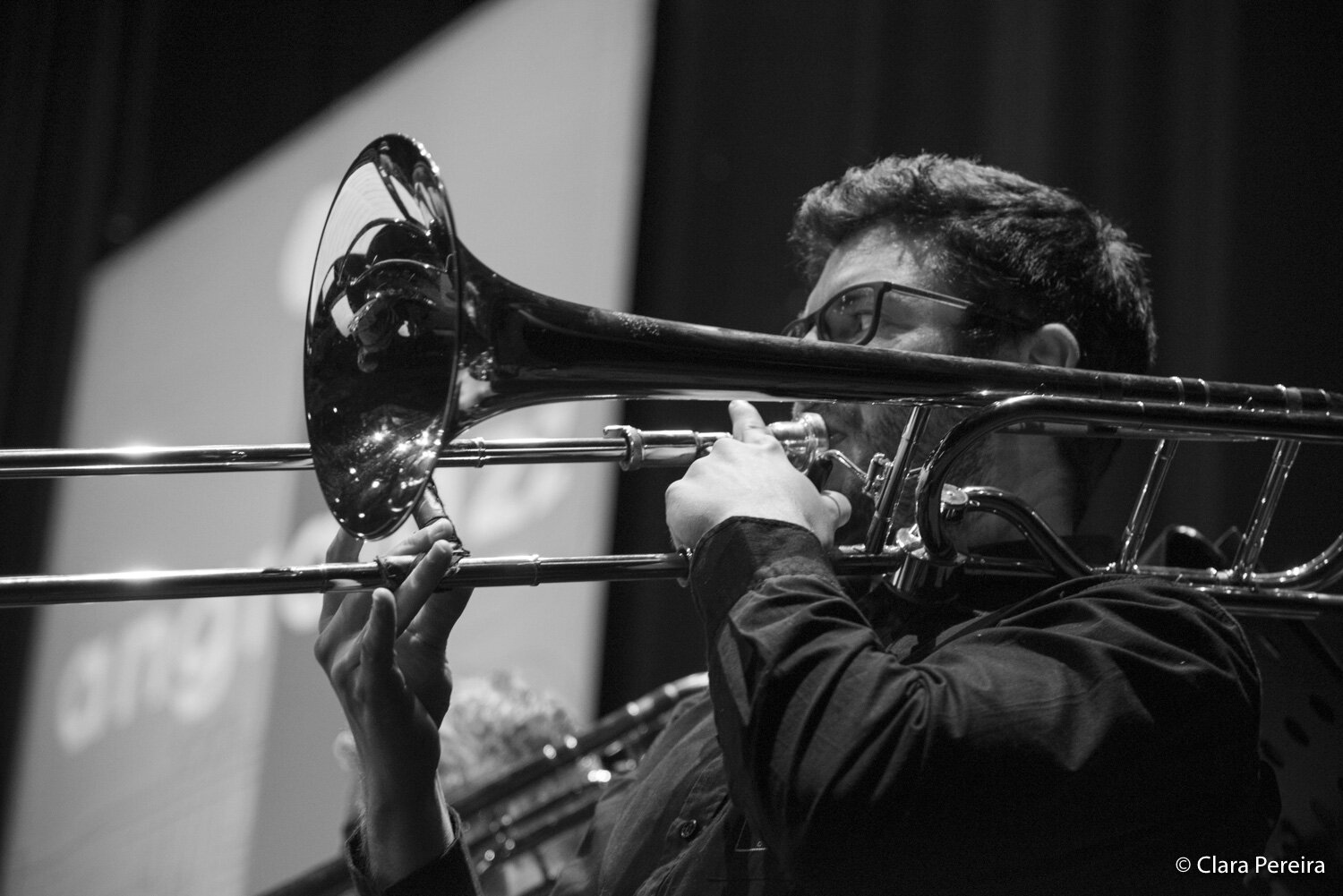
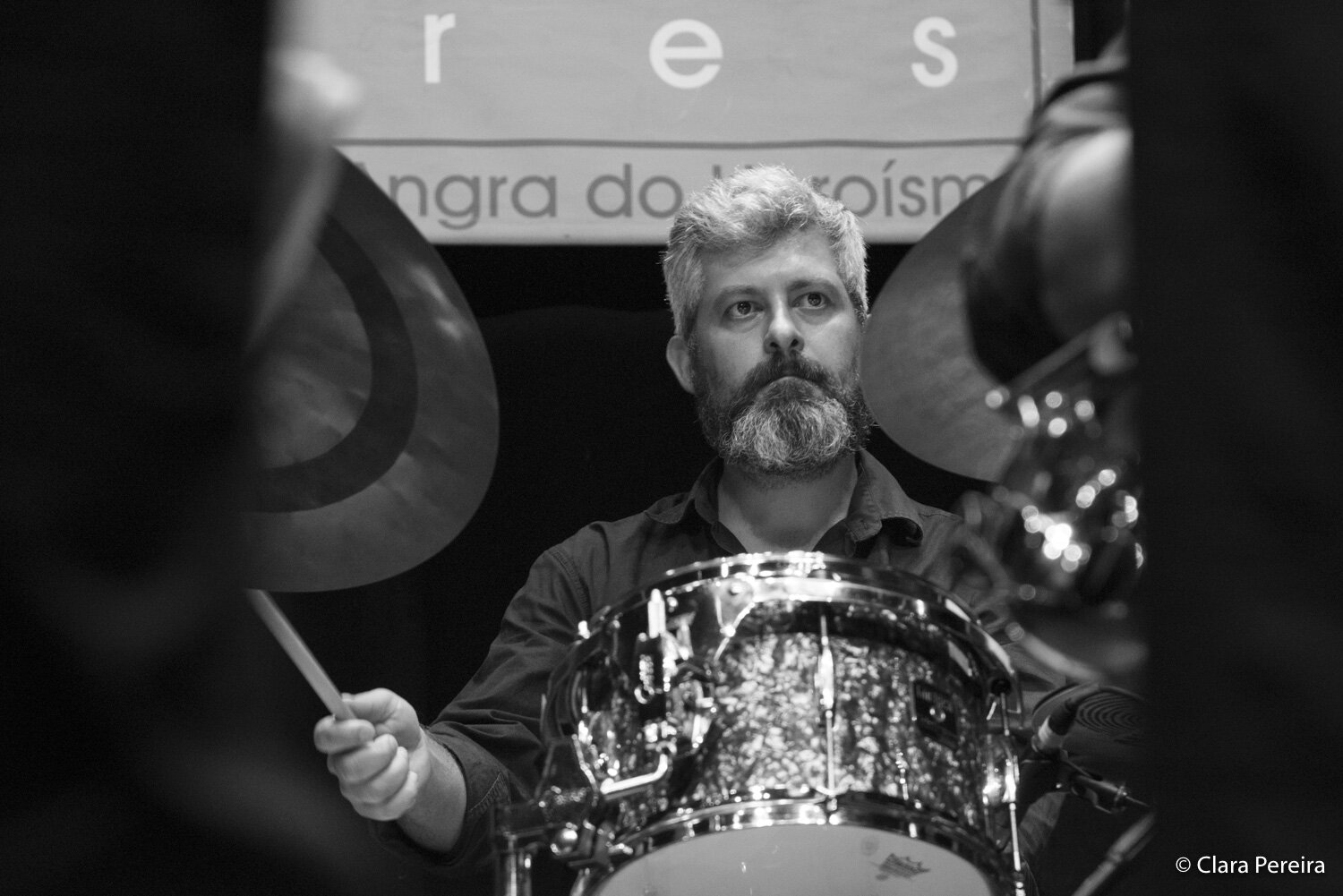
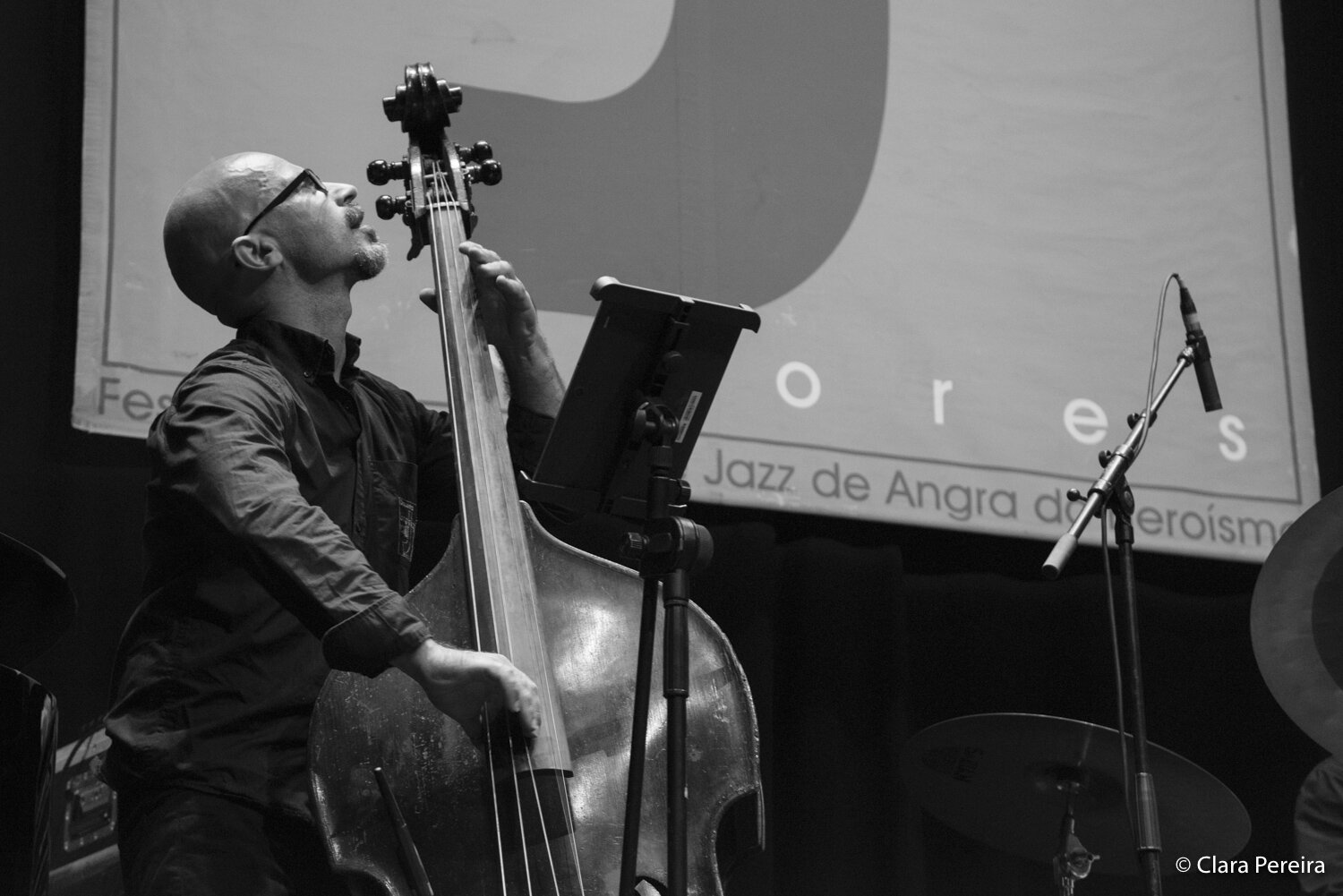
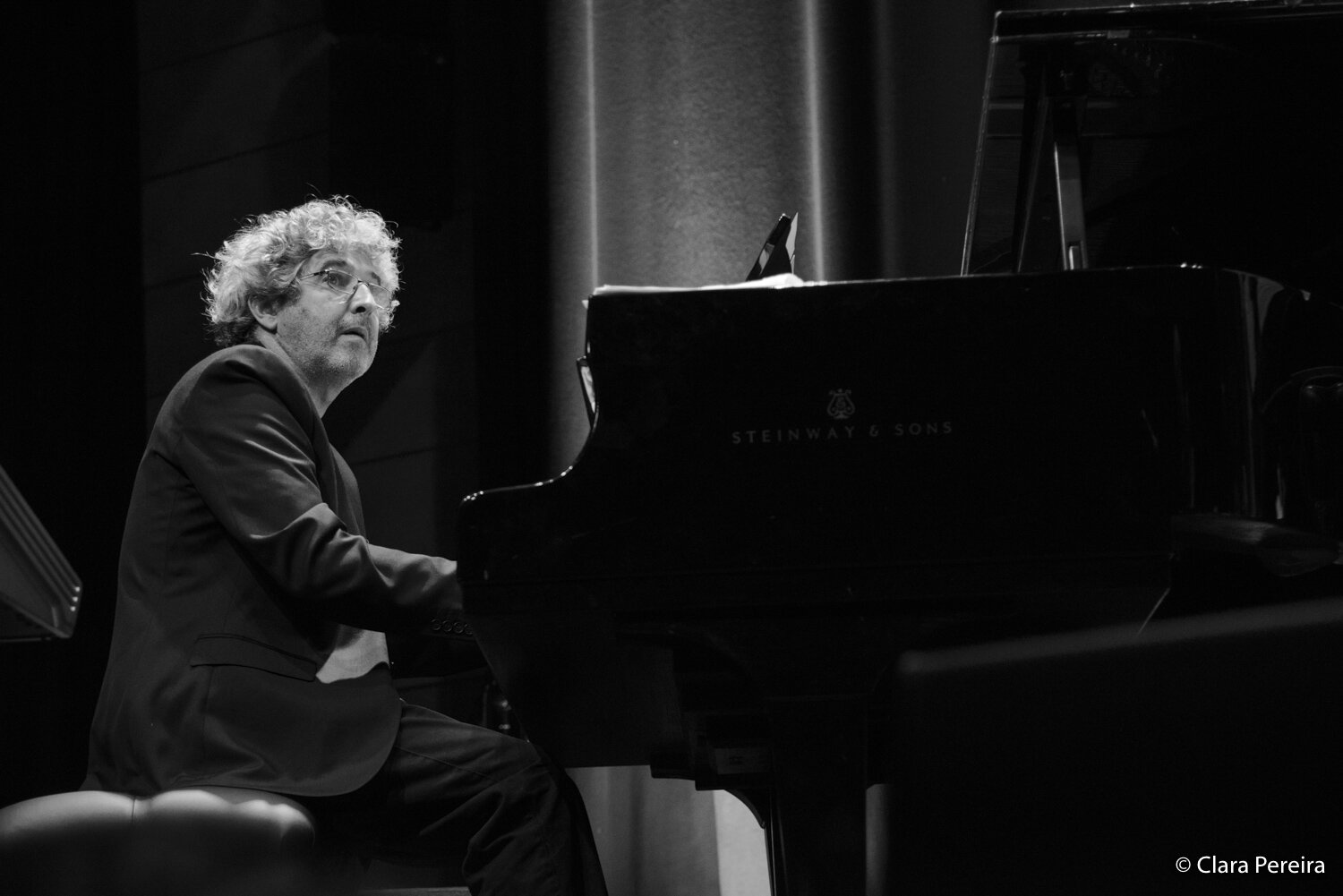
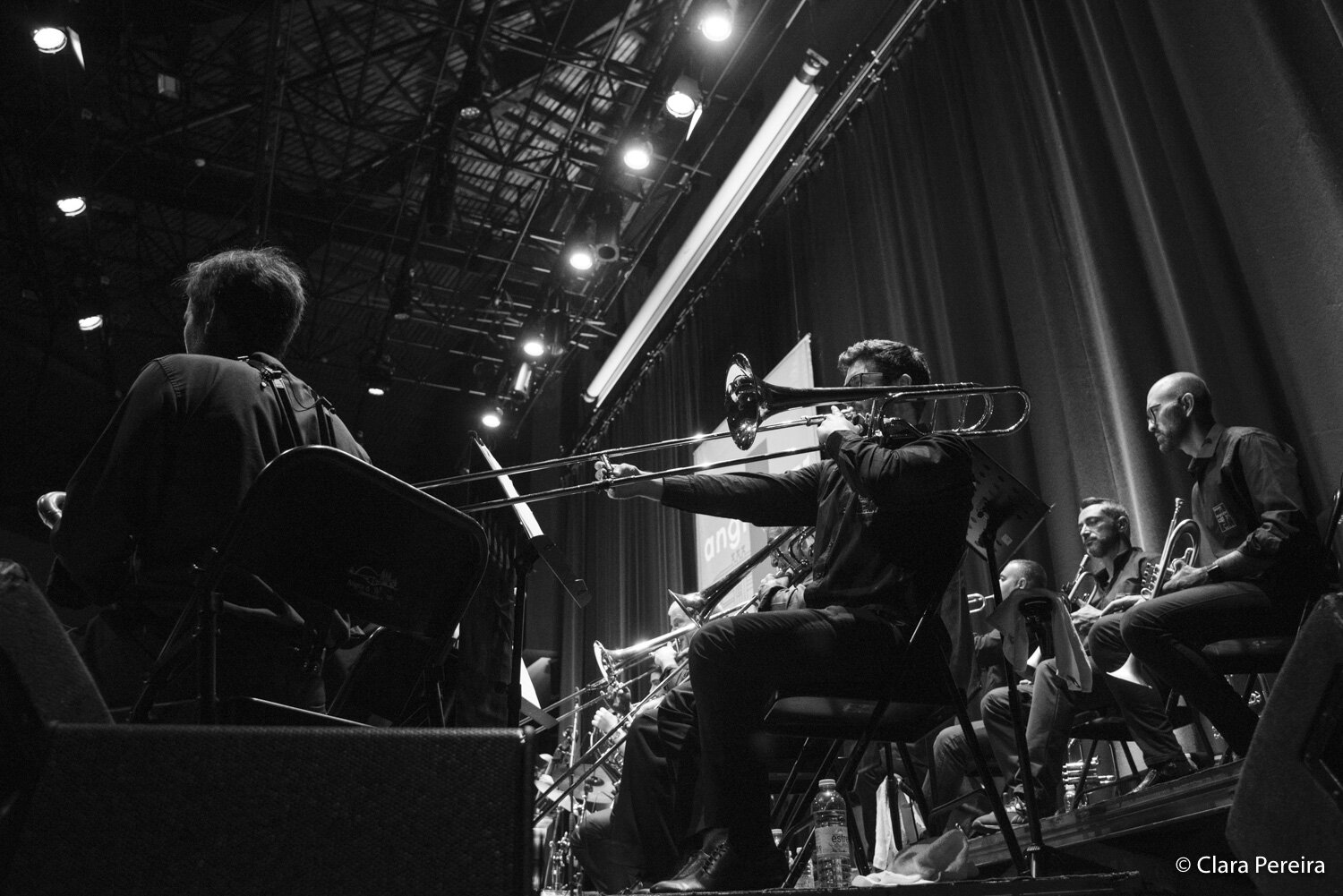
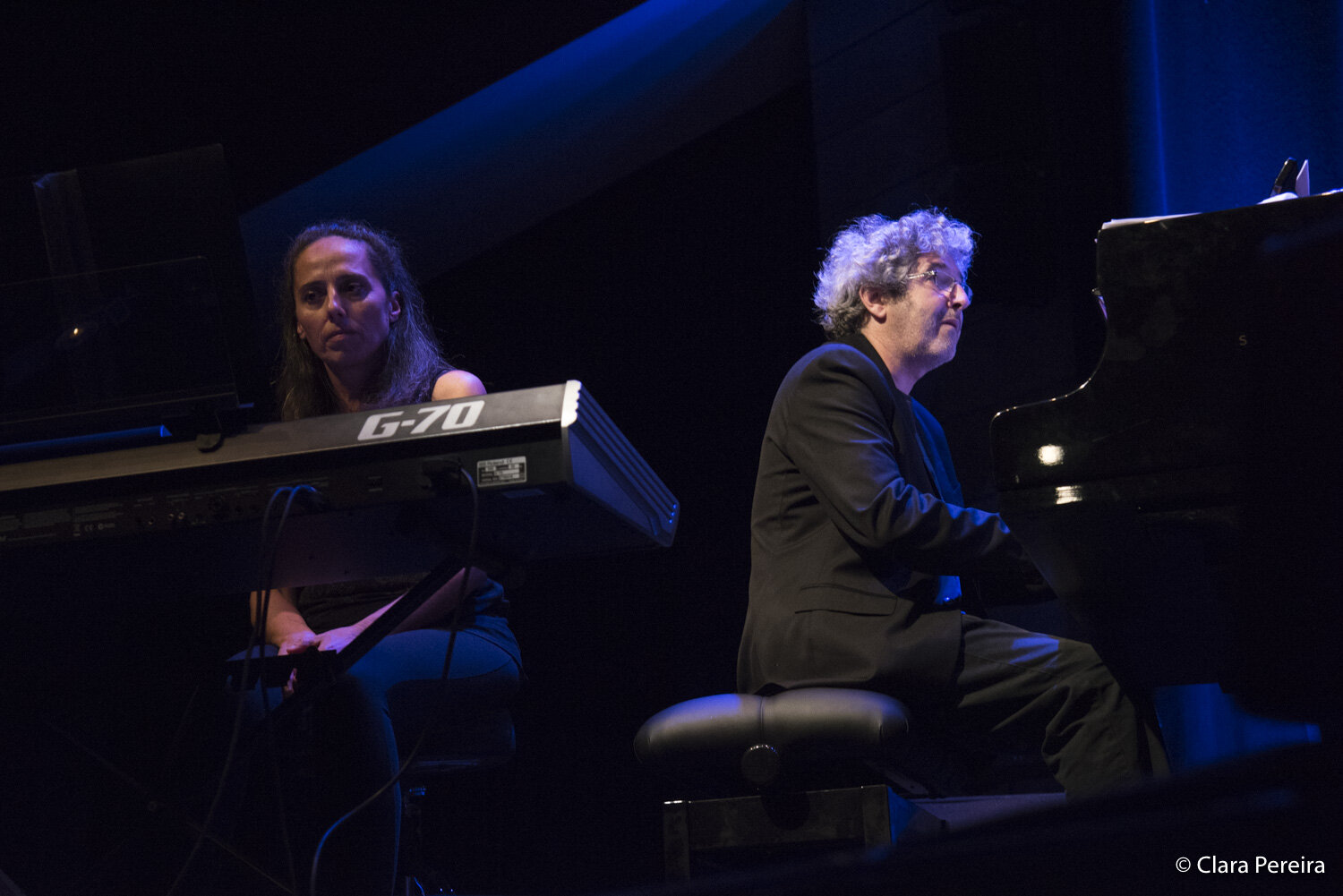
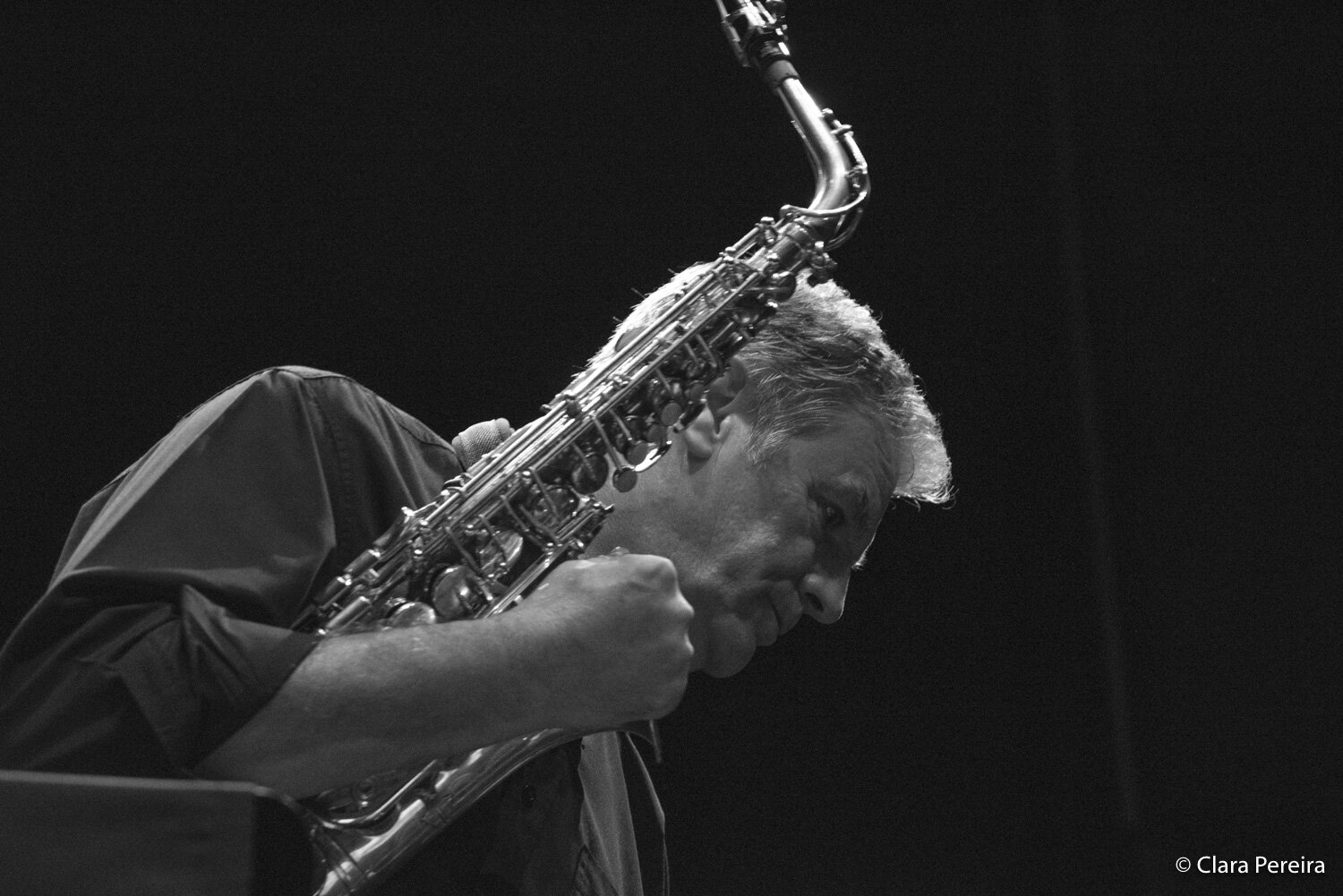
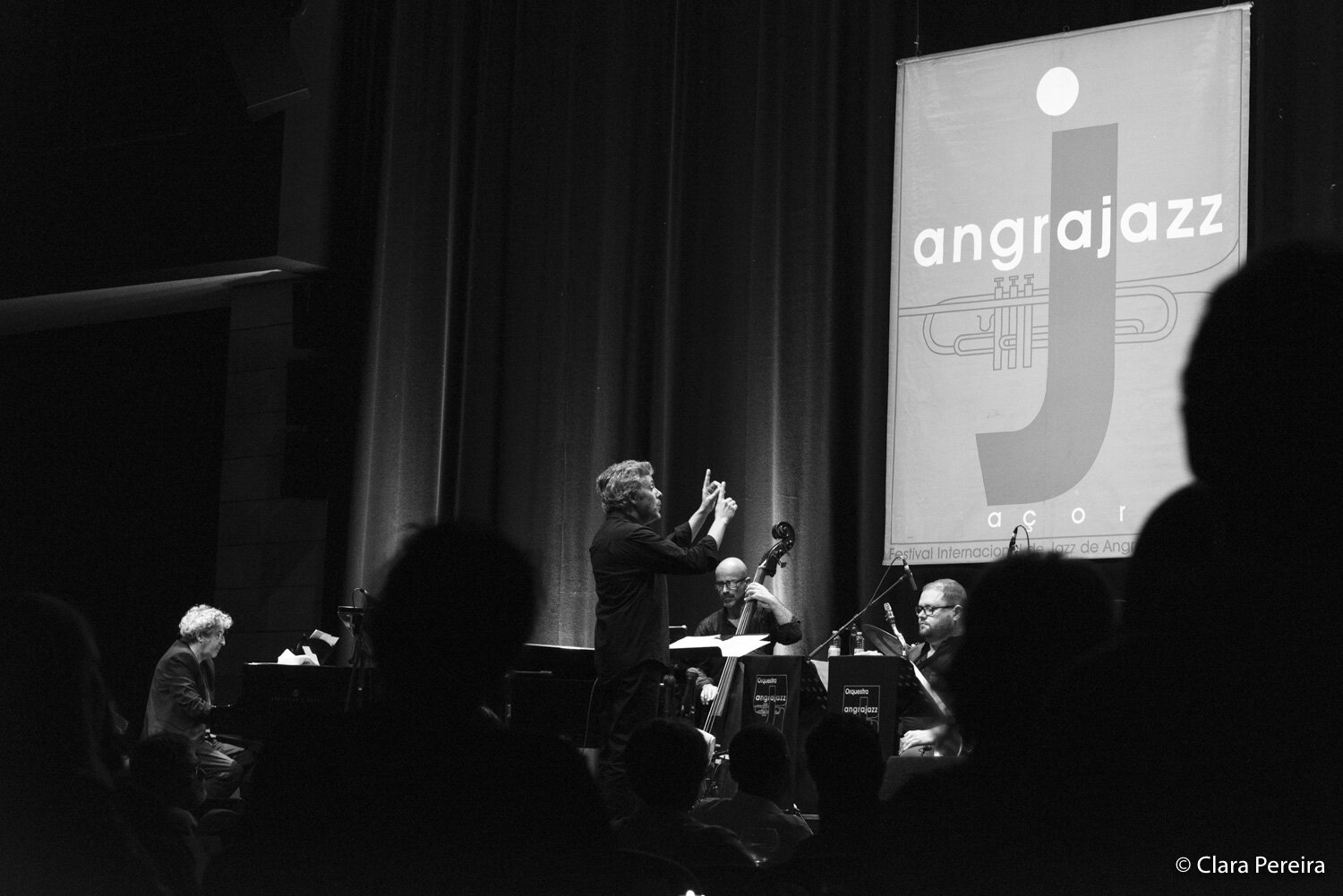
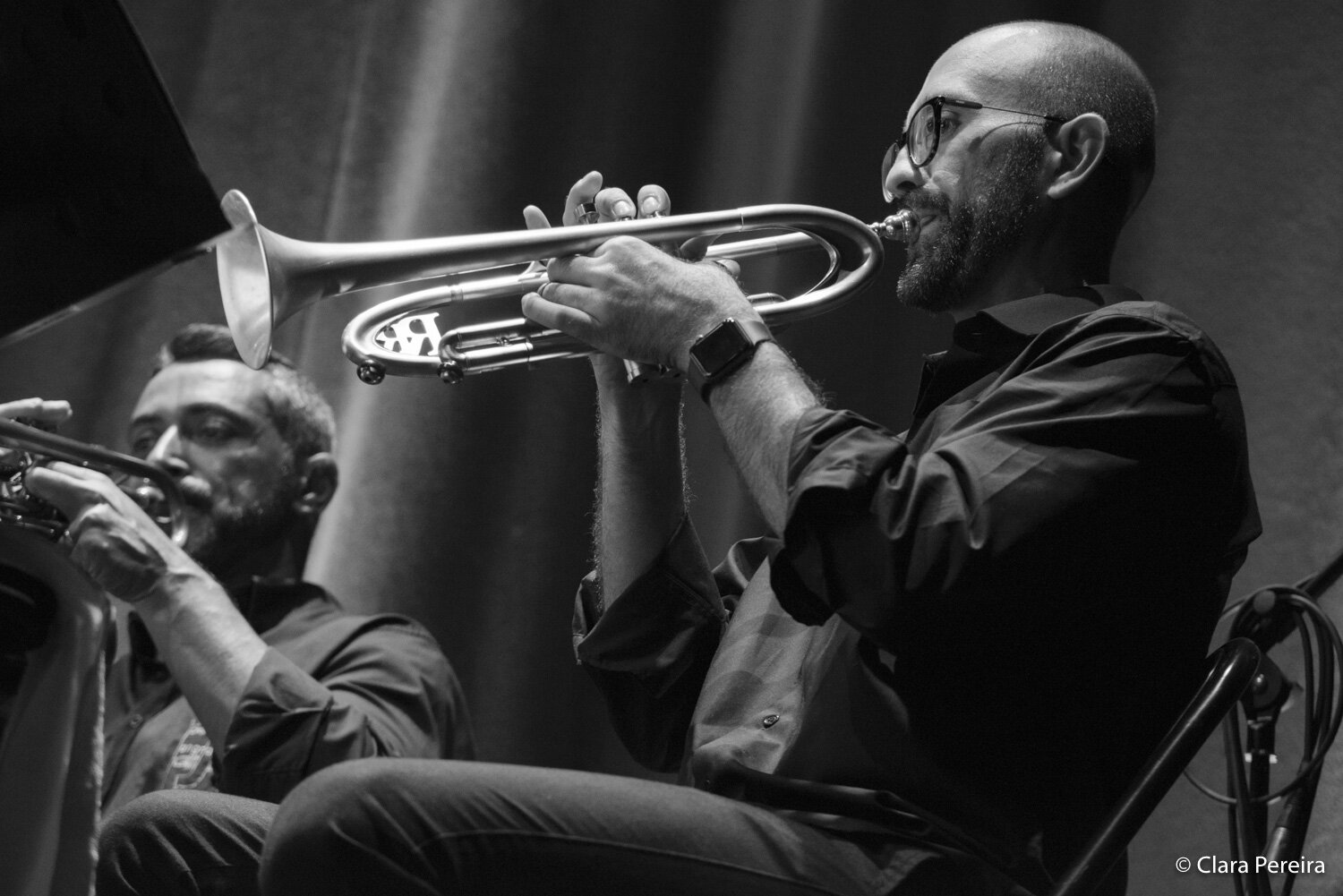
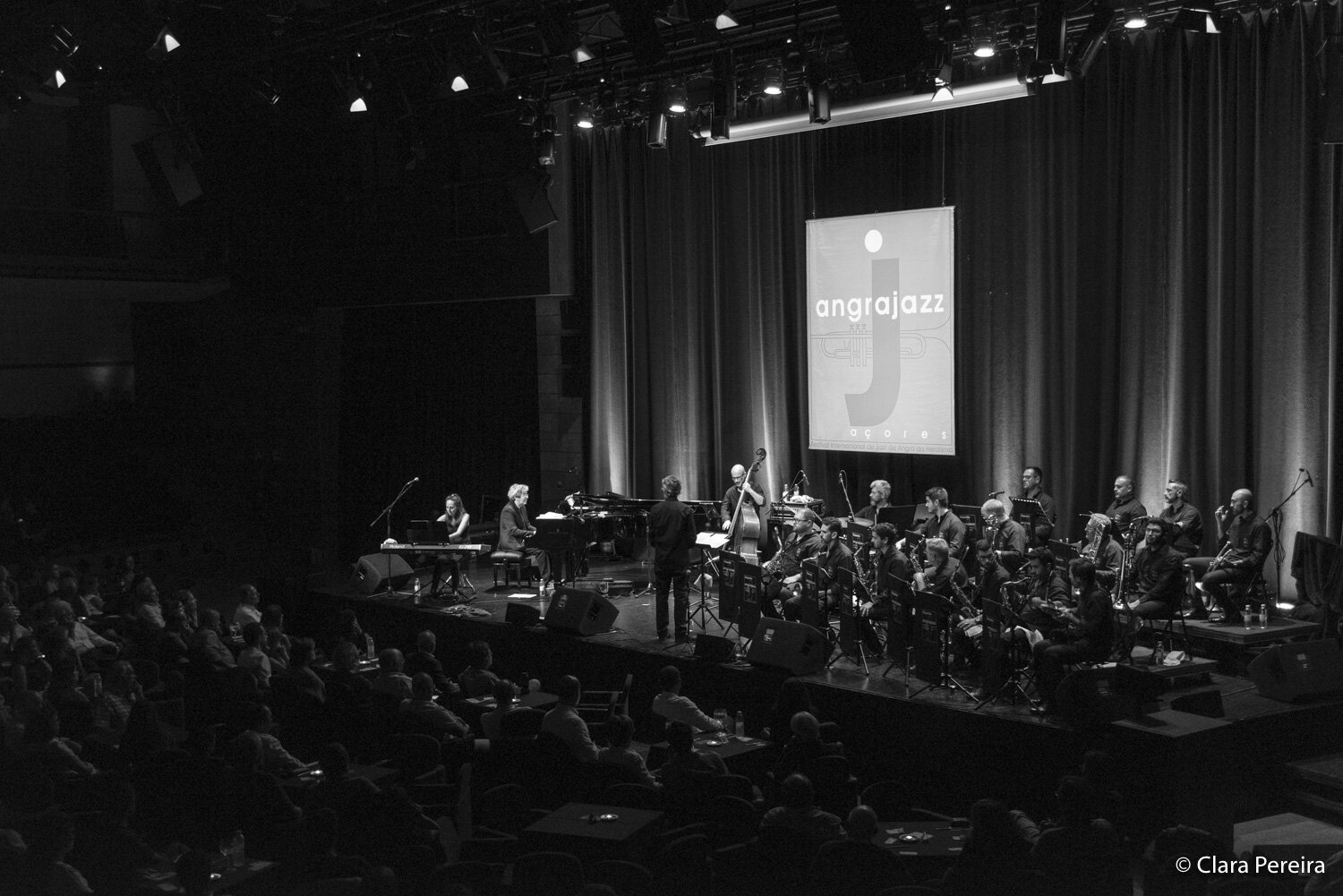
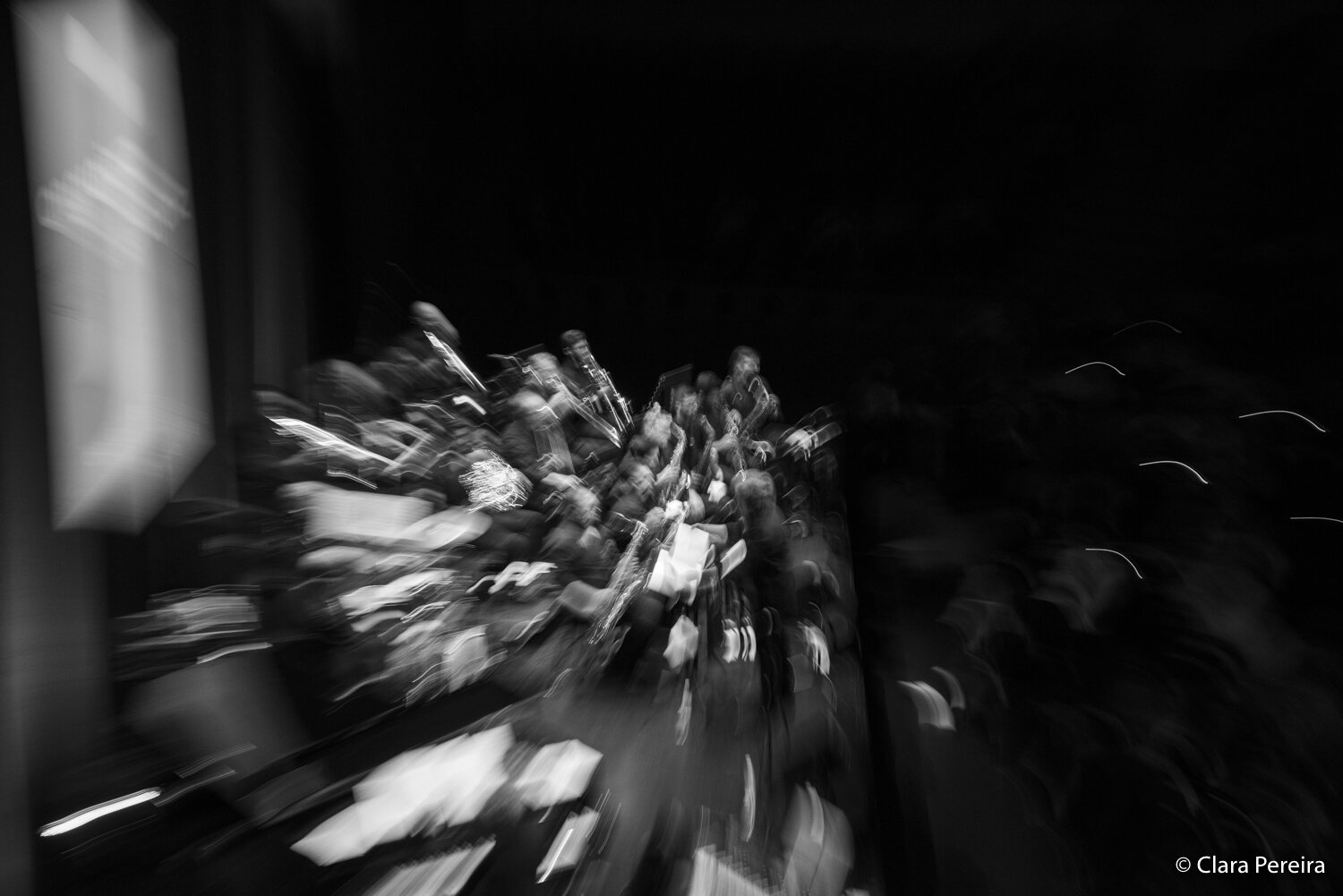
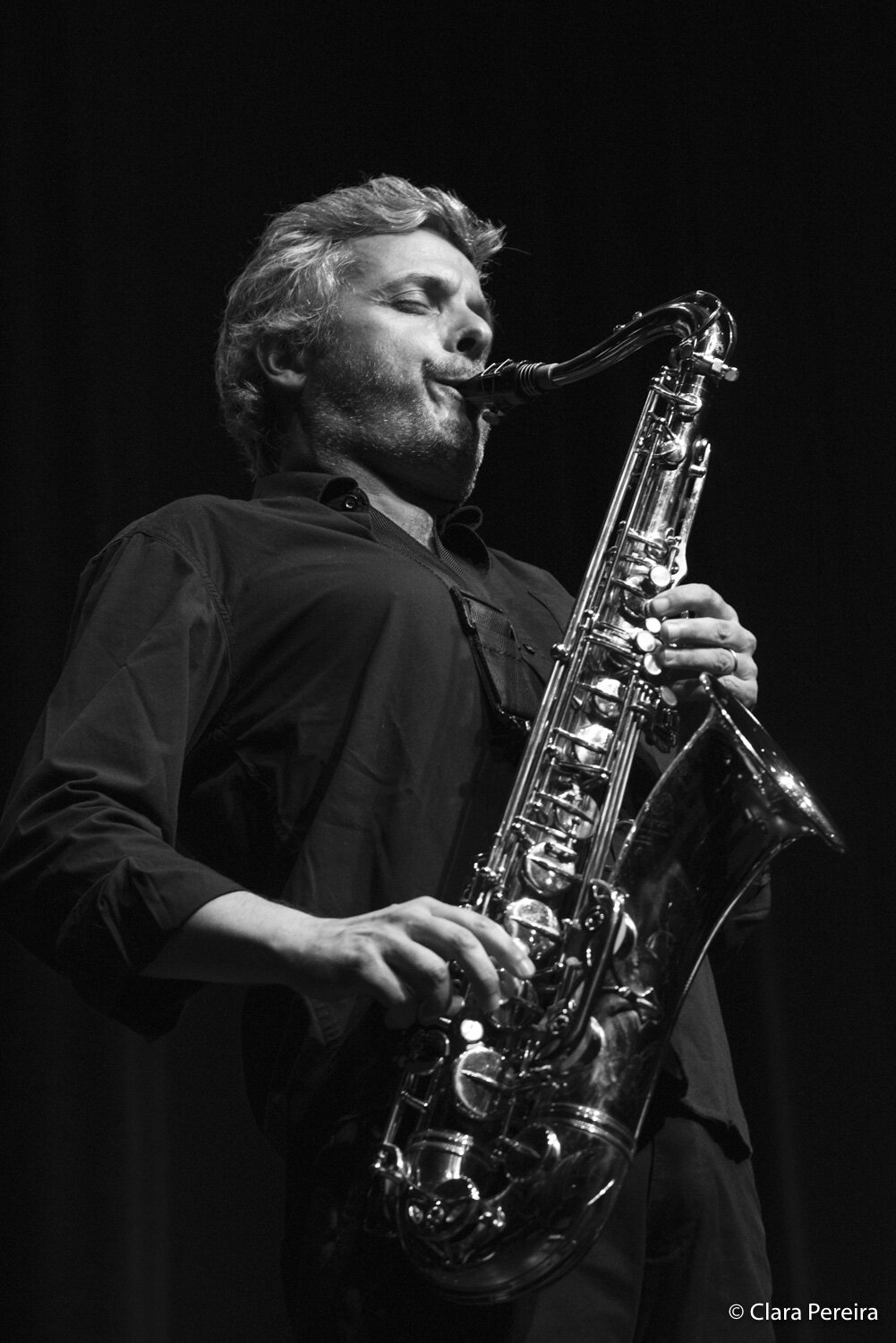
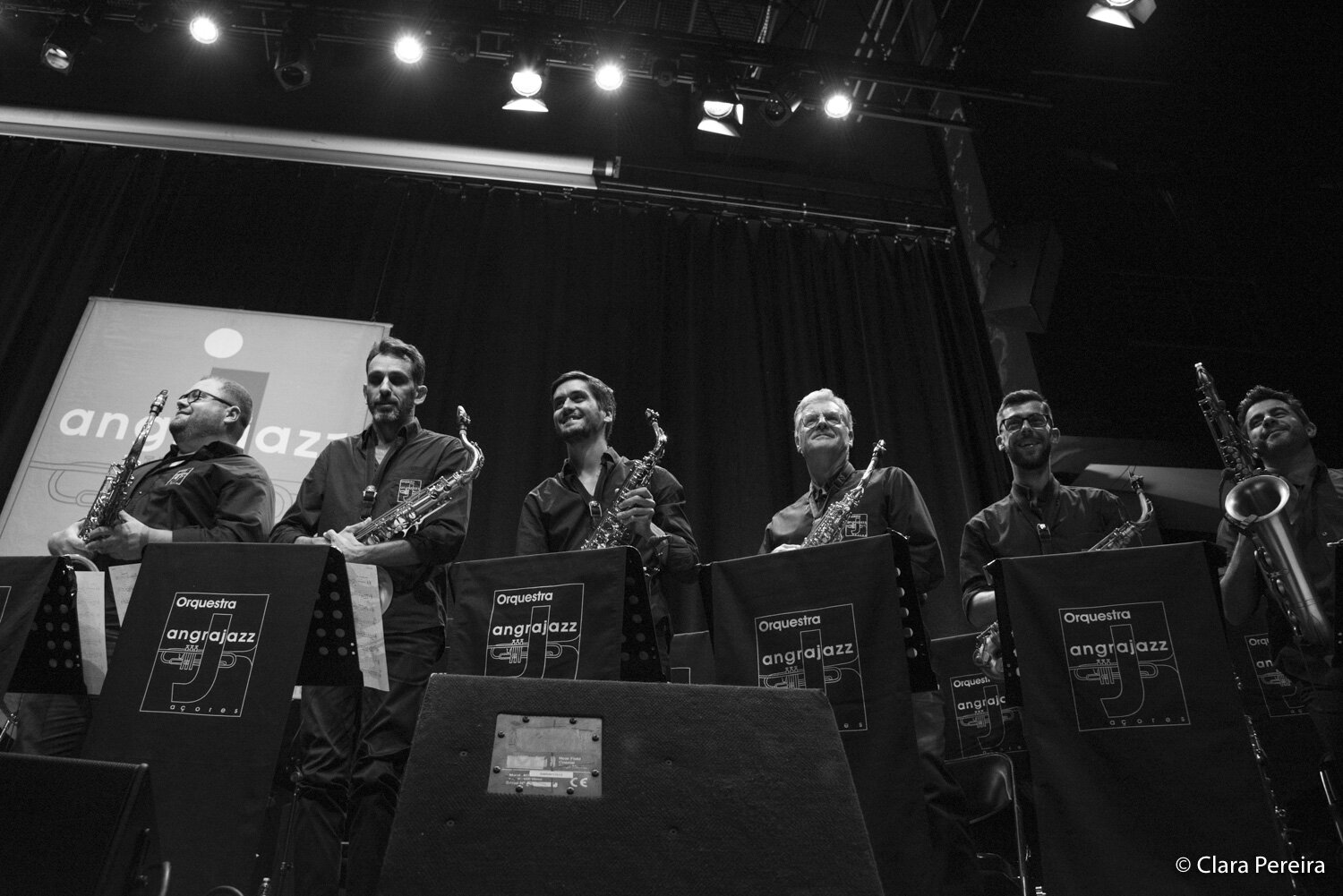
EMILE PARISIEN SFUMATO QUINTET
French saxophonist Emile Parisien brought all his energy onto stage, embracing a stylish eclecticism in the company of pianist Roberto Negro, guitarist Manu Codjia, bassist Simon Tailleu, and Portuguese drummer Mário Costa. For our discontentment, the 83-year-old virtuoso clarinetist Michel Portal, a frequent guest in Parisien’s gigs, couldn’t be present as it had been announced due to health problems. It was a shame, since I always have wanted to see him playing live, but it was nothing that compromised the group’s solid performance.
With a penchant for genre integration, the band regularly achieved a cohesive whole, passing through a concoction of rock, boogie woogie, and electrified jazz funk with a cinematic classical intro (on the three-part “Le Clown Tueur De La Fête Foraine"); lamenting eastern sounds with bass pedals and crescendos as main sources of tension (“Préambule”); an accessible mix of swinging post-bop and avant-jazz packed with rhythmic figures (Joachim Kuhn’s “Missing a Page”); and danceable indie rock prepared beforehand with unhurried pedals, dreamy tones, and agile cross stick maneuvers (“Arome de L’Air”, also penned by German pianist Joachim Kuhn). Accompaniment-wise, Codjia was more noticeable and appealing than Negro, with bass and drums cooperating tightly to guarantee rock-solid textures over which the soloists could embark on melodic rollercoasters. The bandleader, equally expressive in his phrasing and physical movements, revealed playfulness in the form of spontaneous tongue-in-cheek incursions, whereas the versatile Codjia displayed an effortless command of different styles and techniques (from slide guitar to metal-inspired licks to smooth jazz harmonies and blues-based language), becoming a preponderant element in the outcome. The contagious liveliness and improvisatory dynamism of the Quintet Sfumato’s music conquered the audience and everyone left, if not enthralled, at least visibly satisfied.
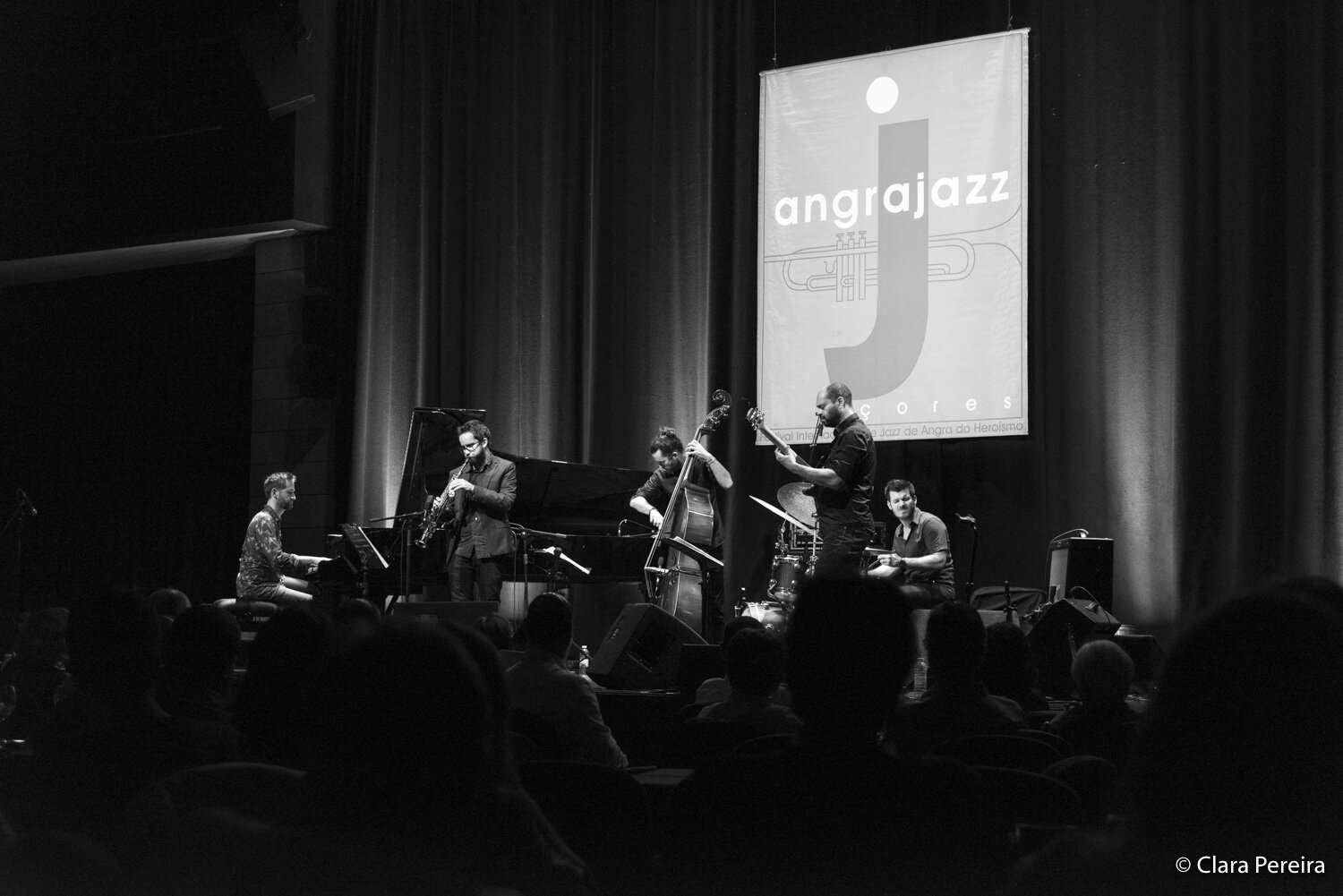
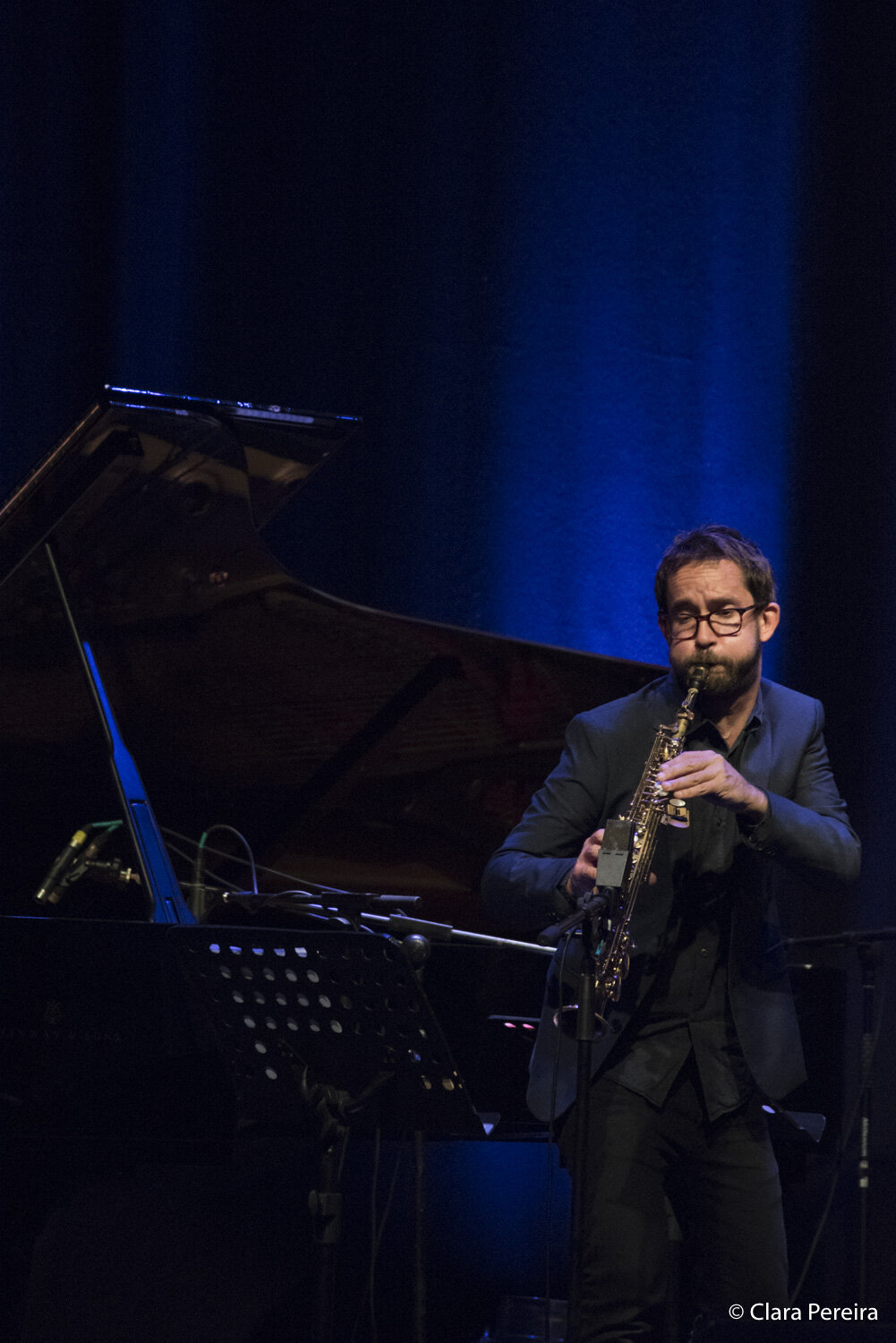
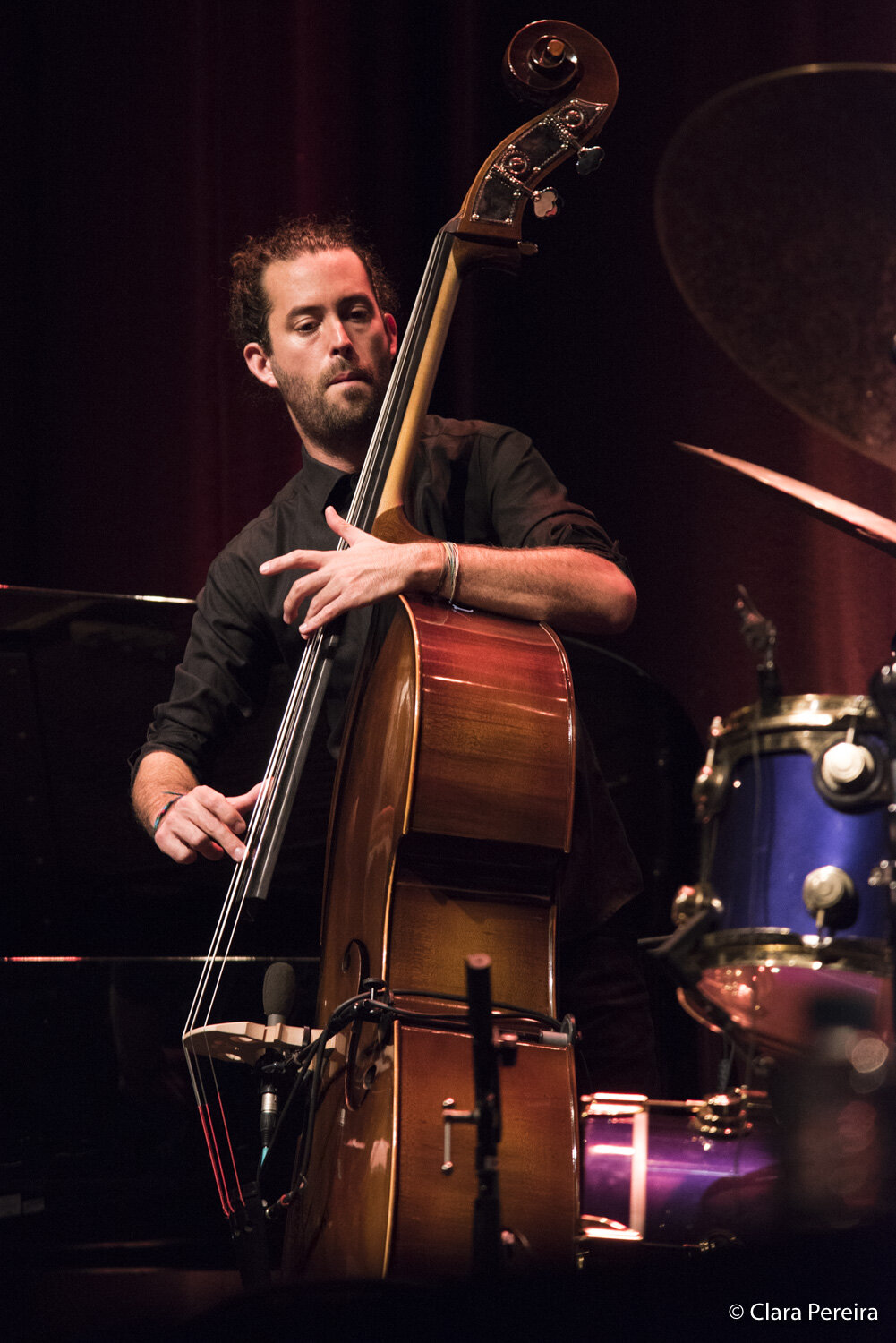
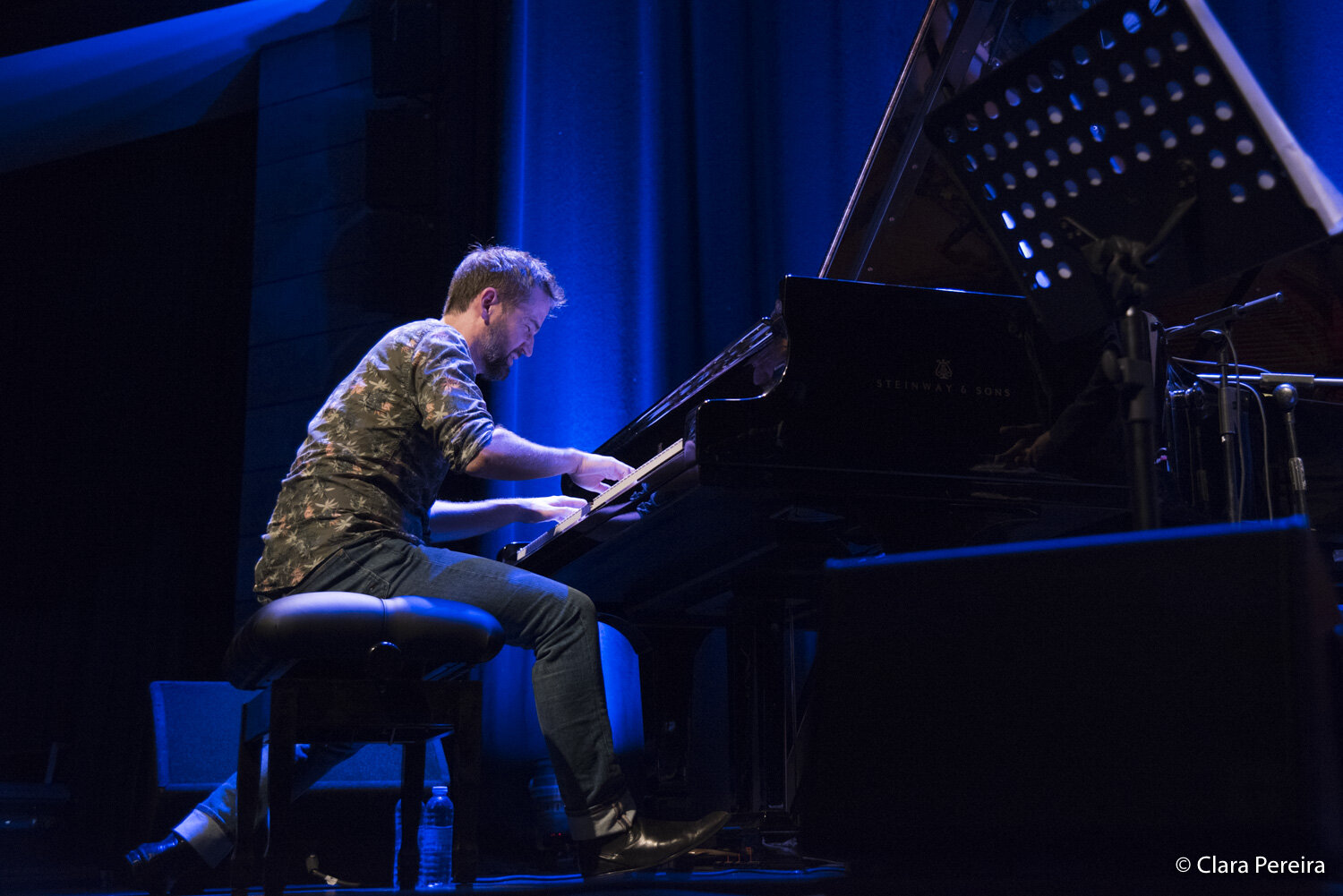
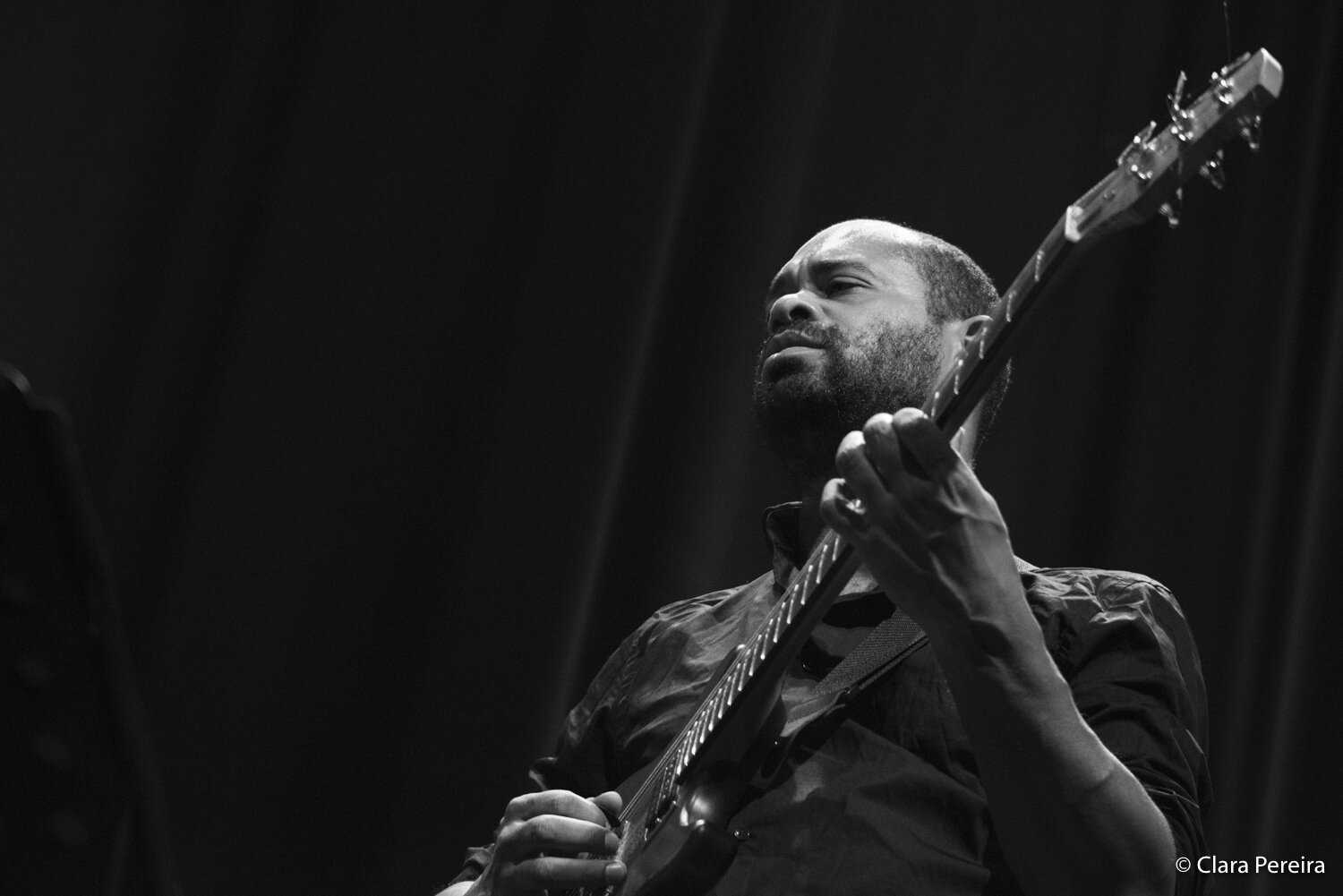
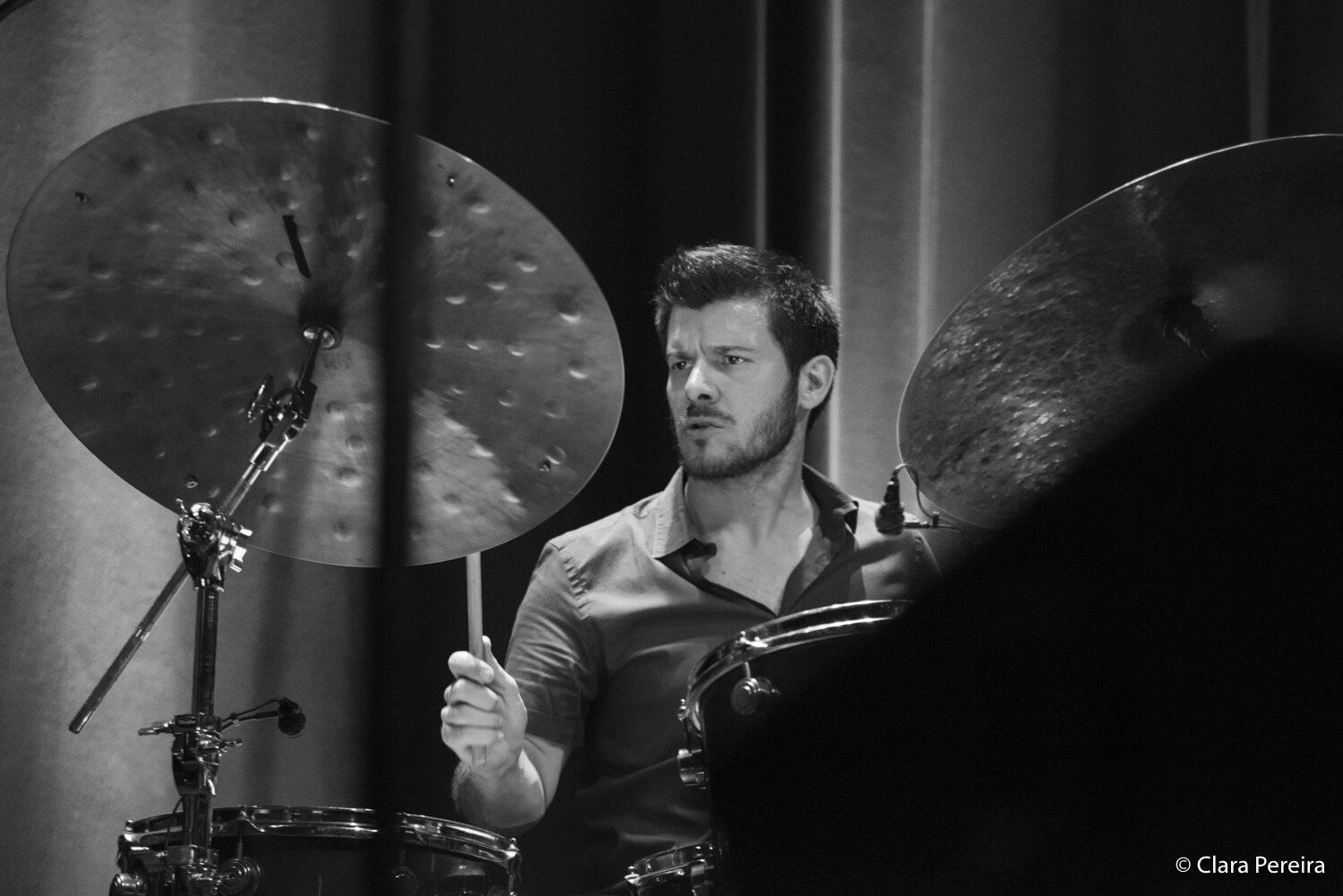
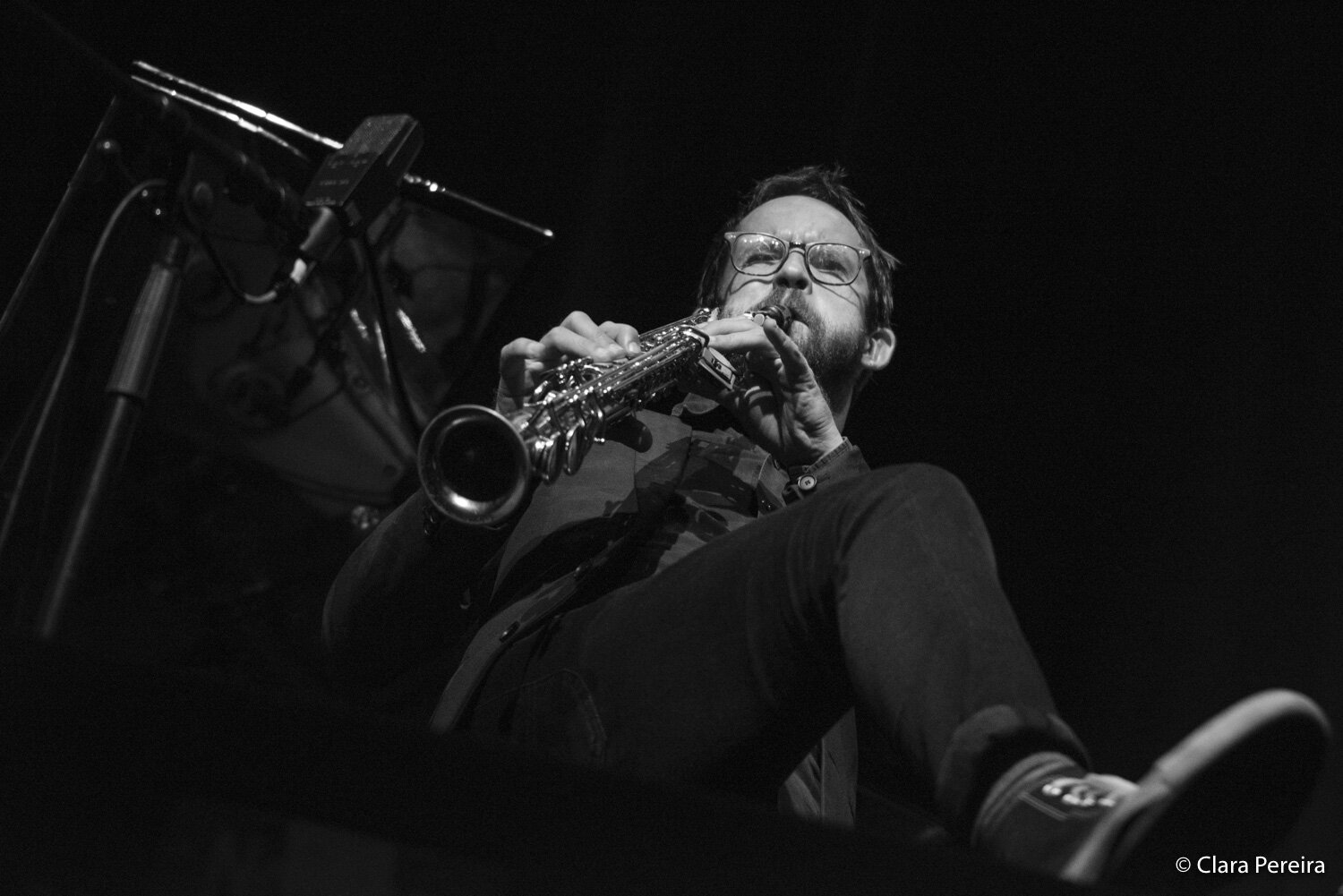
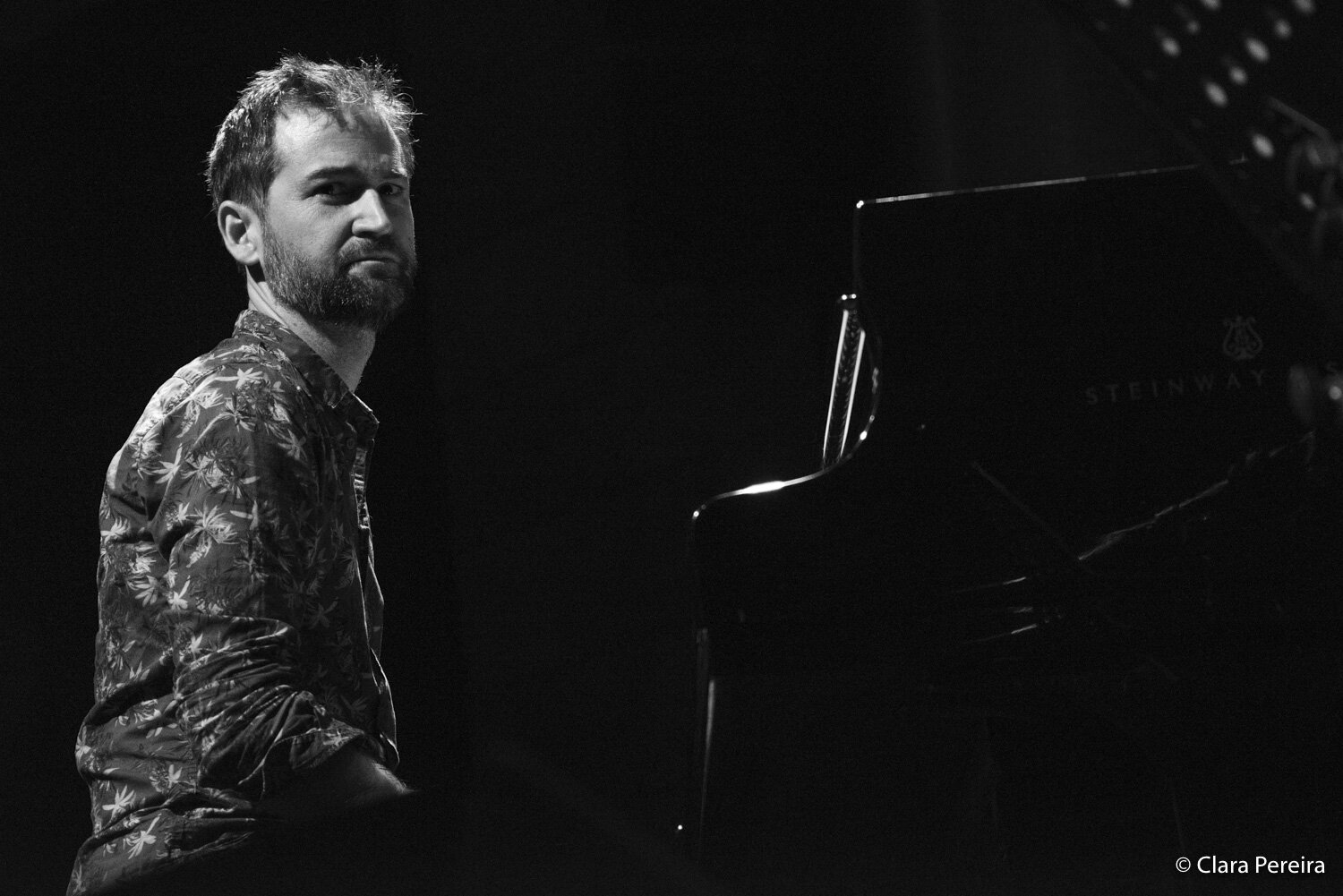
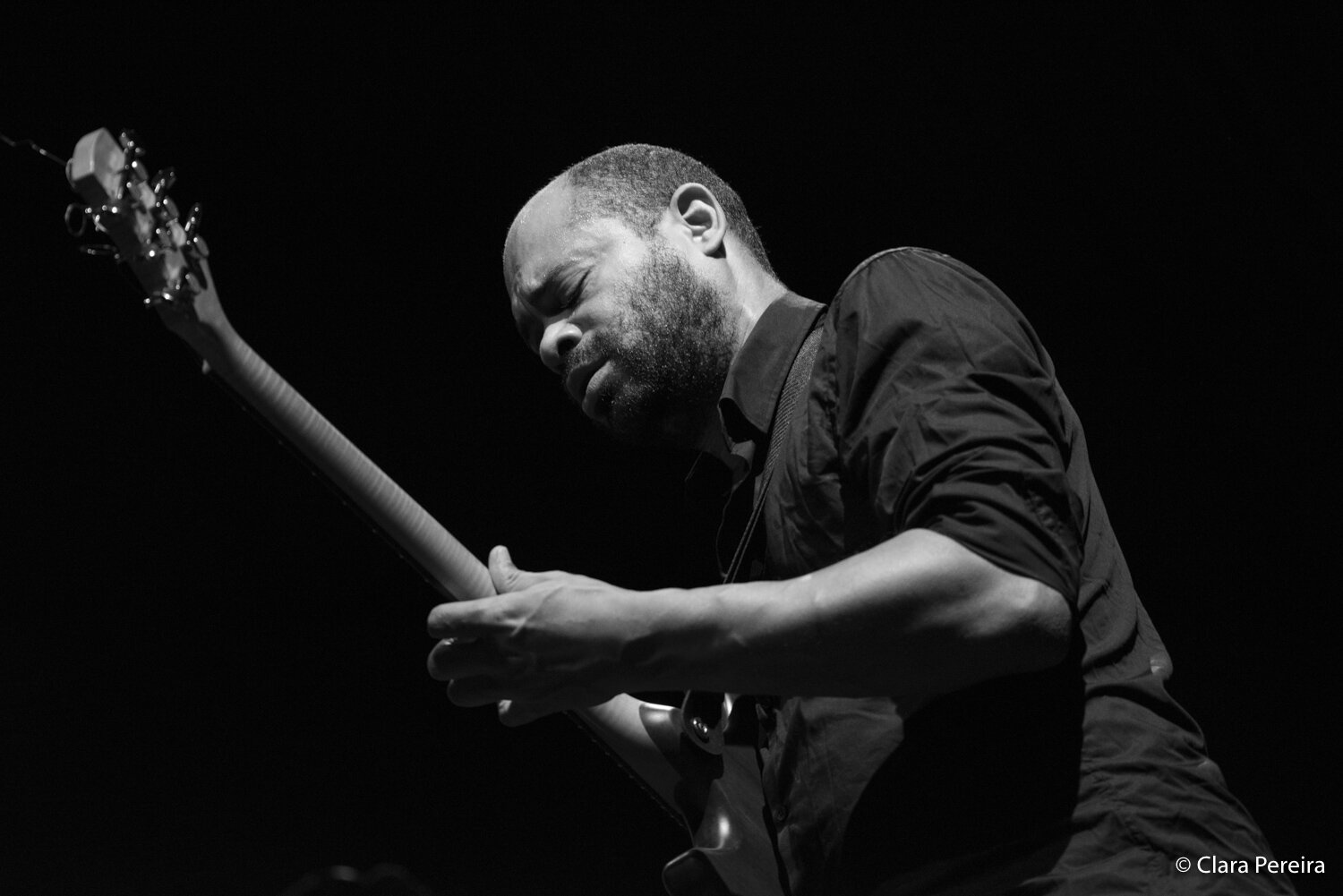
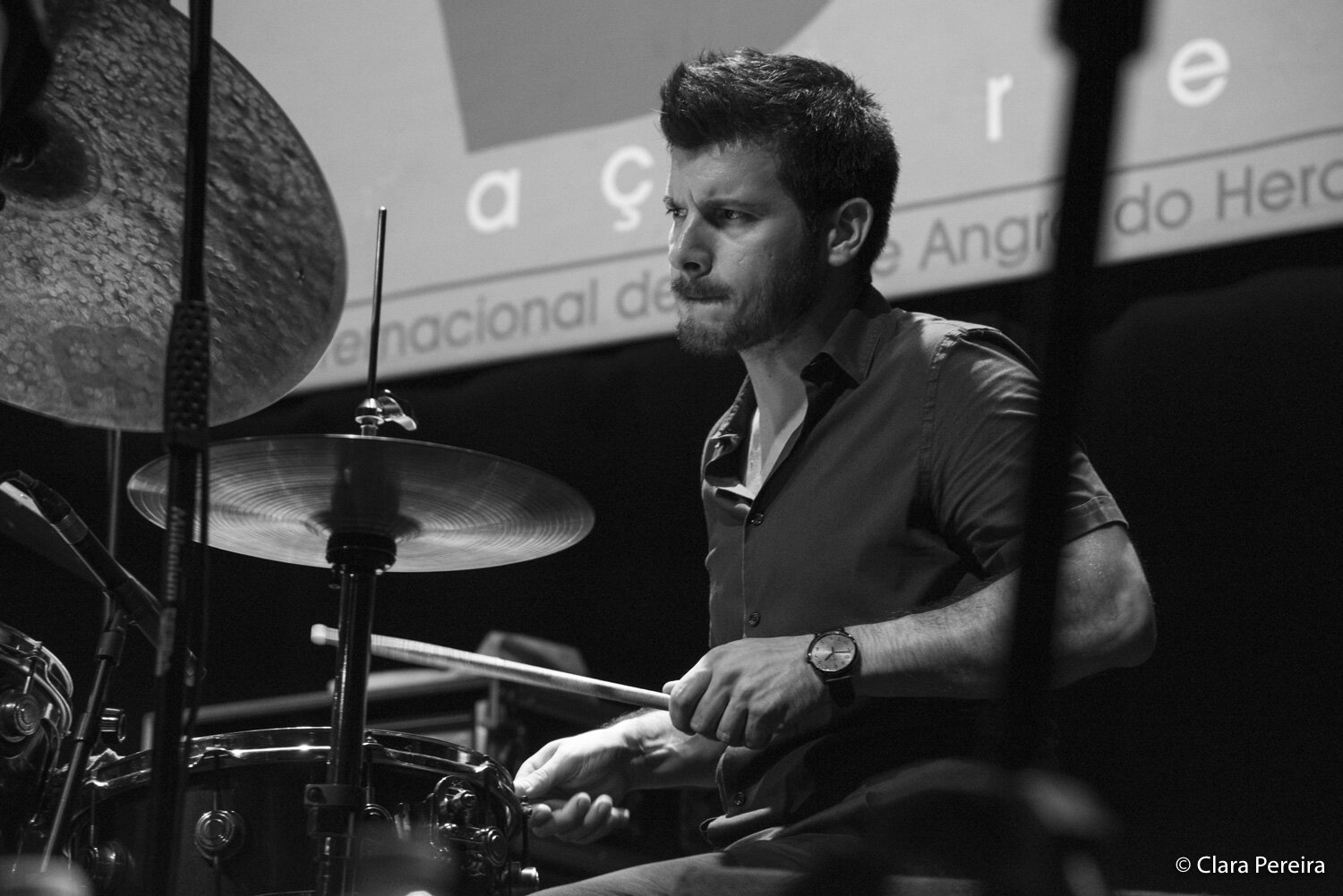
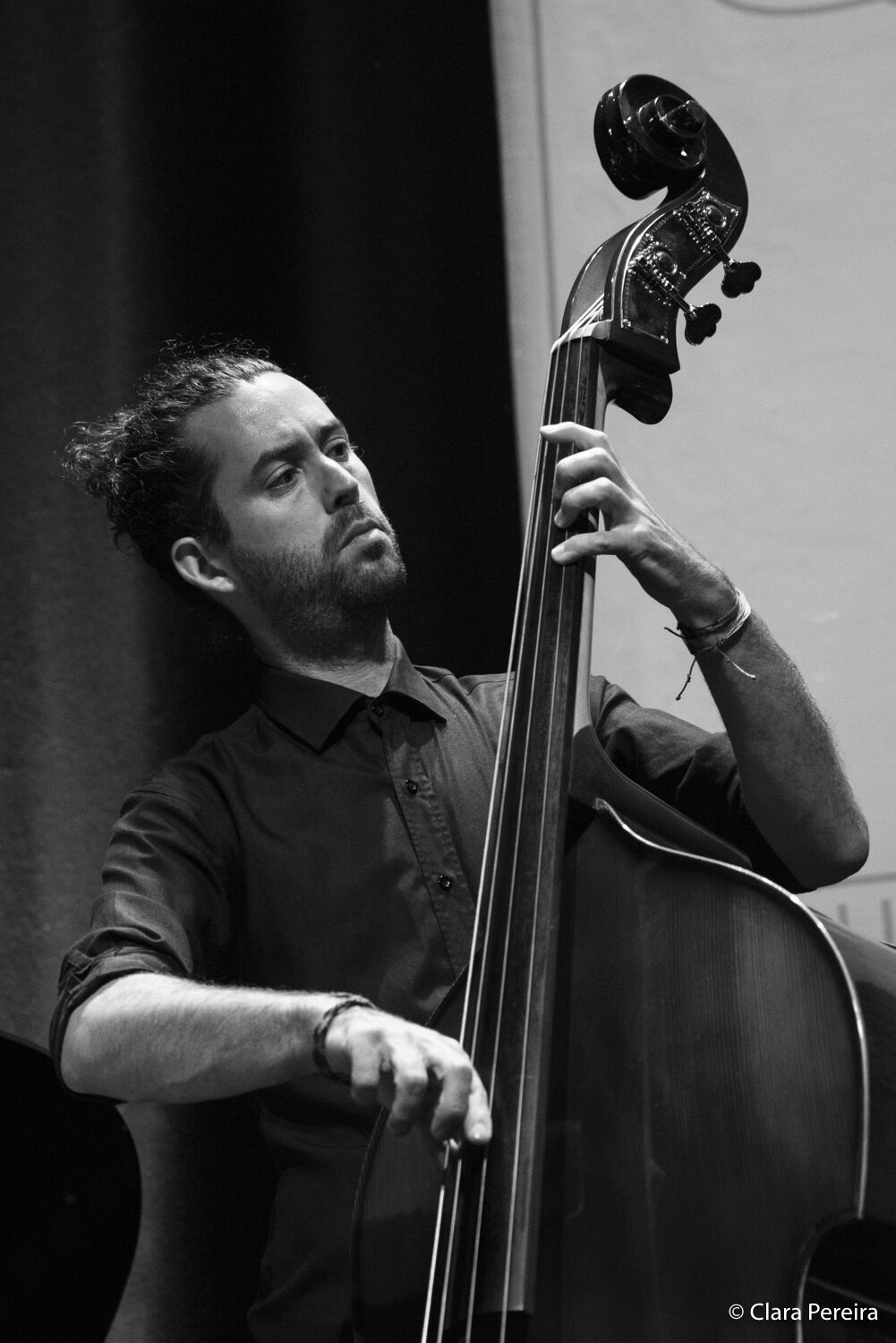
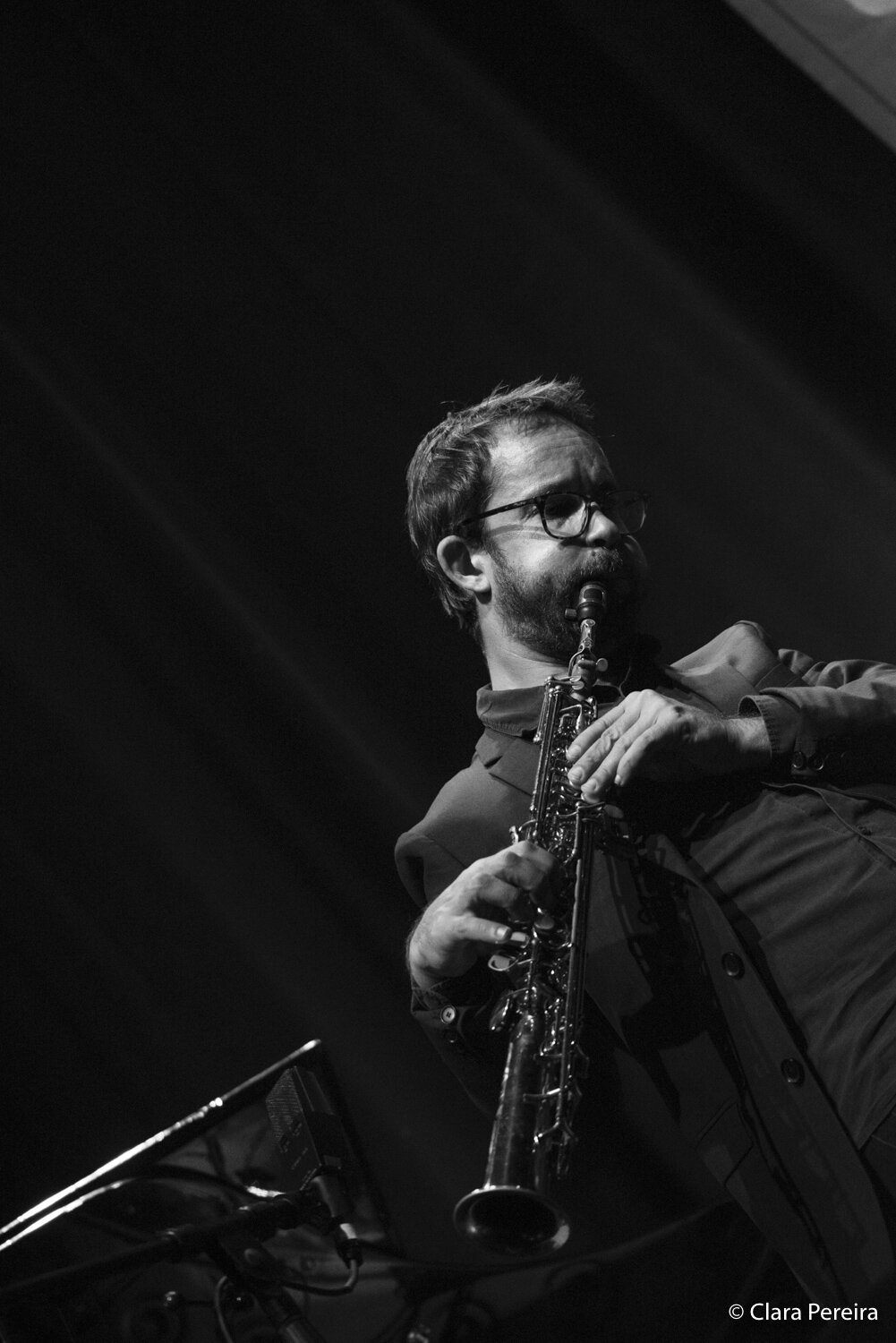
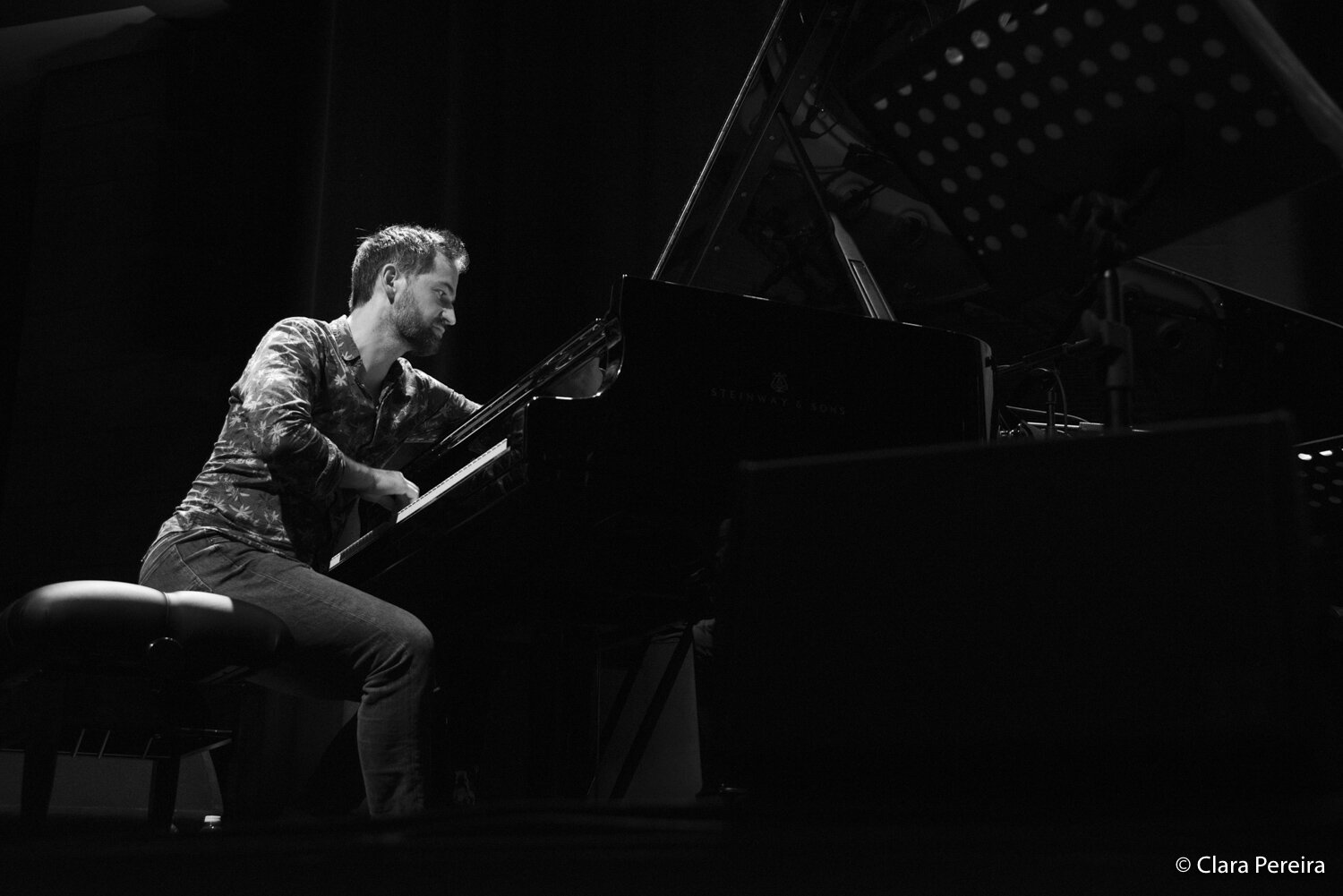
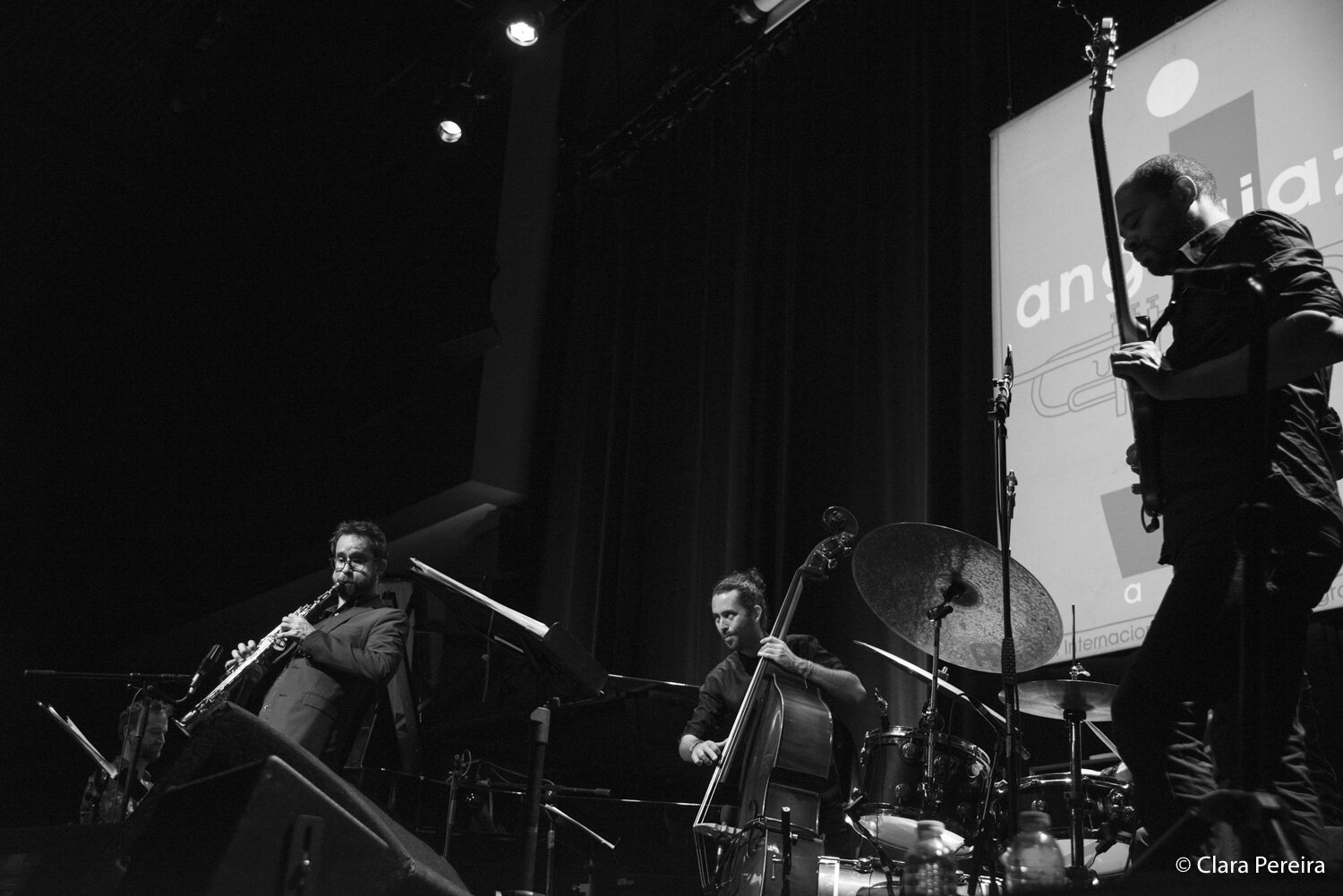
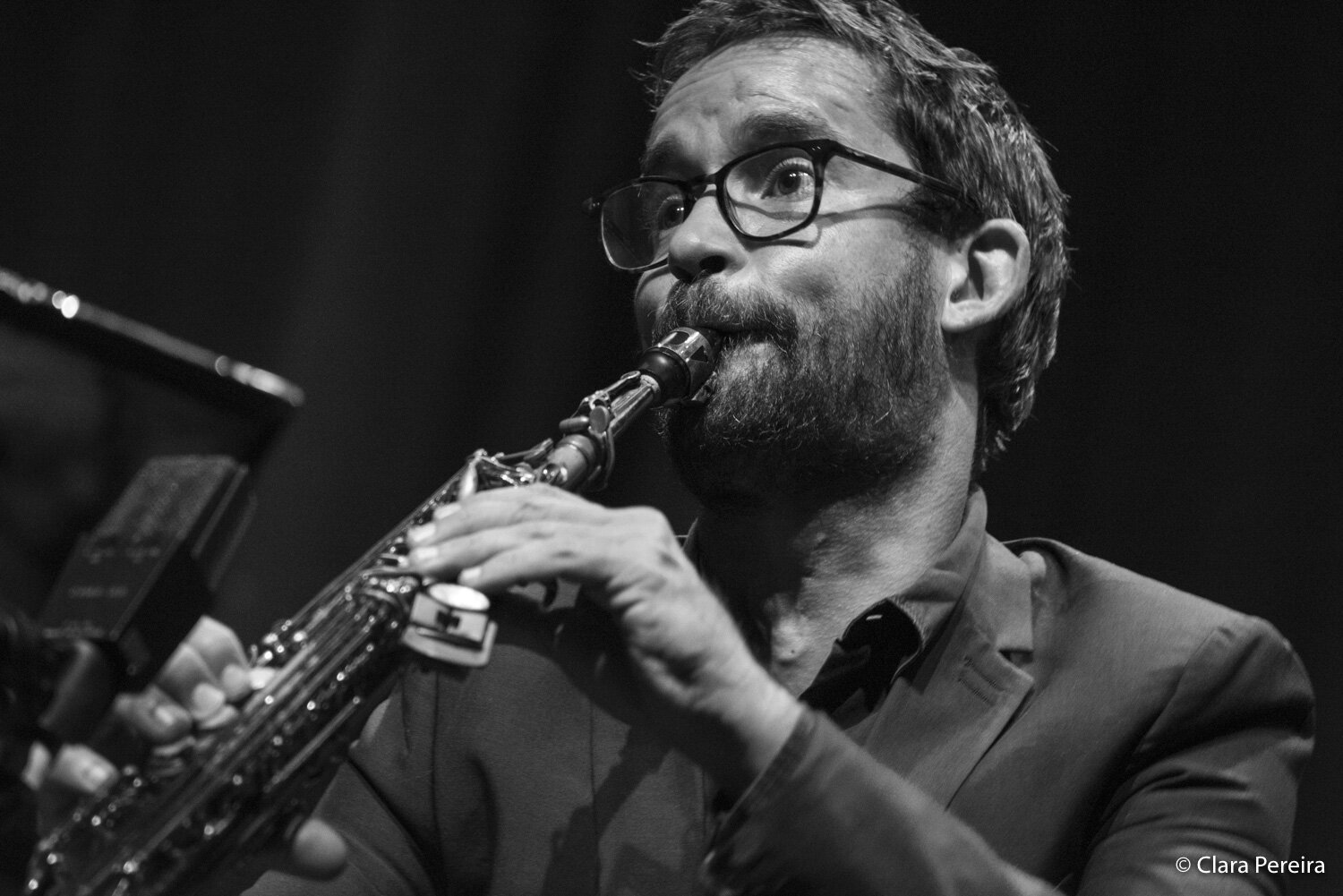
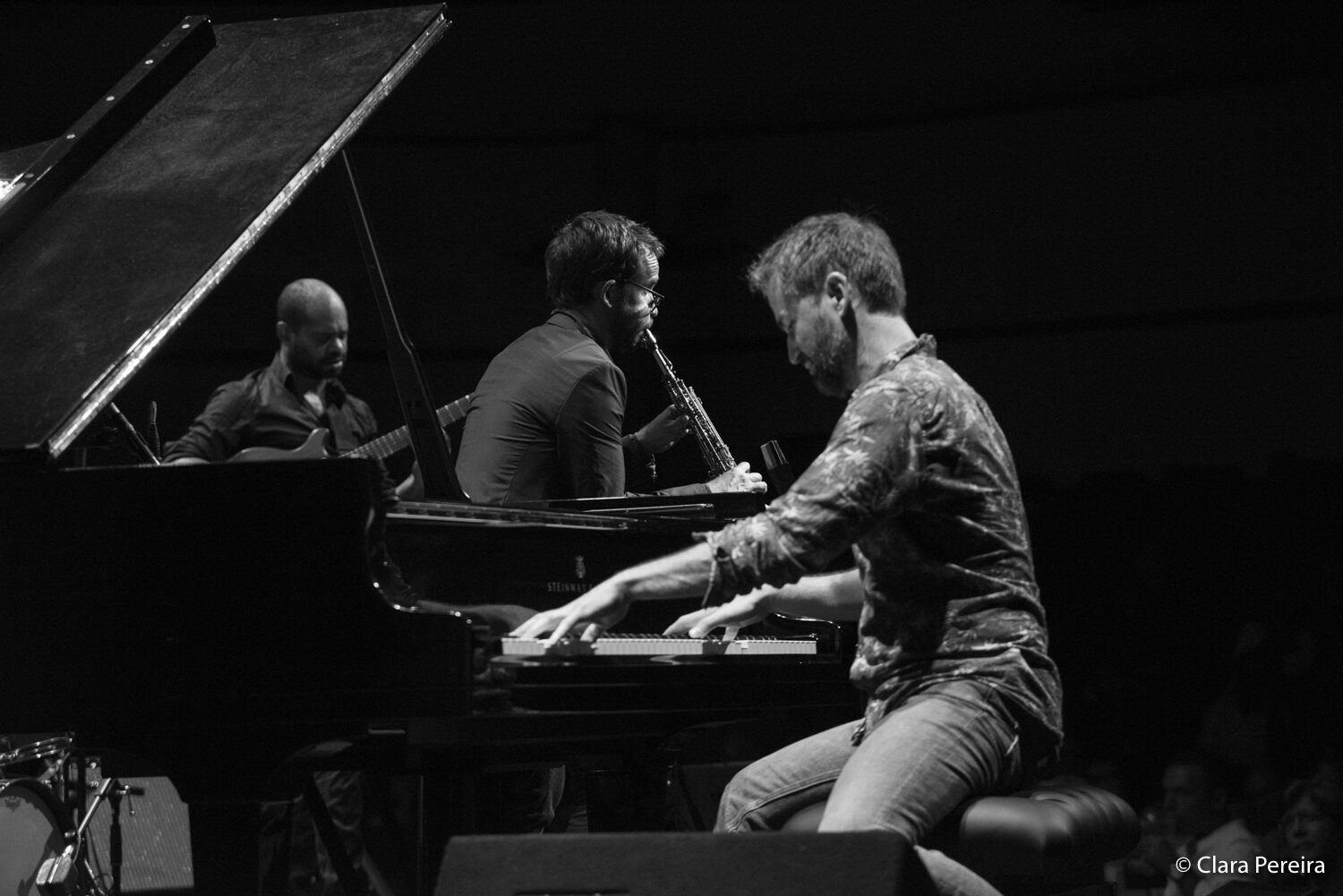
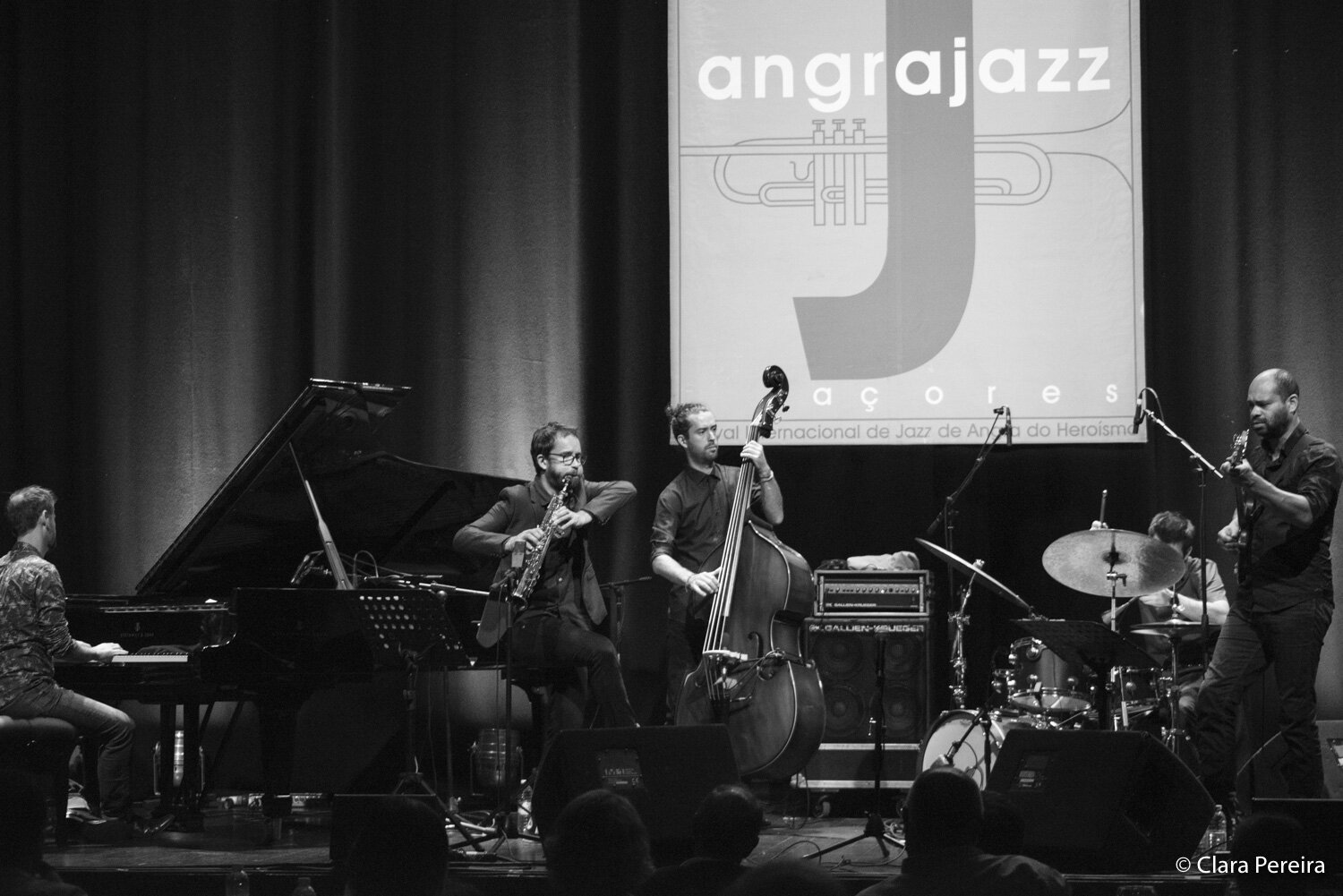
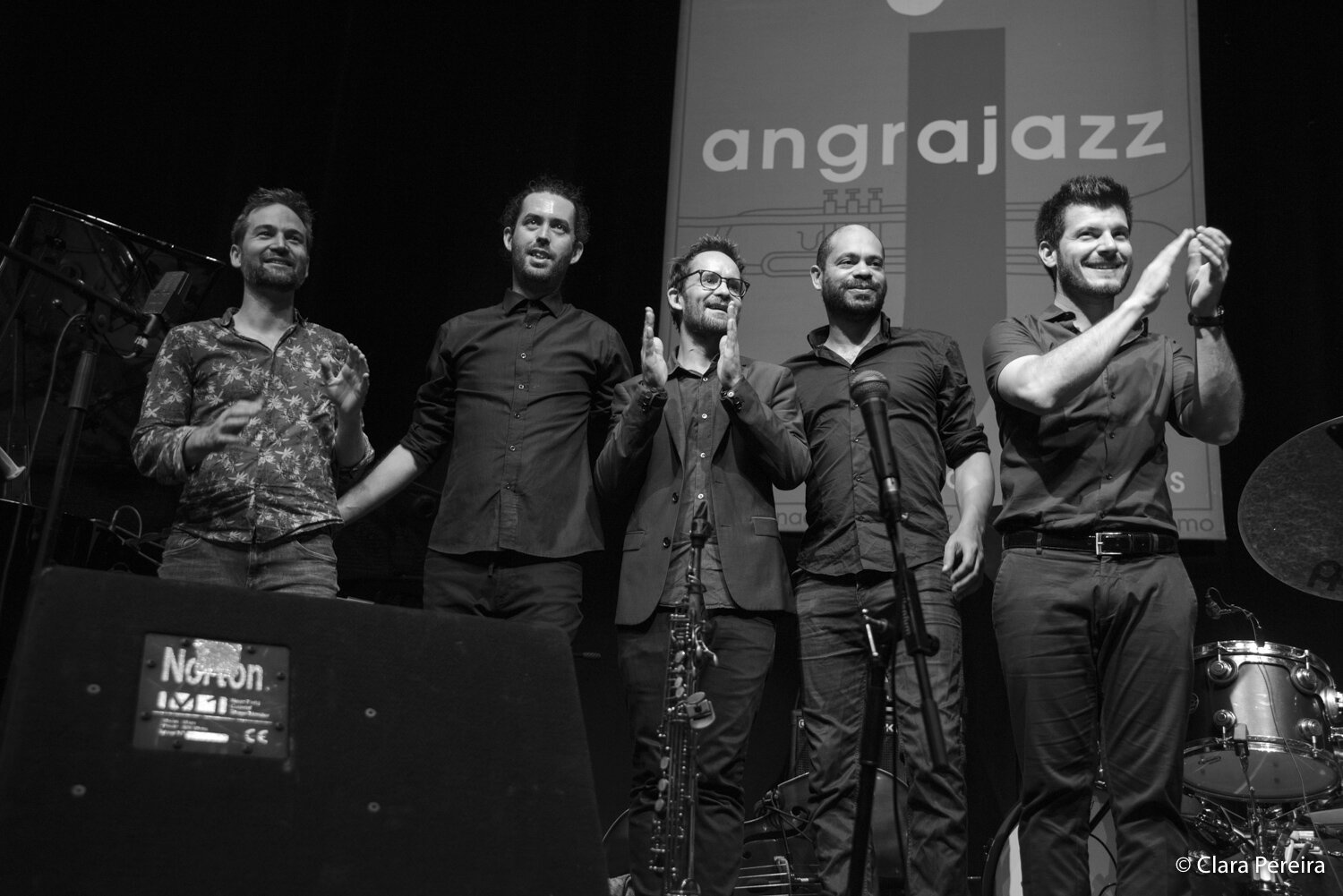
FRIDAY, Oct 4TH
JOAO MORTAGUA AXES
The second day opened with the curious instrumentation offered by the Portuguese ensemble Axes, led by alto and soprano saxophonist João Mortágua, who formed an interesting improvisatory pair with altoist José Soares. The four-piece horn section also comprises Hugo Ciríaco on tenor and Rui Teixeira on baritone, with the exclusively percussive understructure being entrusted to Alex Lázaro and Pedro Vasconcelos.
The pieces unfolded according to the group’s impeccable sense of interplay and the horn lines, expanding and contracting with occasional electronic effects, were subjected to unisons, diffusions, and intersections. Most of the numbers were cut from the group’s 2017 debut album. The thunderous, bumpy, and eventful “Shiny Axe” mixed rock, jazz, and a hint of funk; “Pyramidal” was immersed in contrapuntal groovy moves and adorned with a propulsive yet breathable beat reinforced by sprightly shakers; with a punk-ish rock bite “Methall” featured percussive competitions between the drummers: drumsticks on the rim vs. mallets over snare drum as well as electric drum strokes vs. acoustic sounds; and the extremely well-synchronized “Fadecafone” had a cacophonous inception embellished with bleating and whistling sounds before a vigorous vibe a-la Archie Shepp has been installed on top of an Afro rhythm.
The group concluded the show with “Bud Pets”, a composition informed with witty lines and a powerful groove, in a clear demonstration of Mortagua’s openness within defined structural bounds. Portuguese jazz at its best.

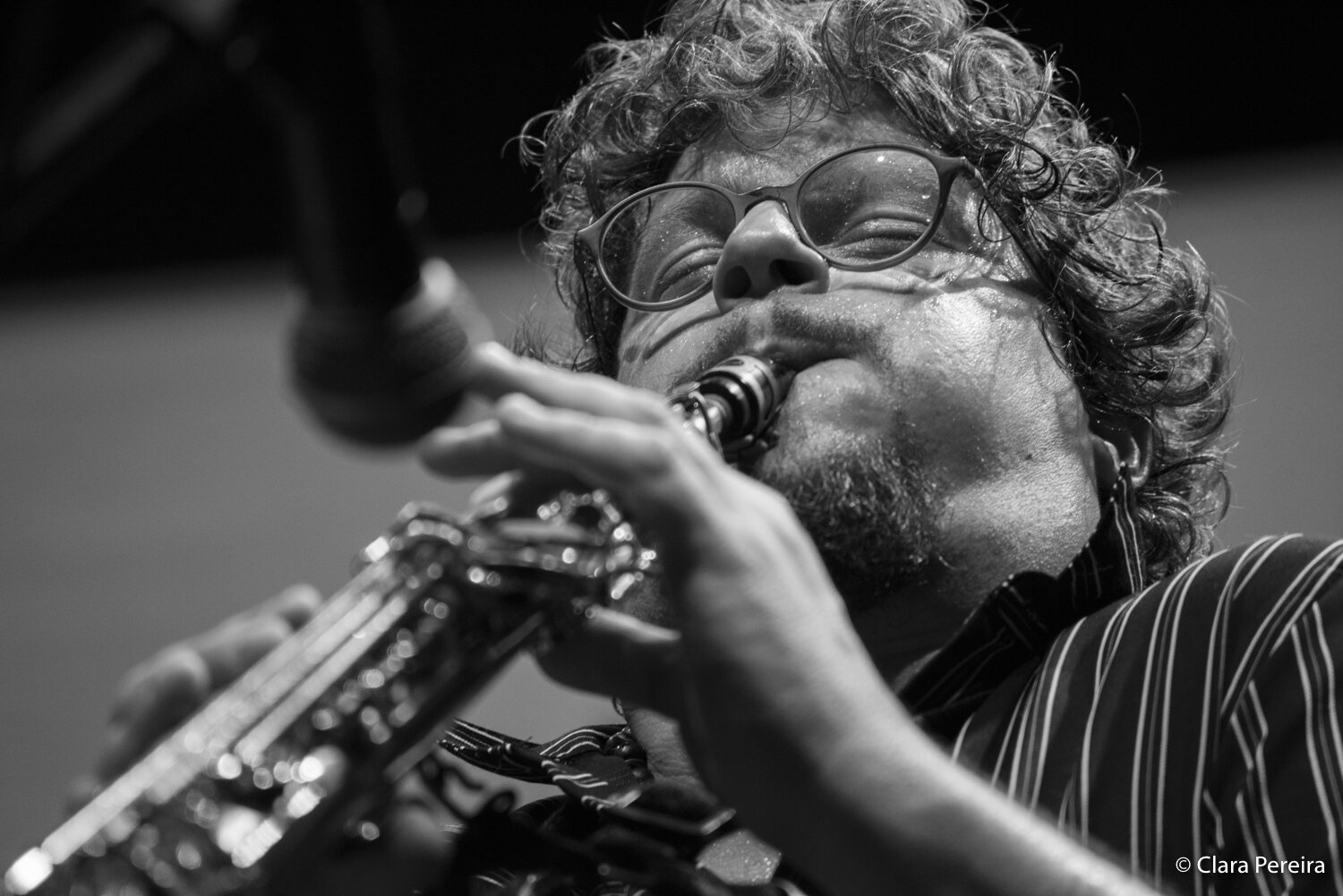
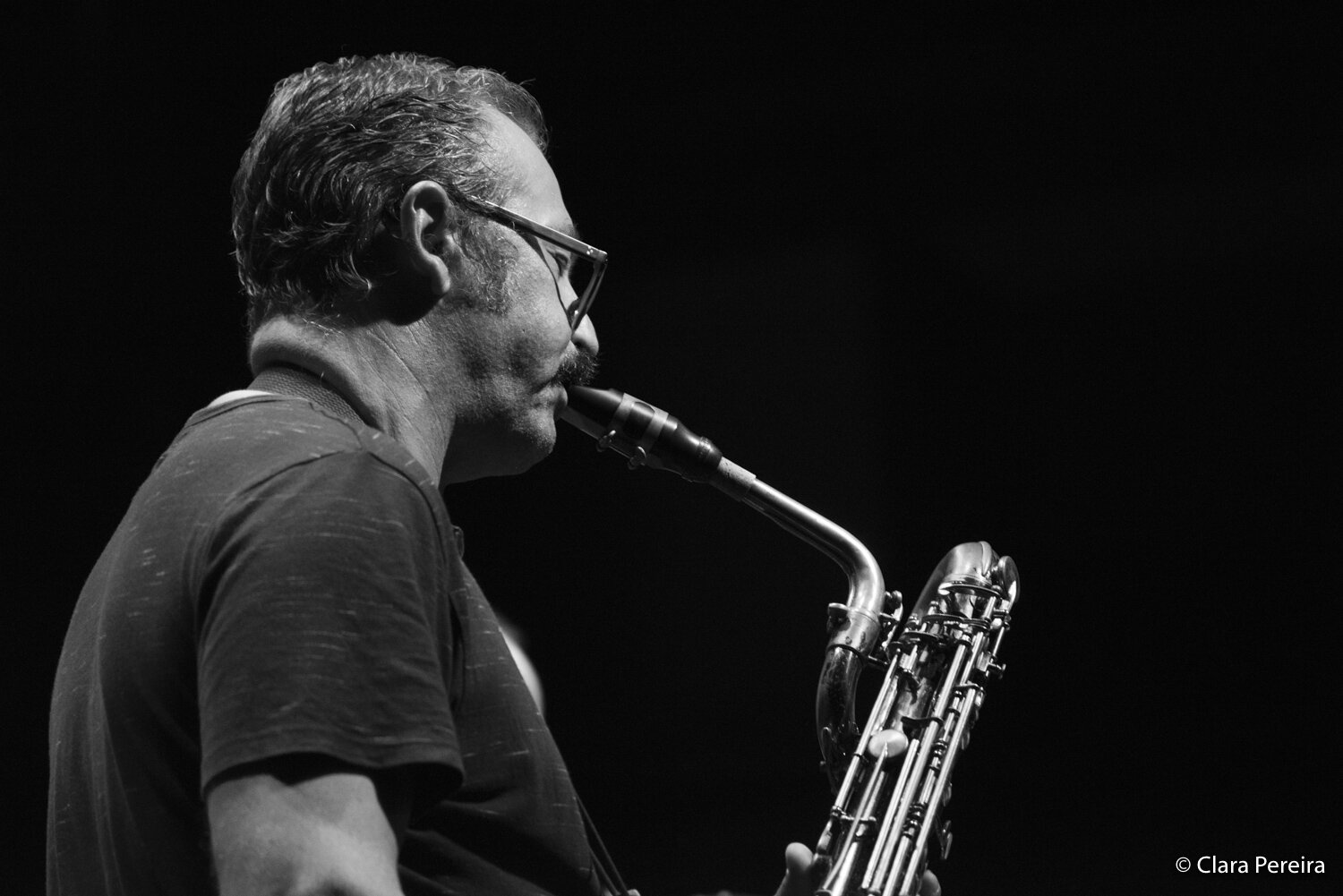
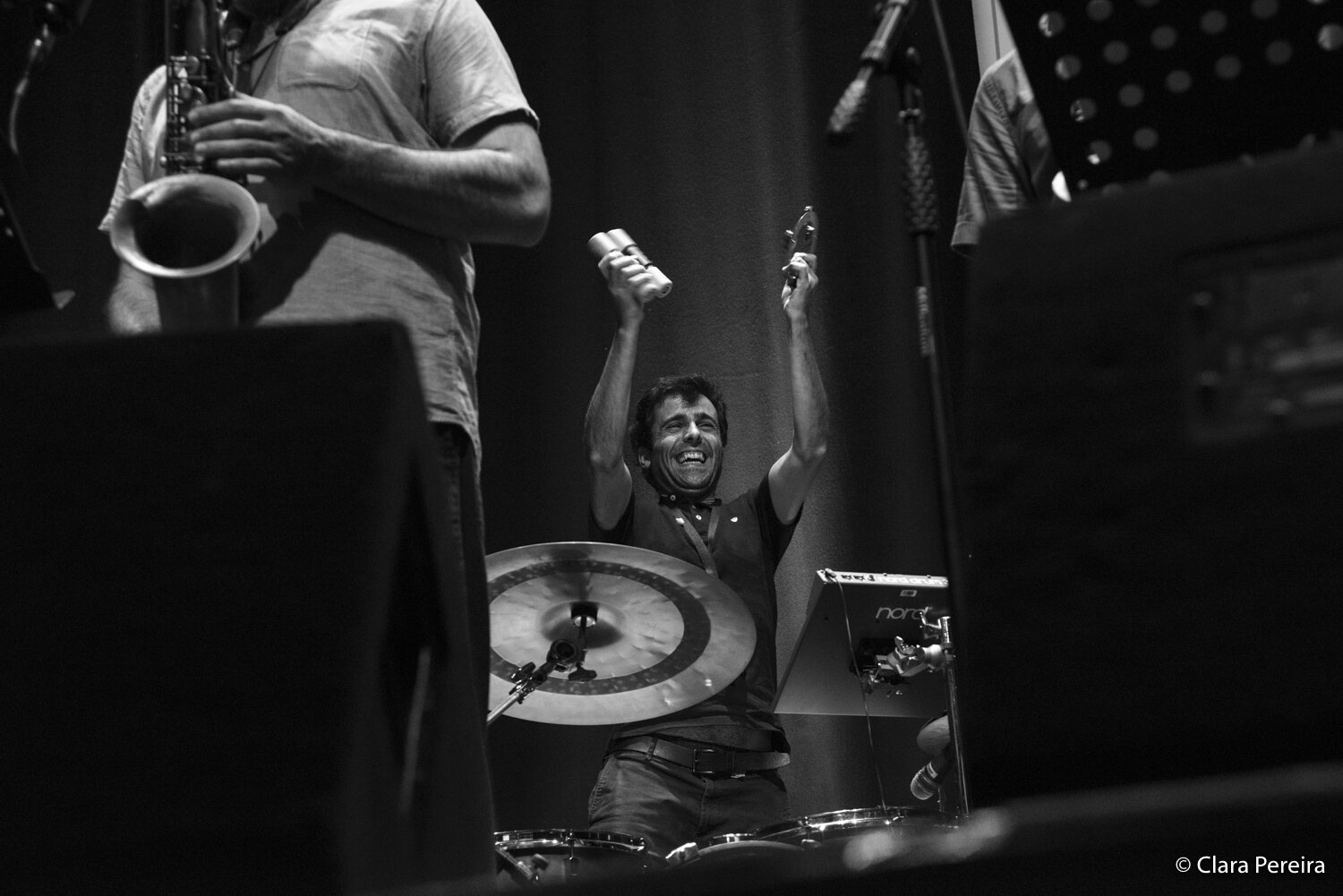
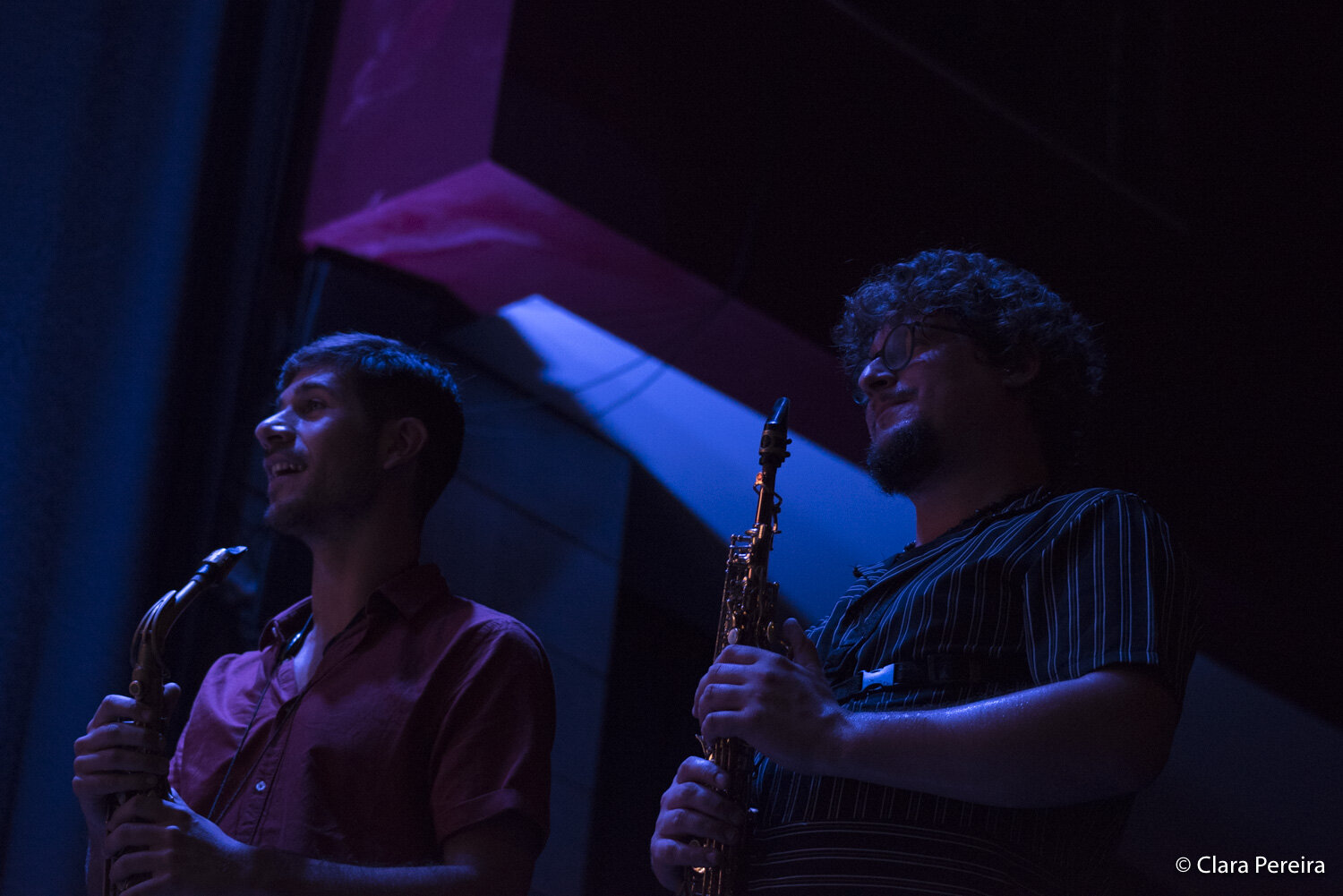
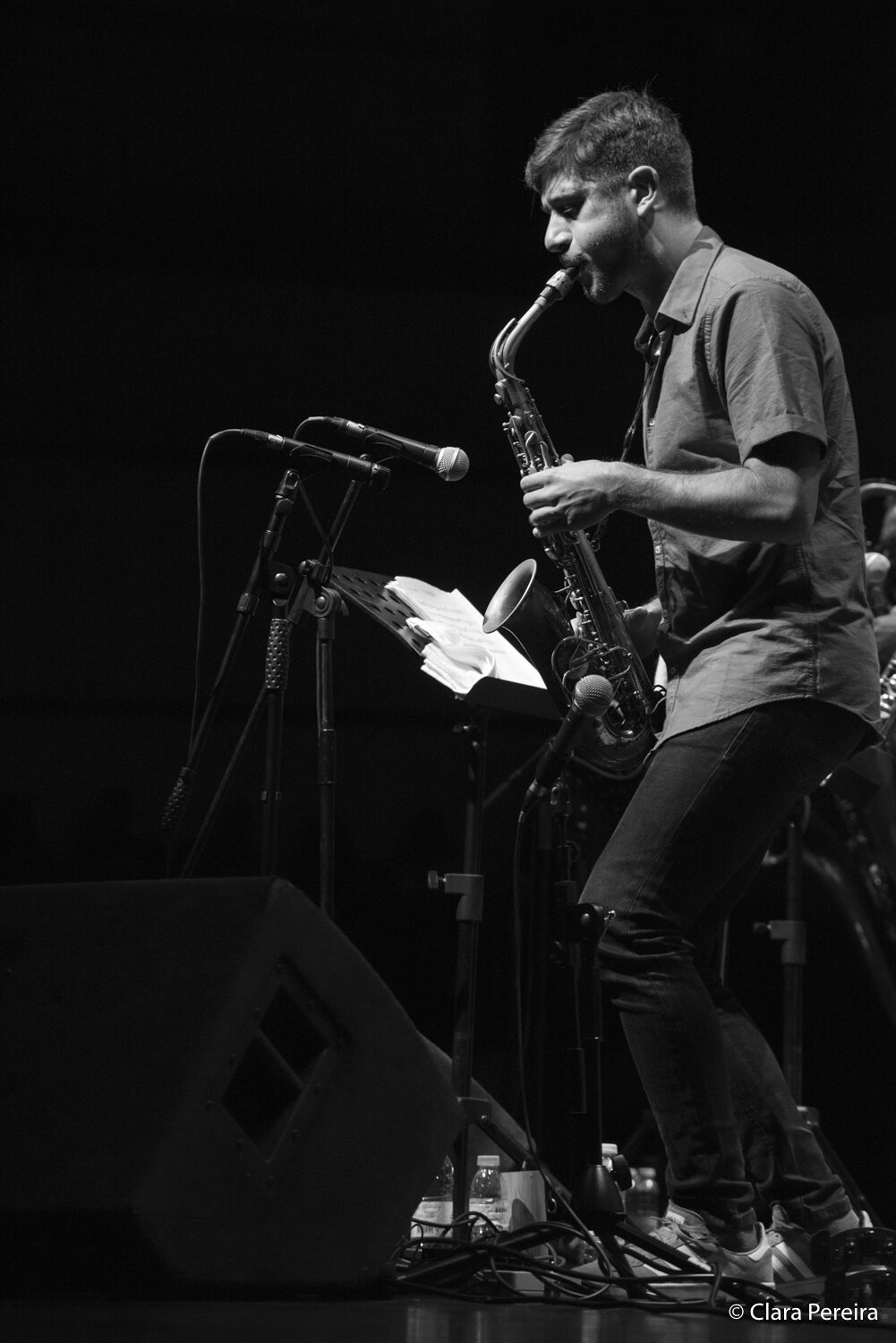
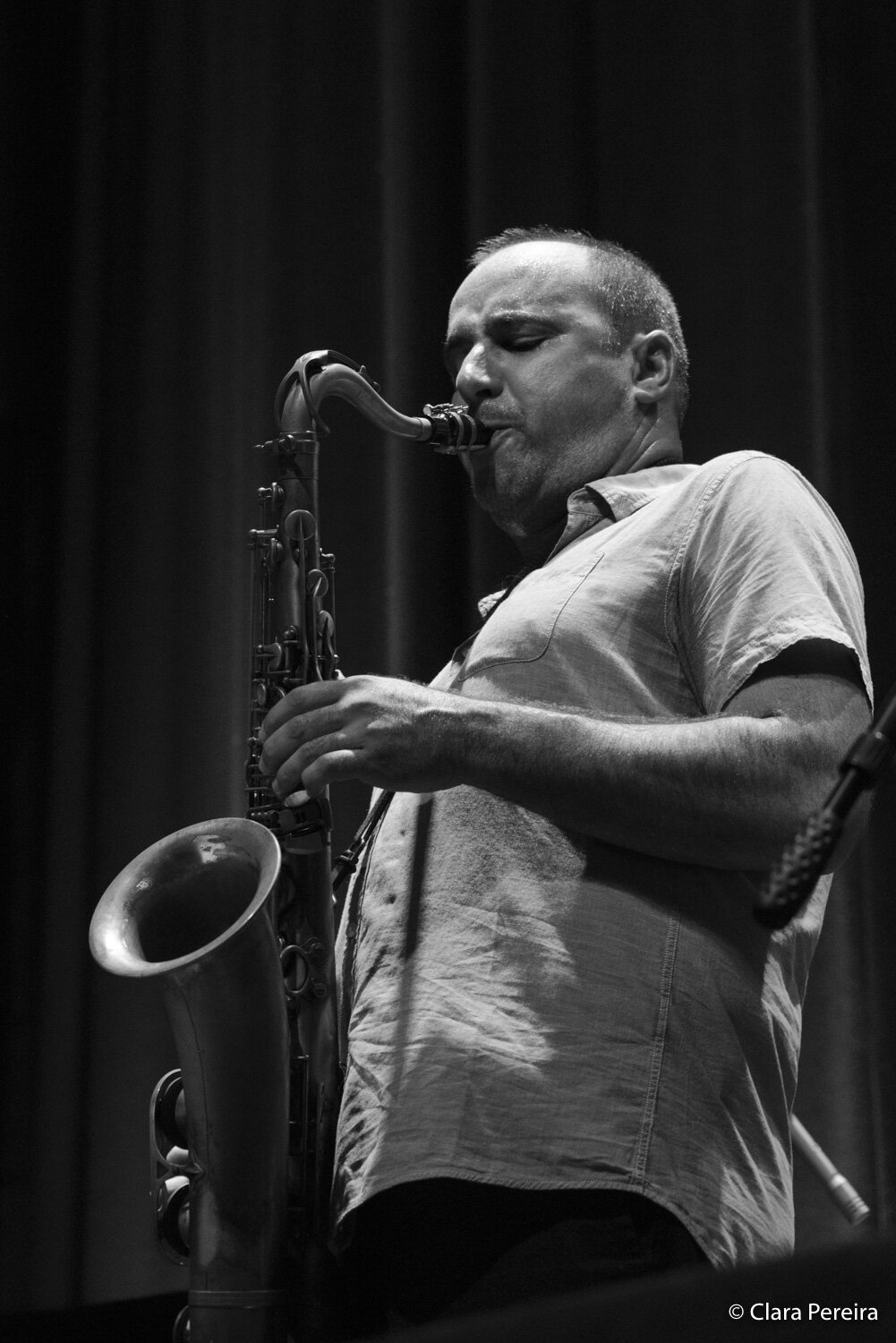
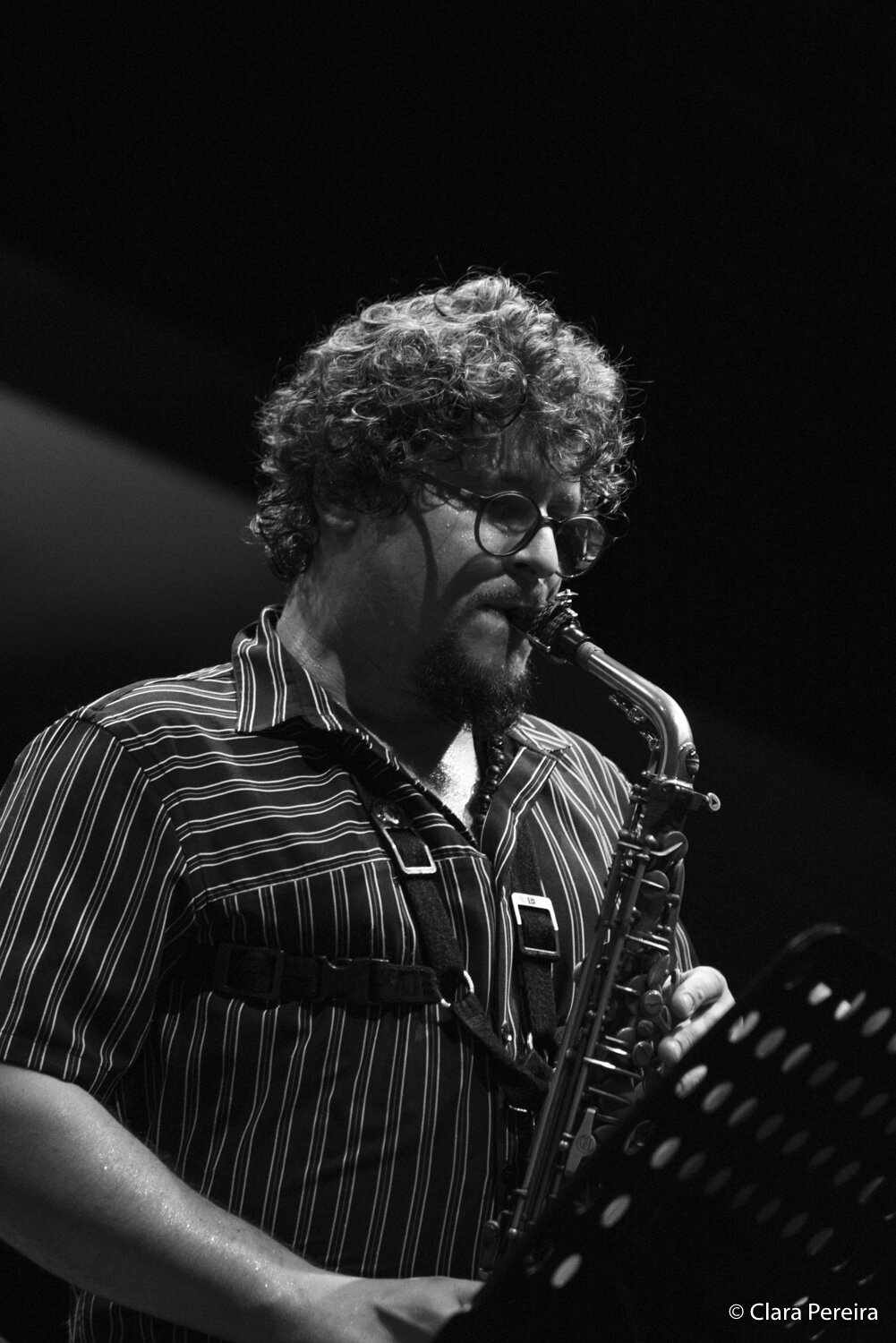
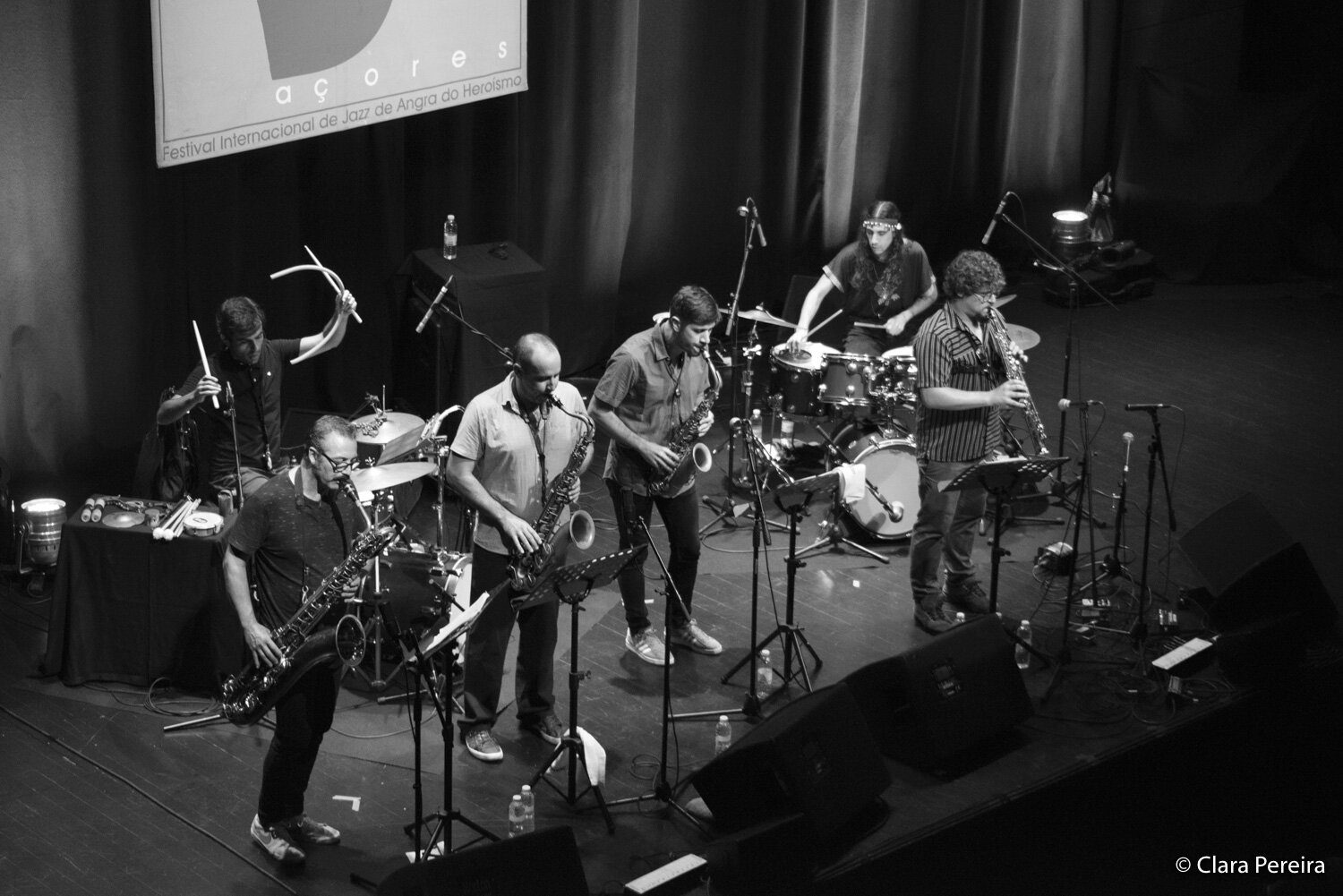
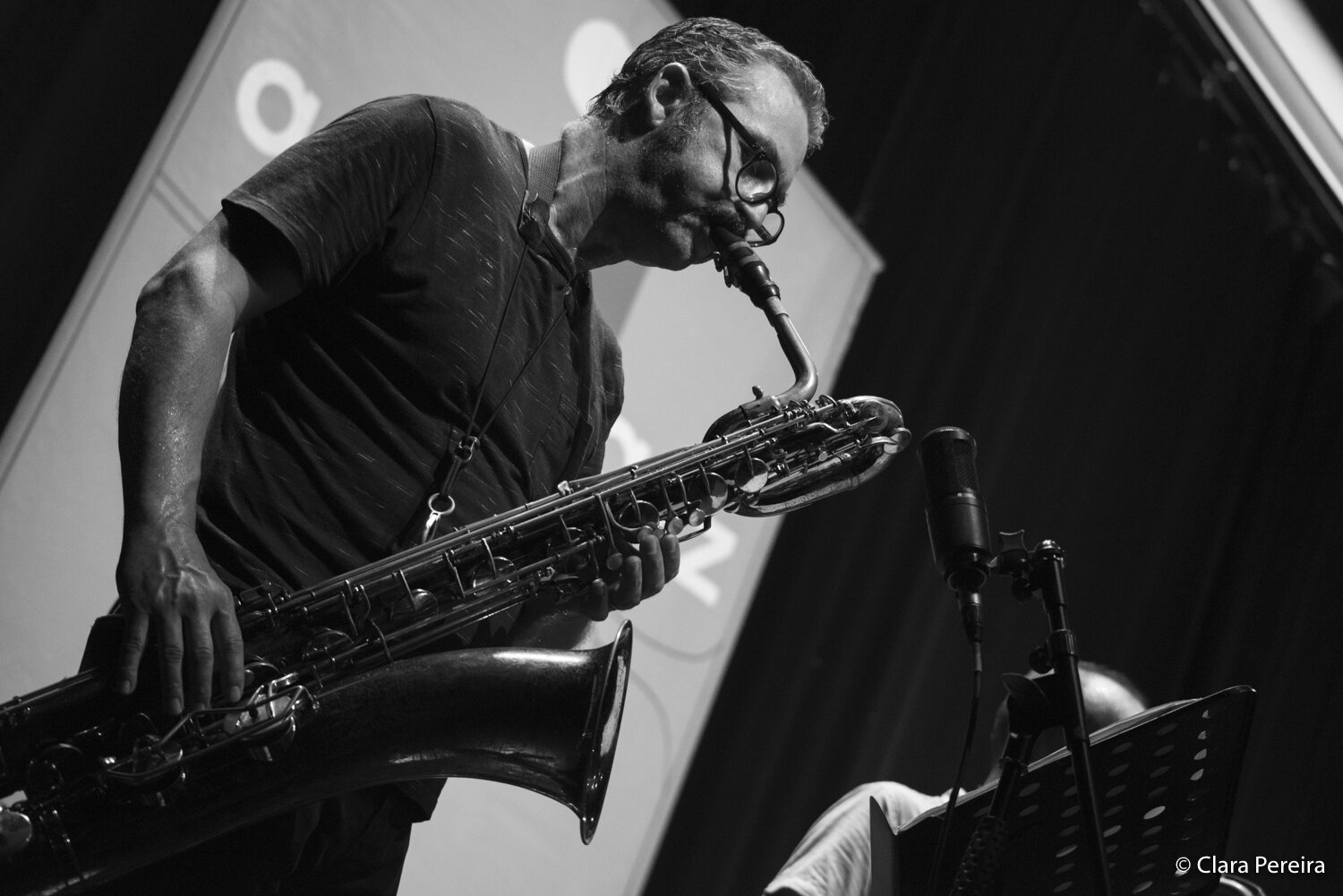
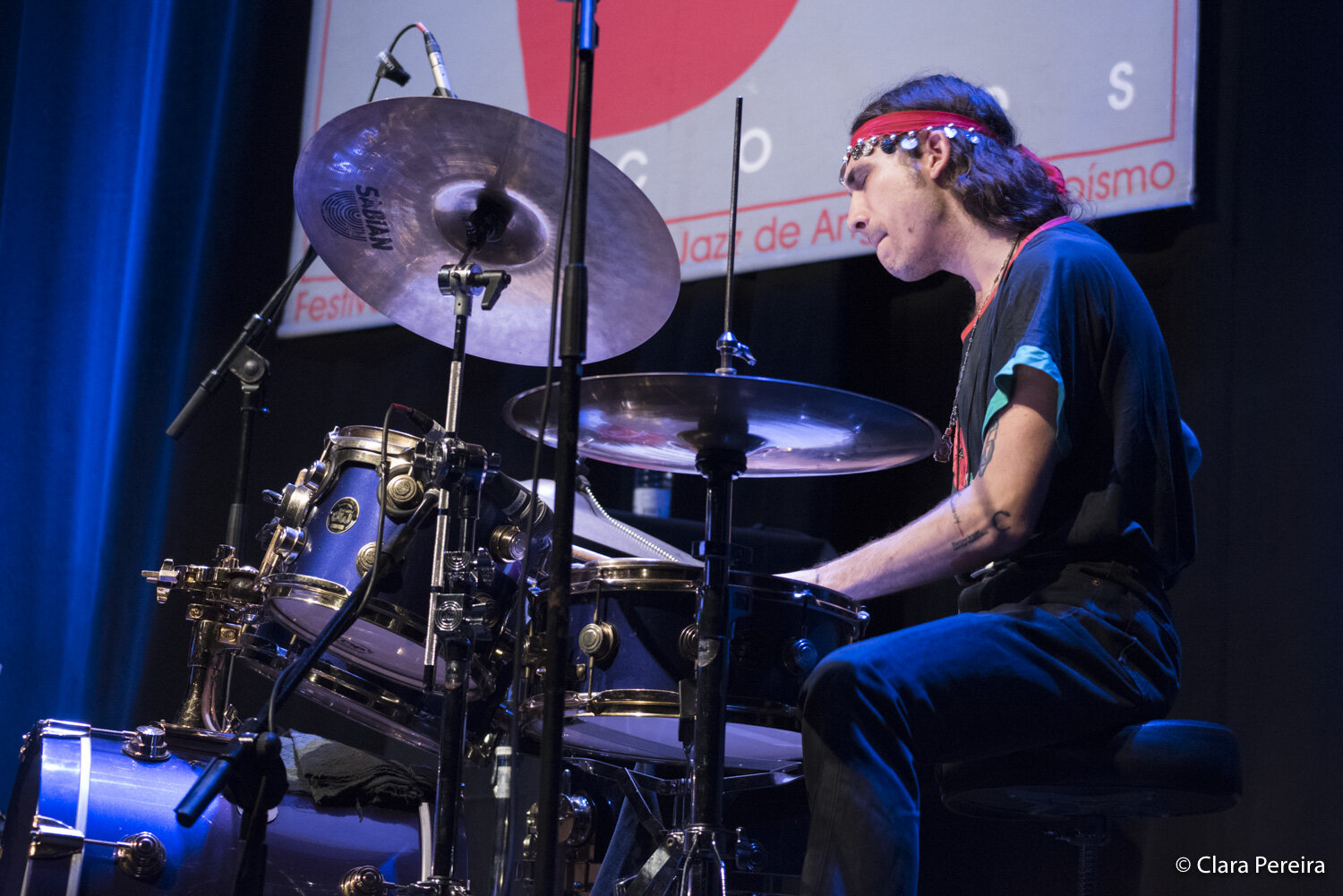
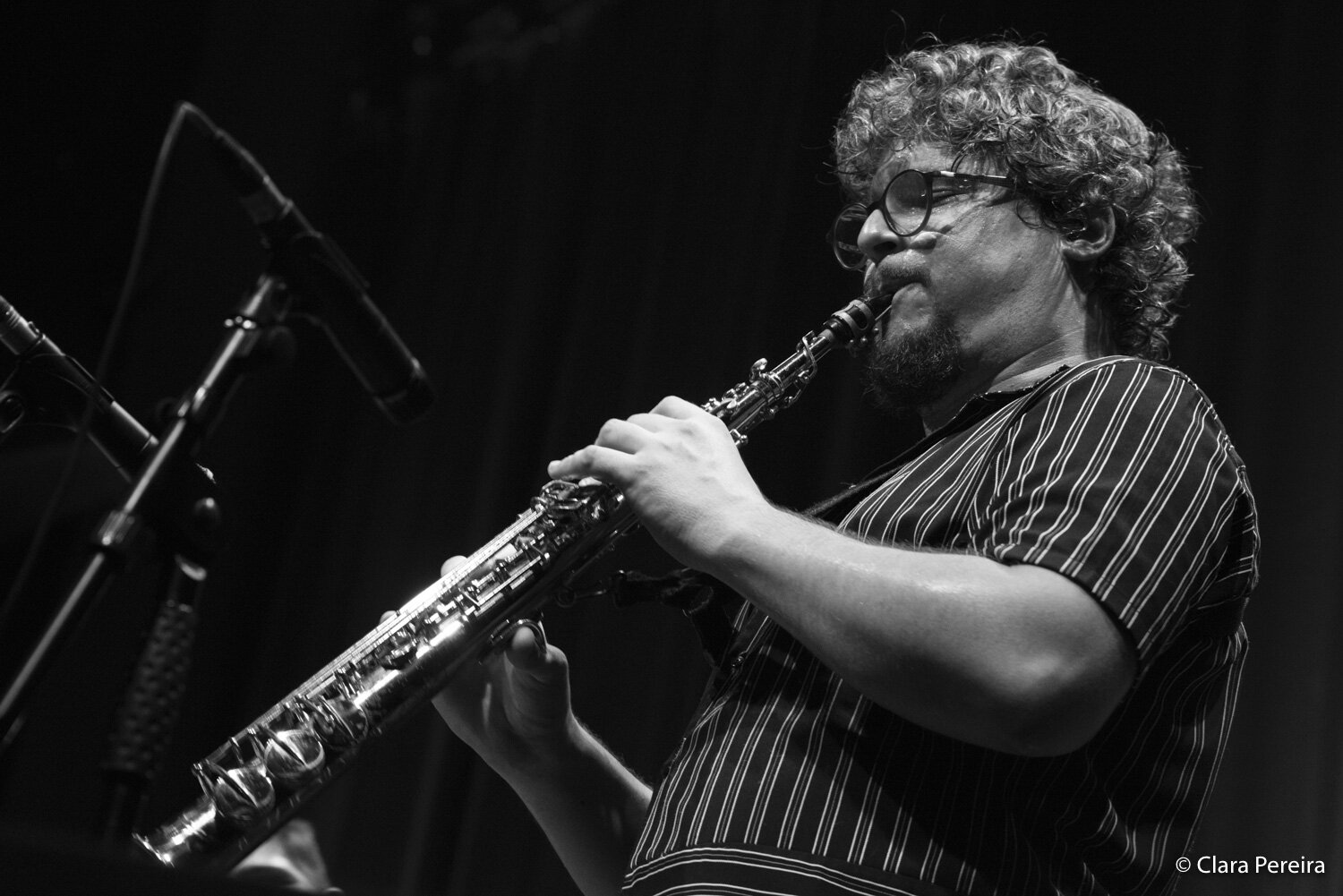
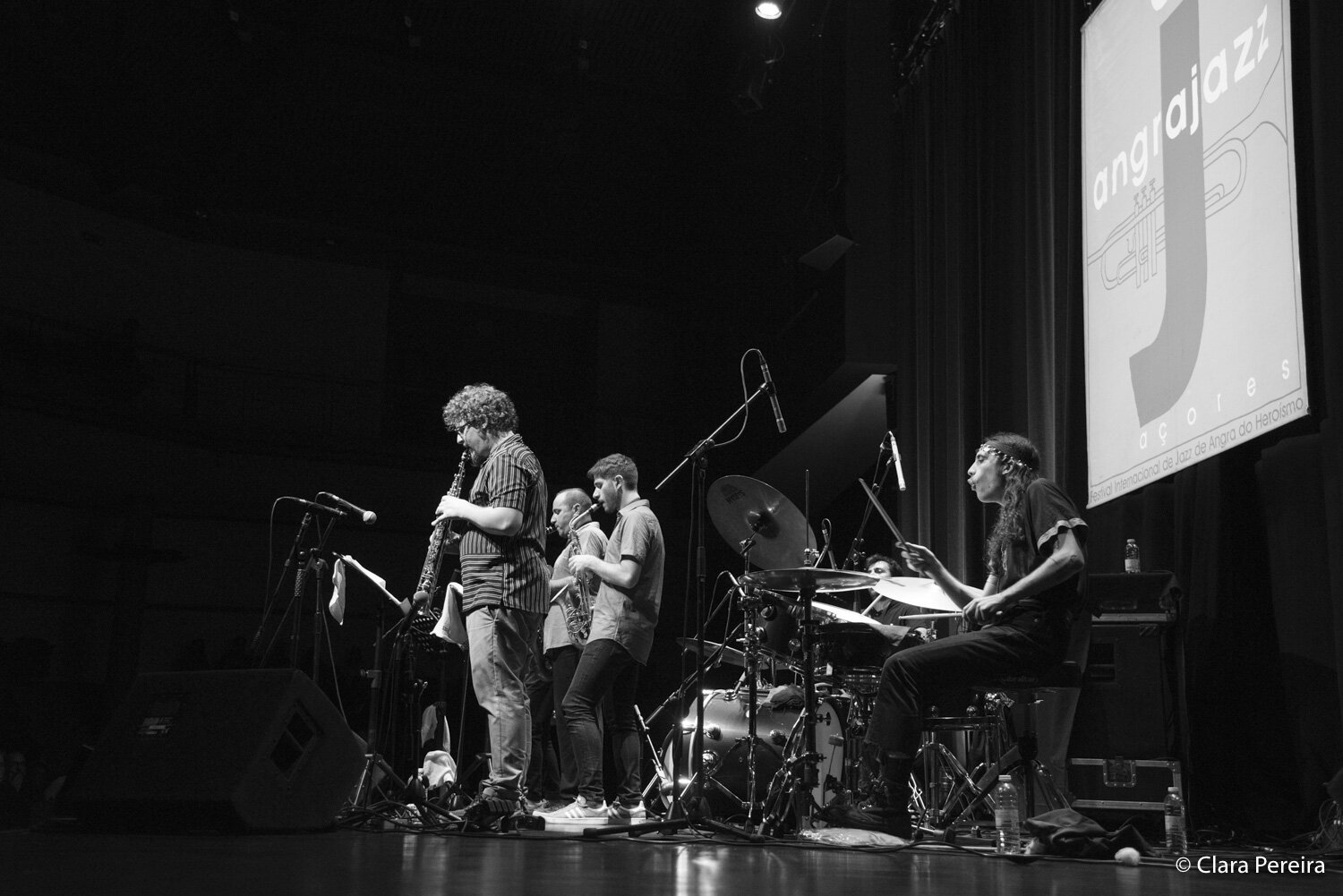
FRANK KIMBROUGH QUARTET
The quartet of American pianist Frank Kimbrough delivered a memorable concert exclusively composed of Monk tunes. Last year, the pianist released the 6-CD box set Monk’s Dreams: The Complete Compositions of Thelonious Sphere Monk on Sunnyside Records, playing alongside versatile multi-reedist Scott Robinson, protean bassist Rufus Reid, and elegant drummer Billy Drummond, musicians that joined him in this live session, which brimmed with maturity, finesse, and exuberance.
Kimbrough included in the repertoire compositions like “Jackie-ing” (with “Crepuscule for Nellie” as an introduction), “Light Blue”, and “Brake’s Sake”, but the highlights were classic hits such as “Four In One”, the enchantingly bluesy “Locomotive”, and a very special interpretation of “Round Midnight” that left every single person jaw-dropped.
With a natural capacity to communicate on stage, the four musicians demonstrated that they know what they’re talking about throughout a top class performance that only got jammed during the first tune, “San Francisco Holiday”, time when the sound was far from the optimum quality. Once adjusted, it was awesome to see these accomplished jazz instrumentalists putting their own stamp on a batch of Monk selections and take them to a level of excellence. Alternating between tenor sax and trumpet (and sometimes playing both during the same song), Robinson managed to blow gently-bent Getz-like obbligatos full of melodic purpose and slightly outside forays with an incredible tonal range. His flexibility is impressive, just like the graceful poise of Drummond conforms to any given context. Kimbrough stressed efficiency both soloing and accompanying with tinges of Monk’s obliquity, while Reid was always generous, rooting the harmony with intelligence and promoting fluidity. Great show!
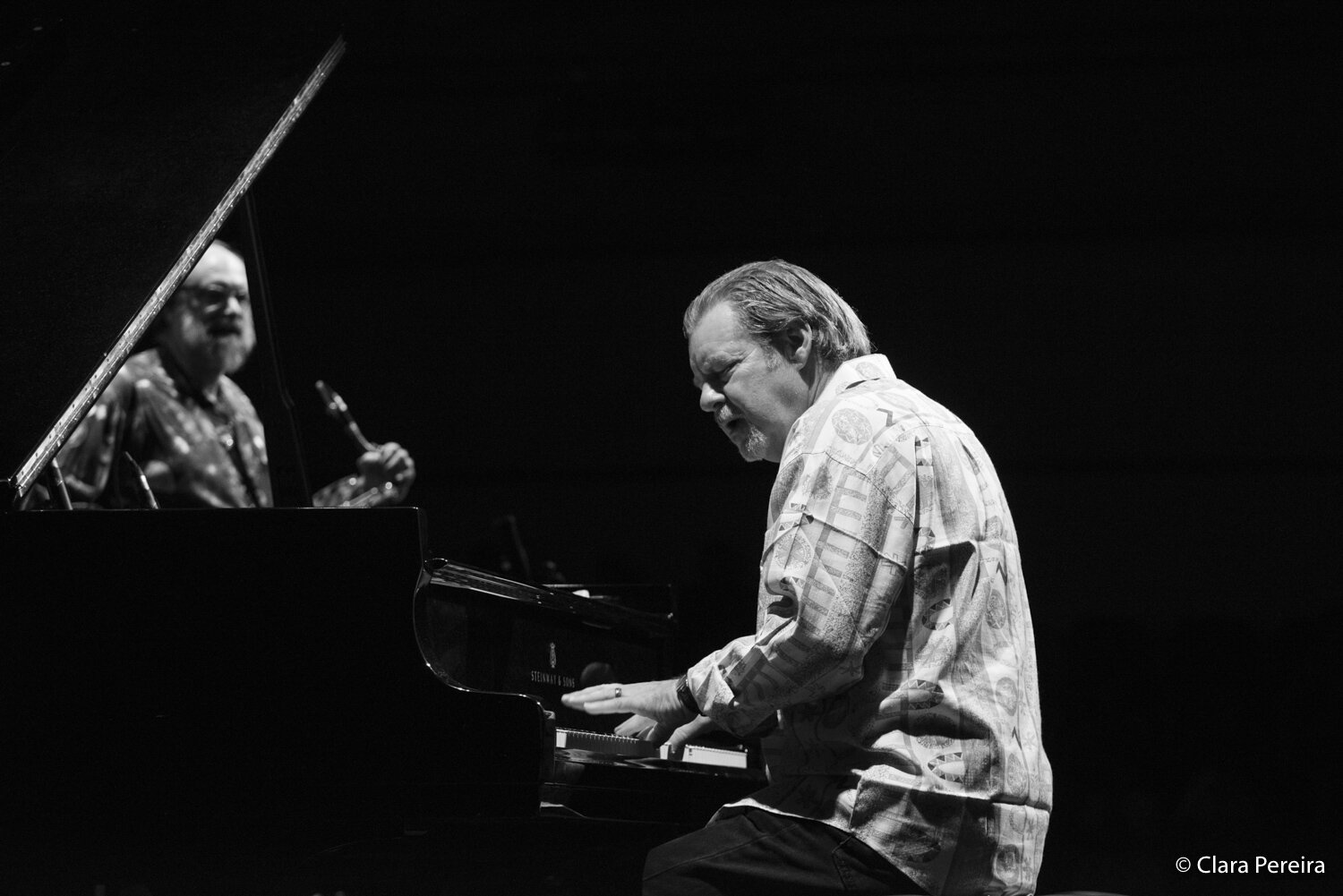
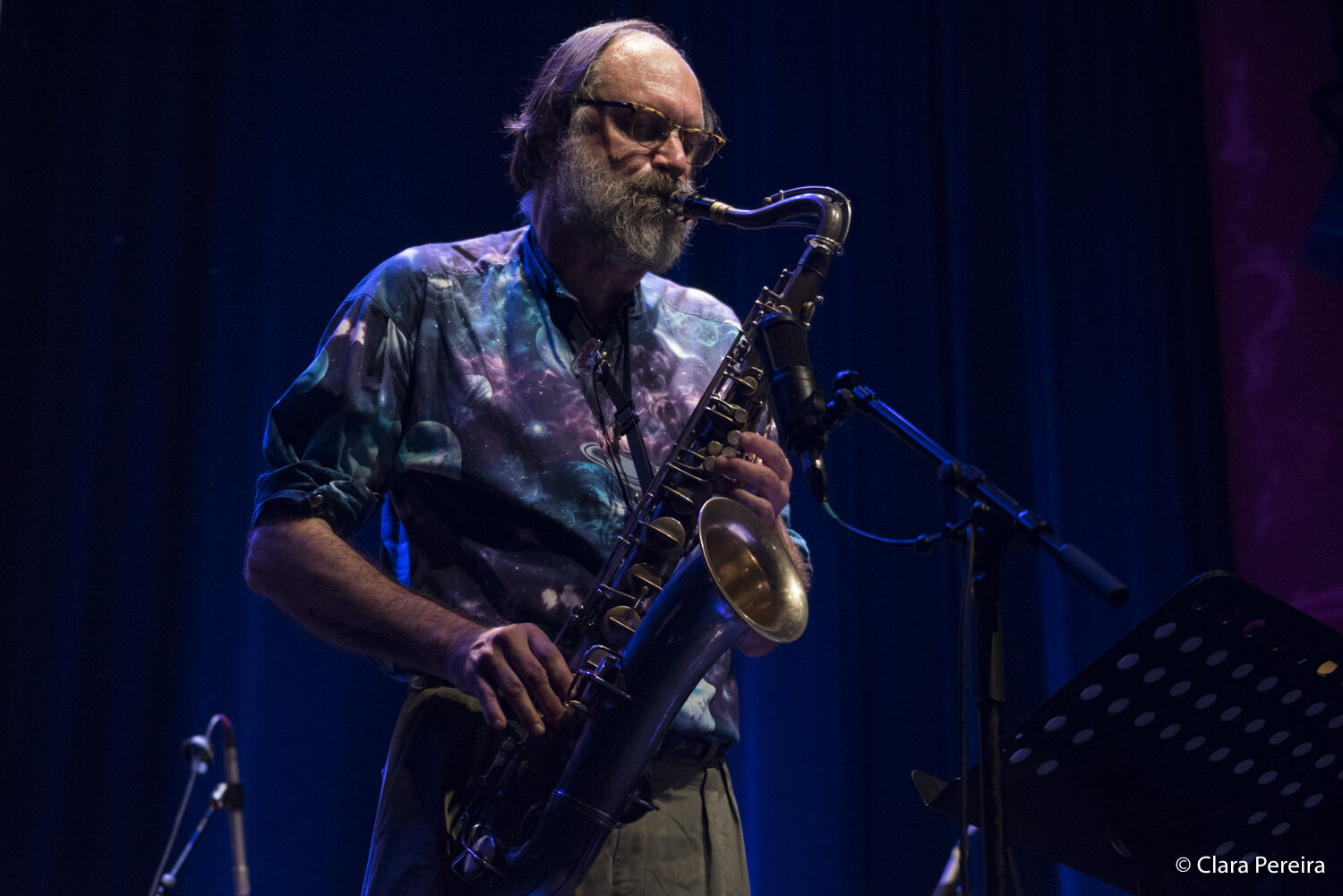
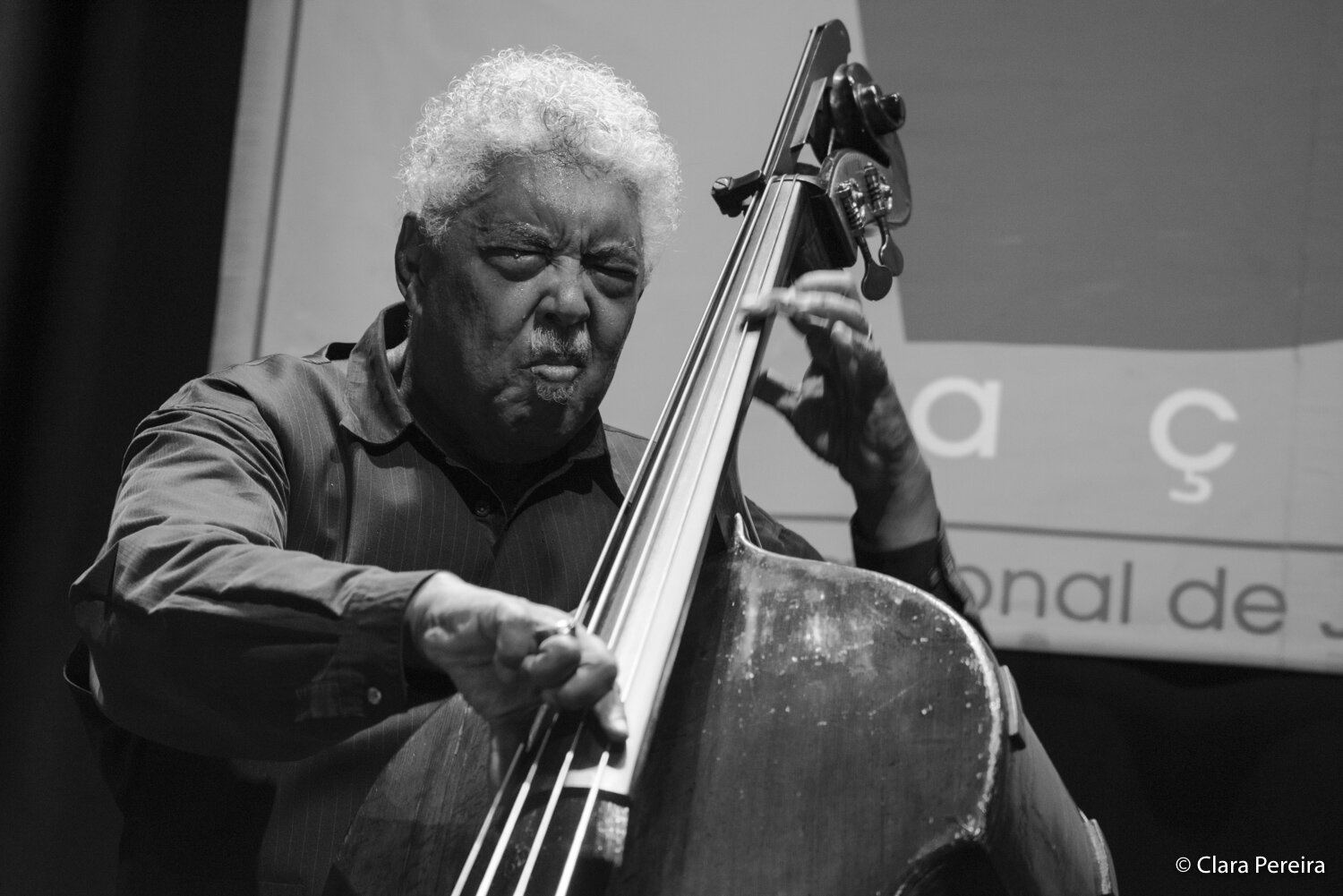
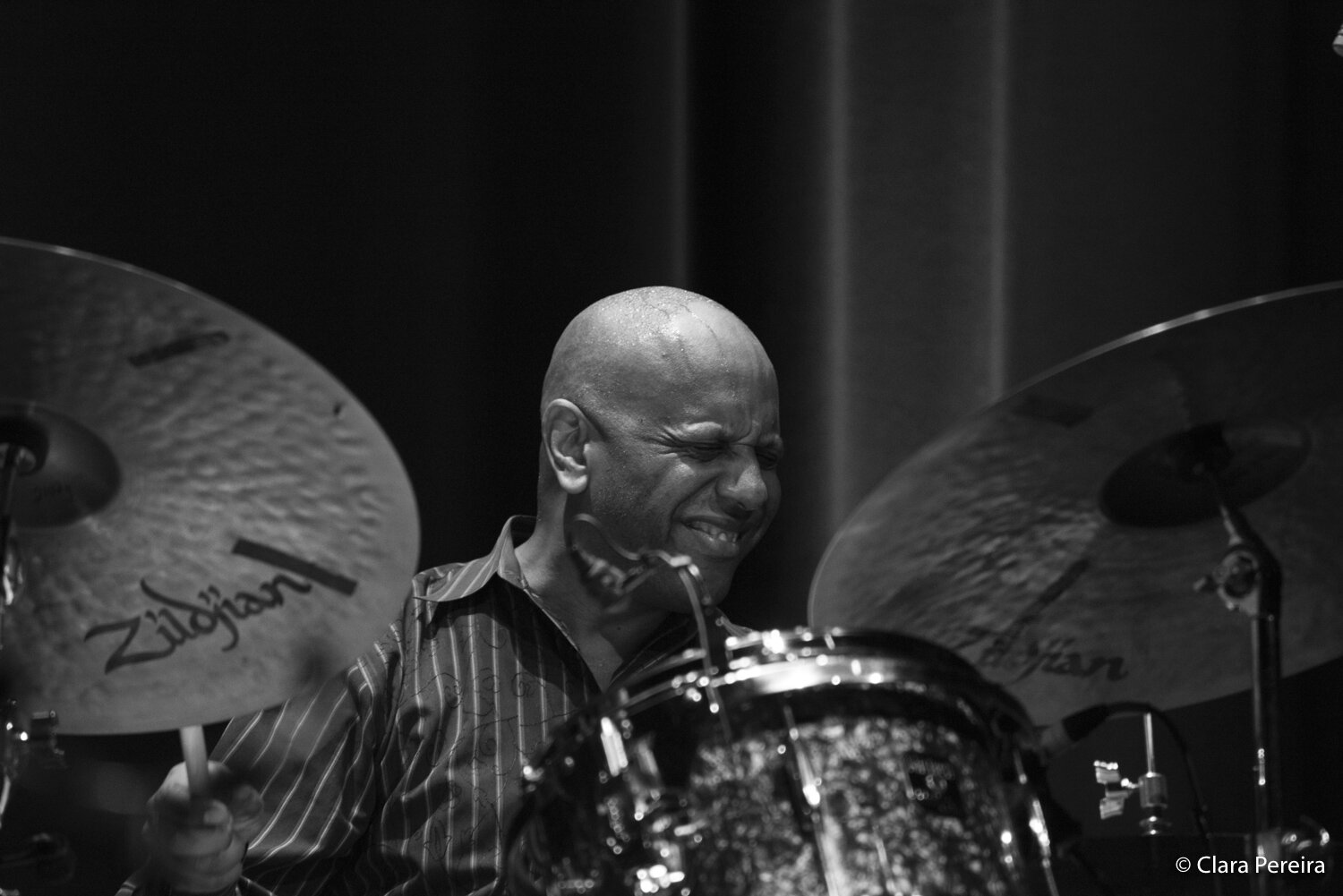
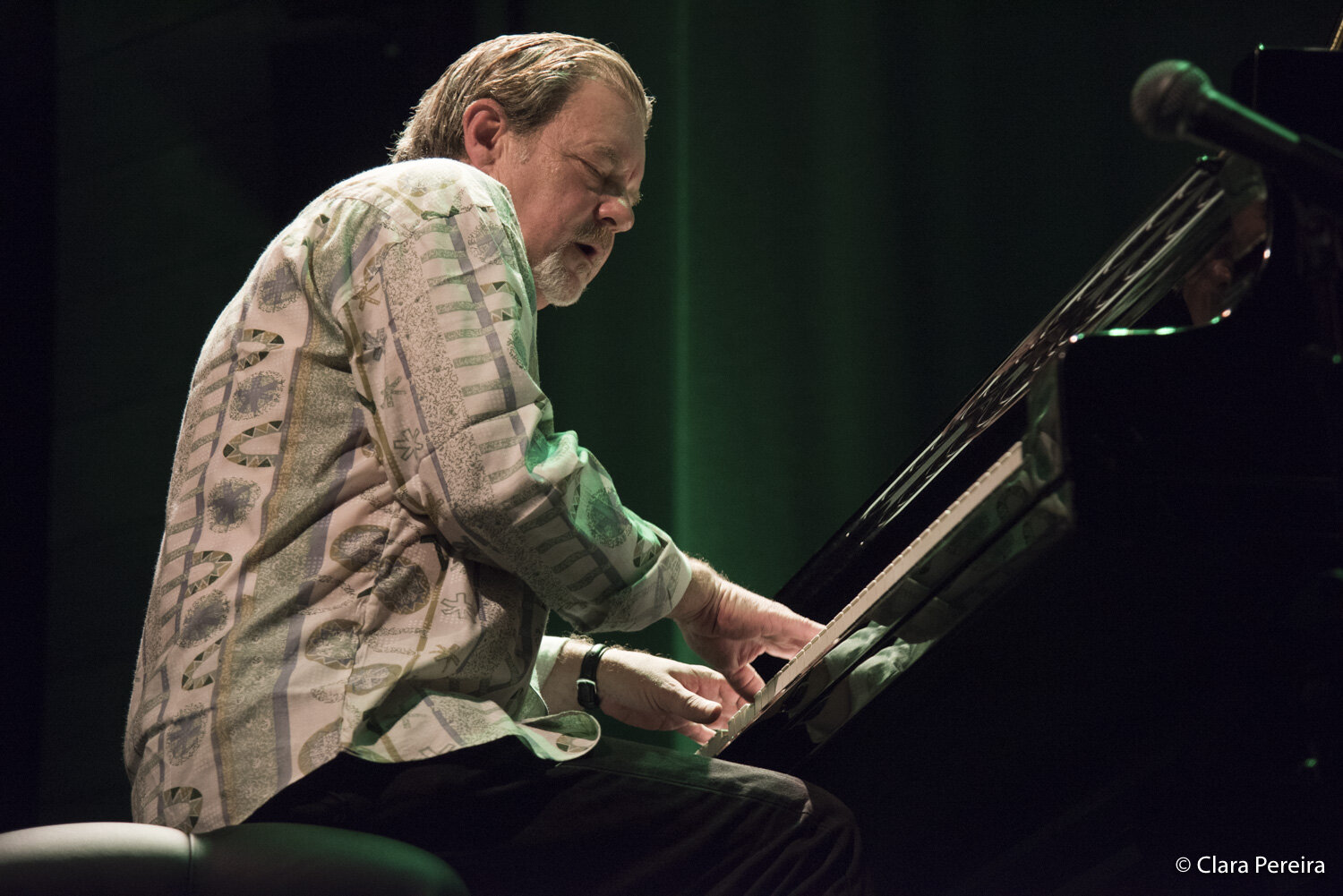
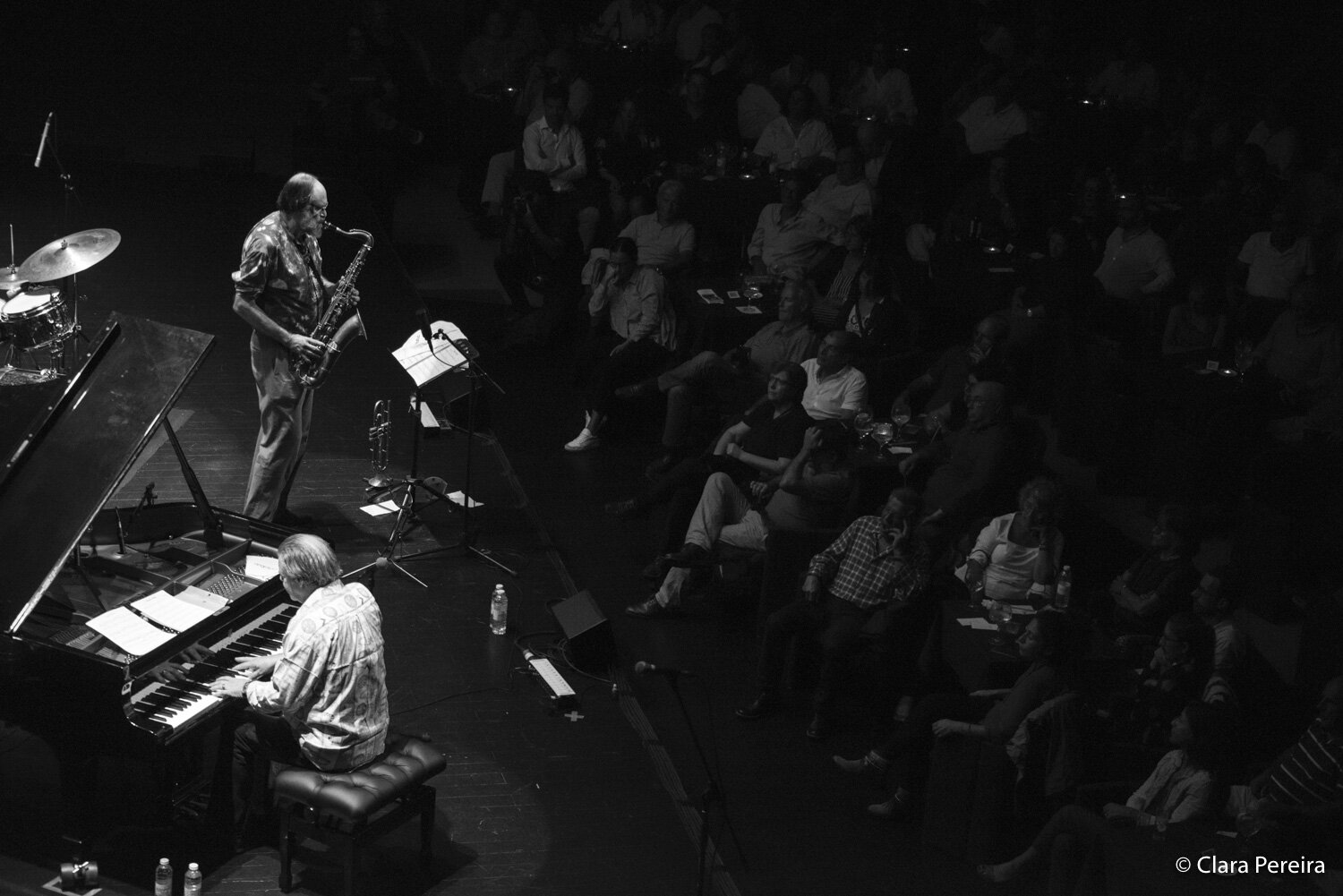
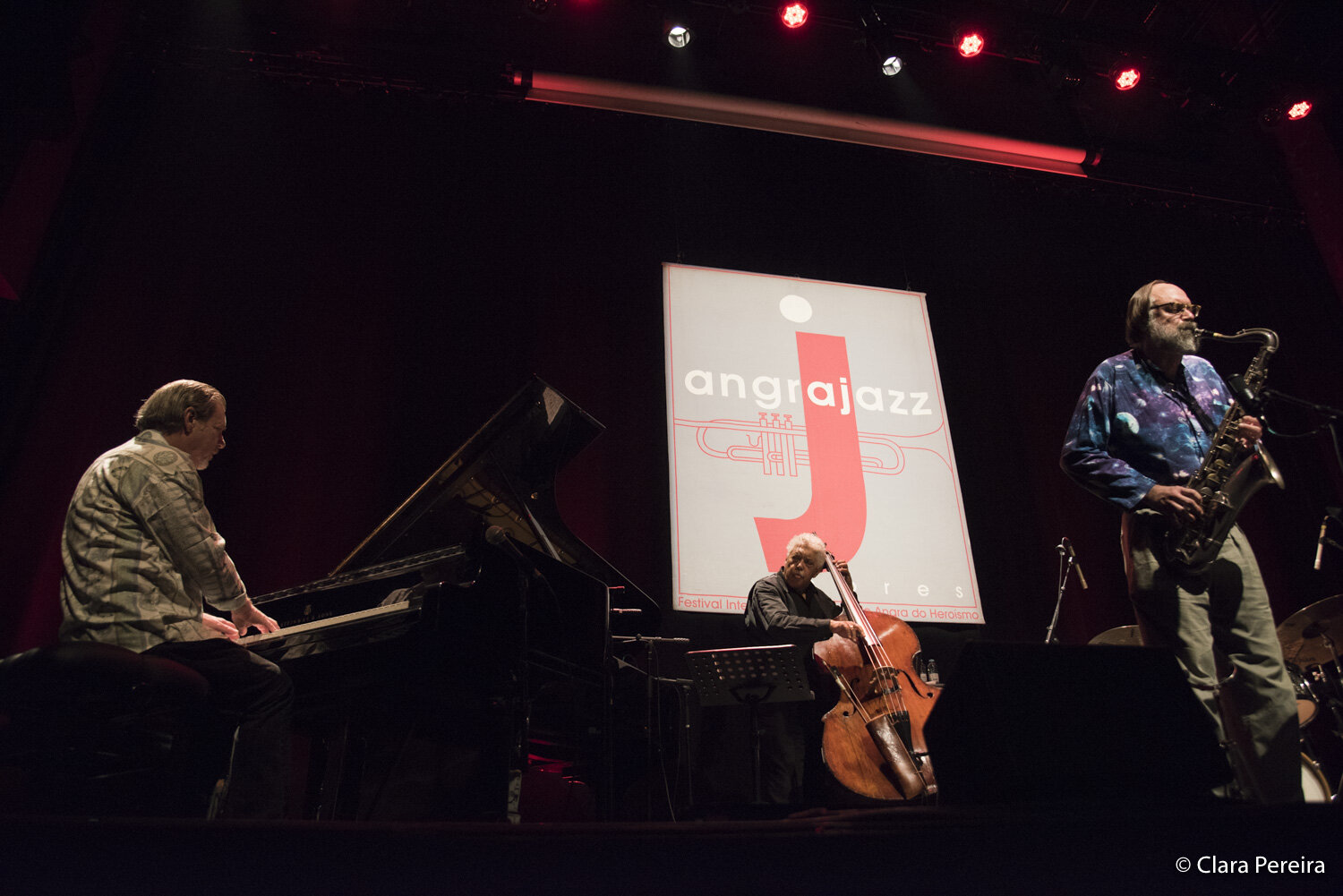
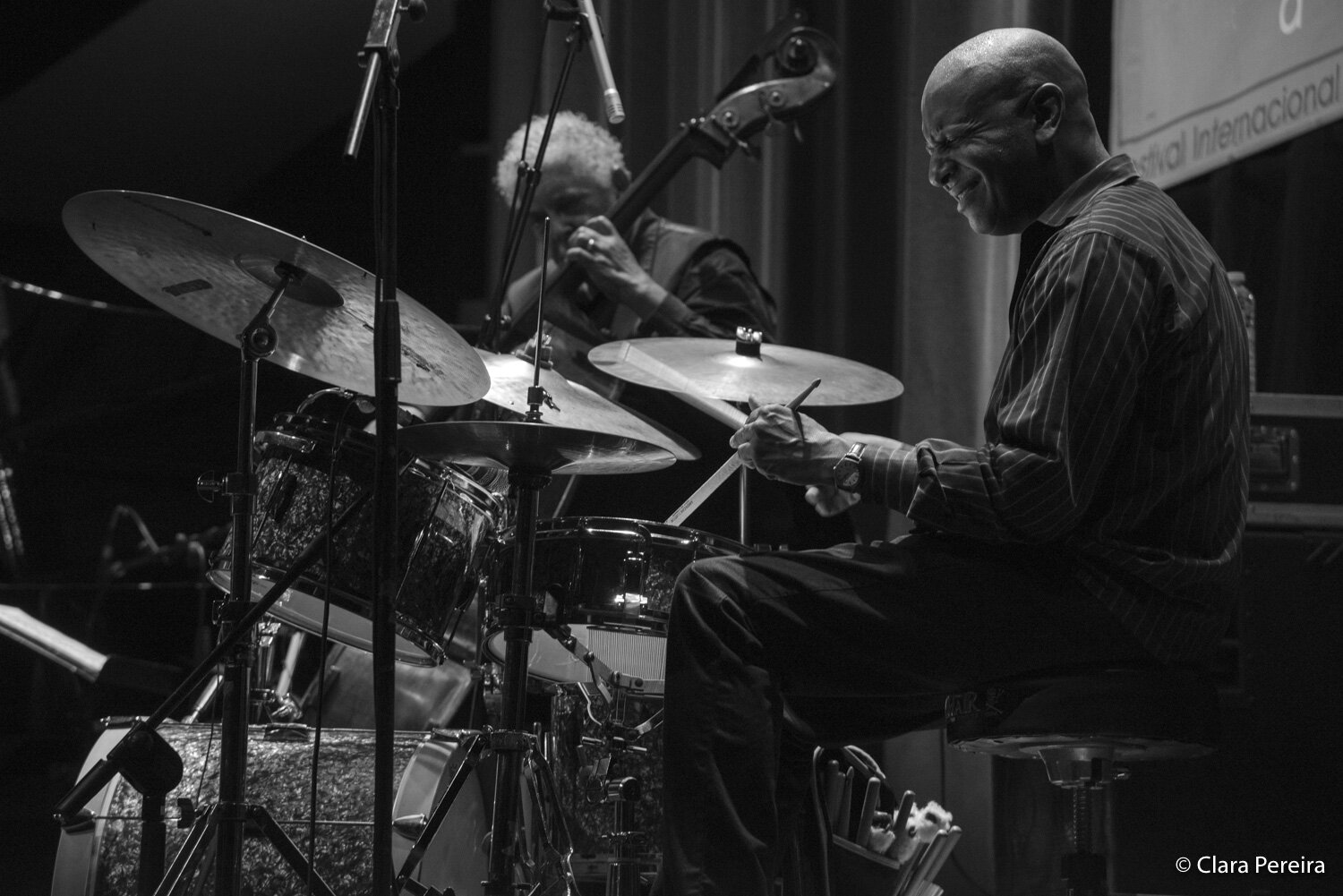
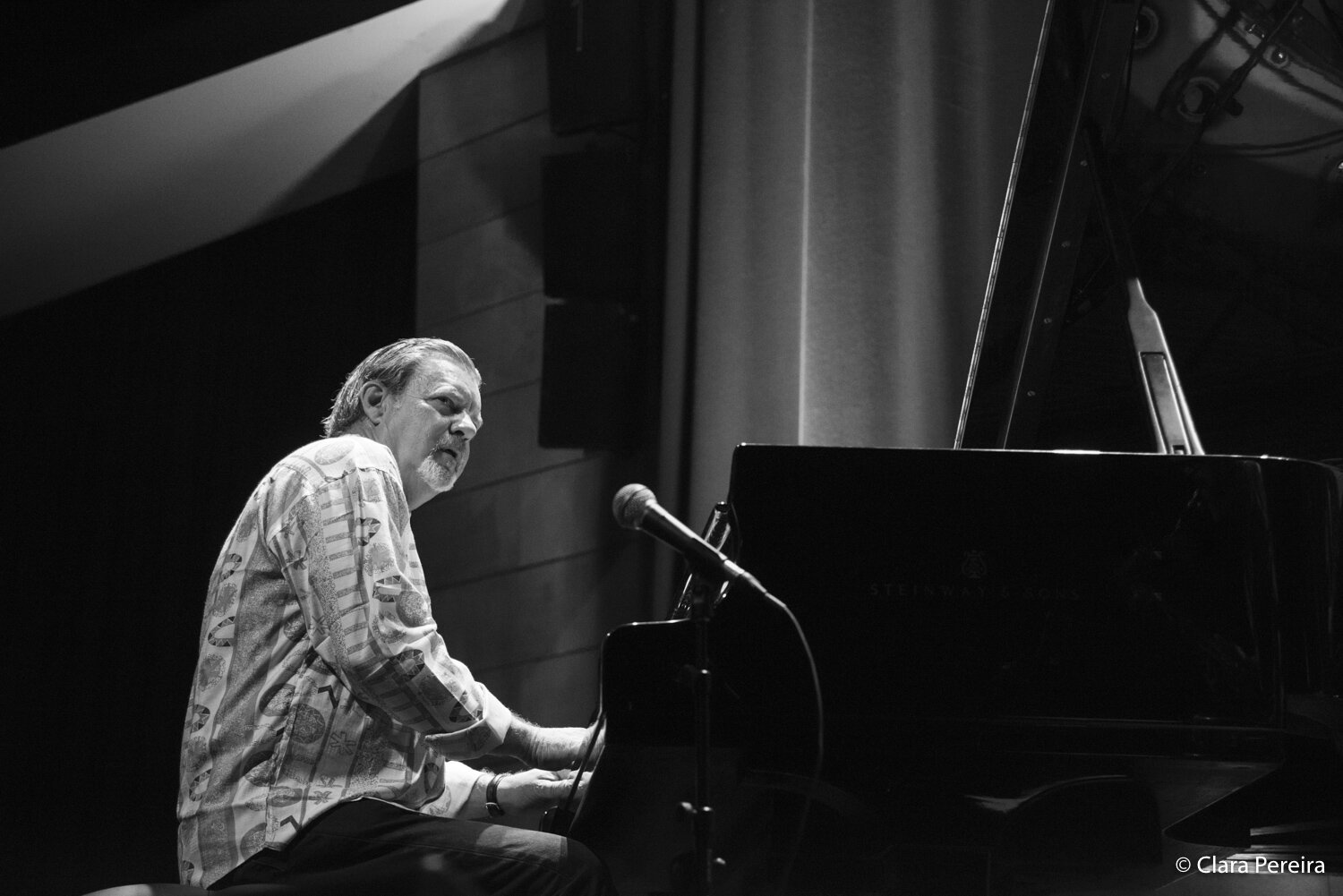
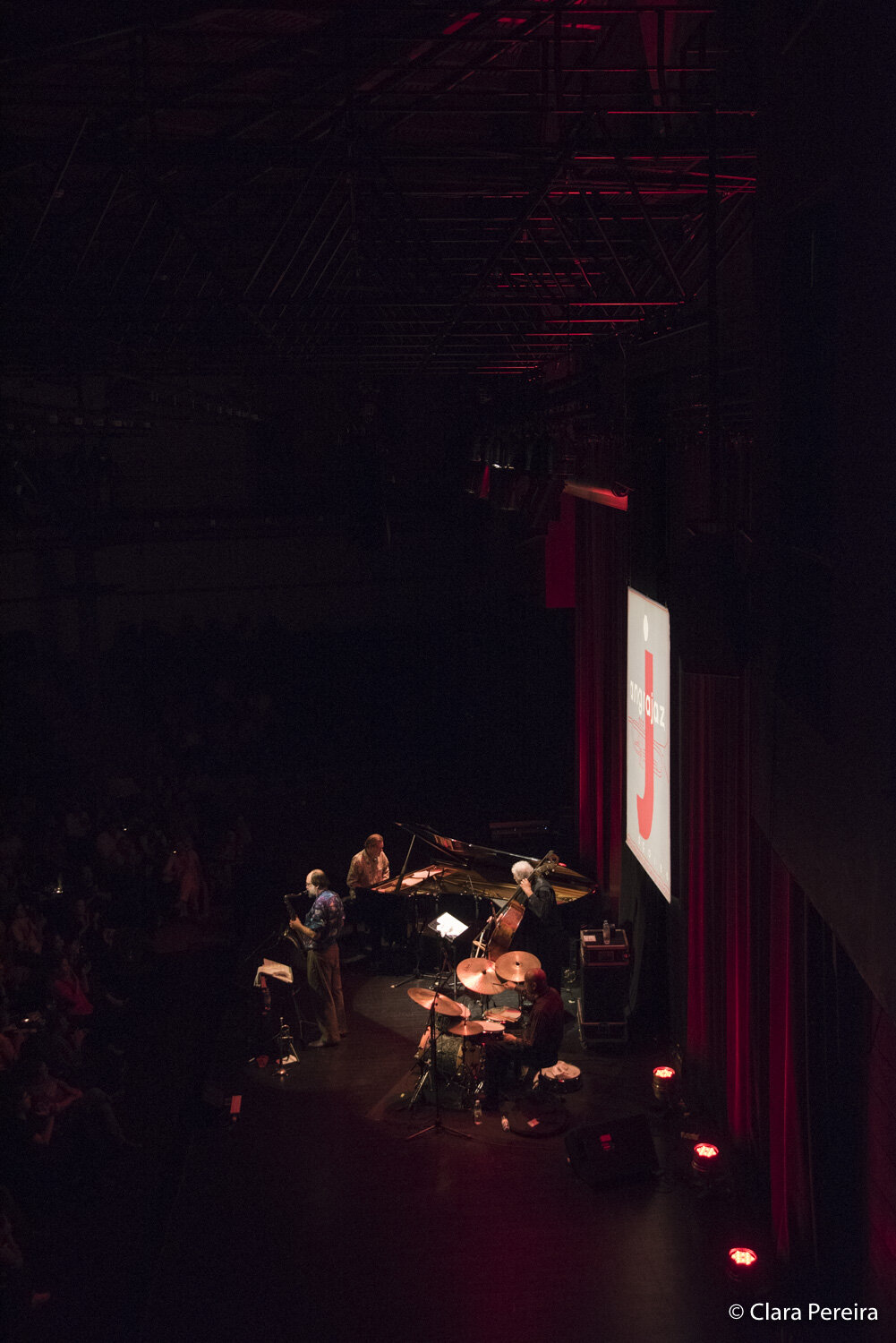
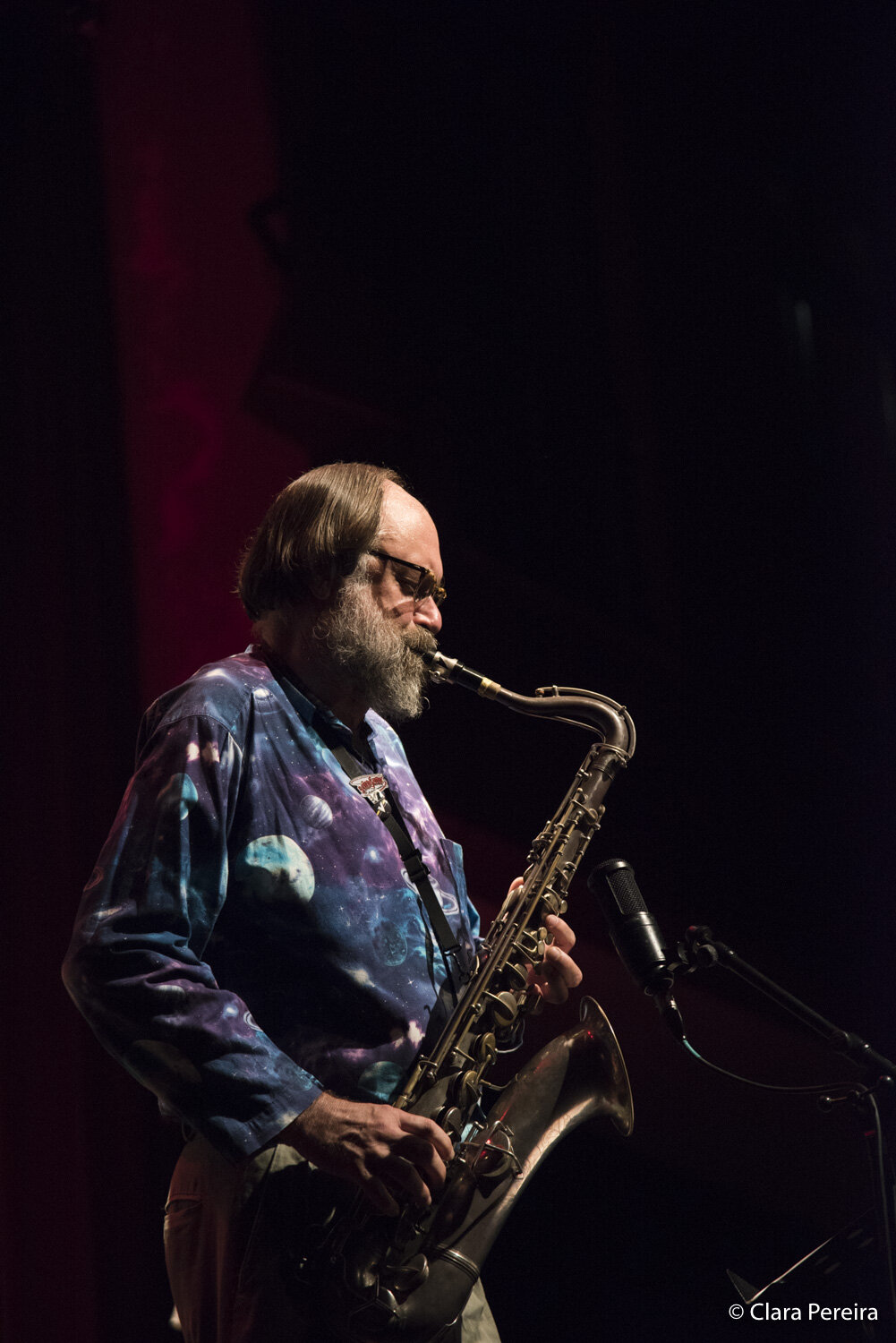

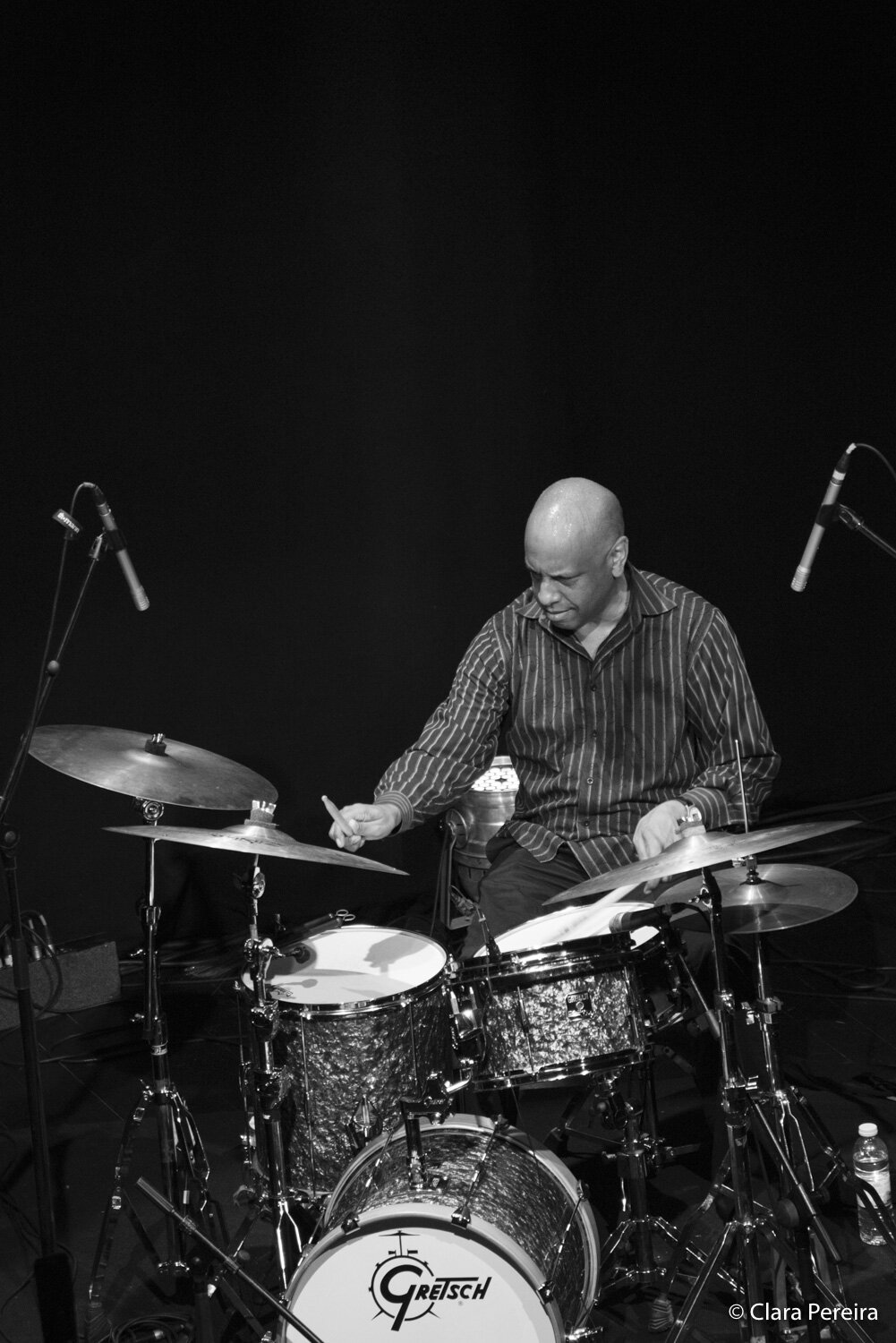
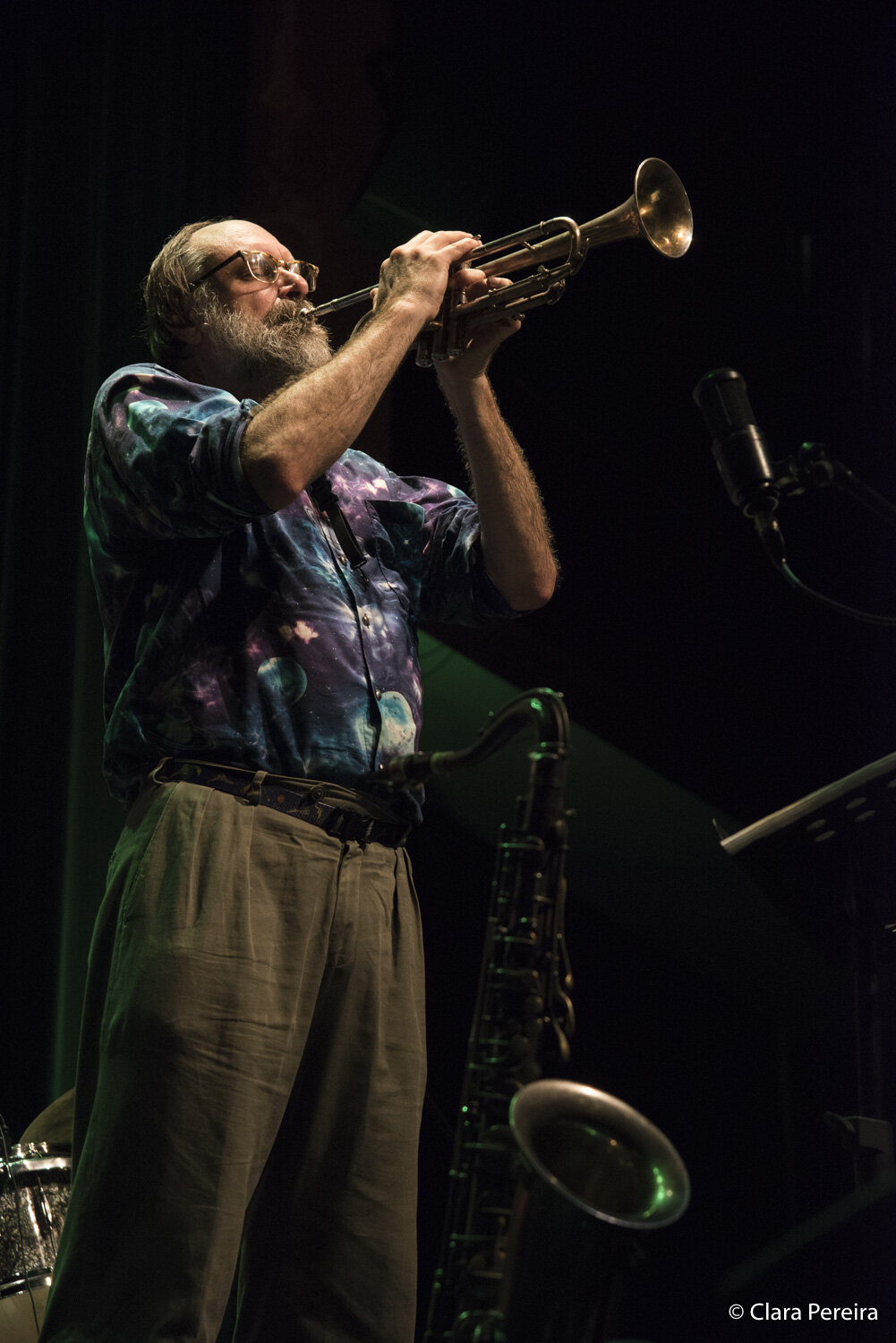
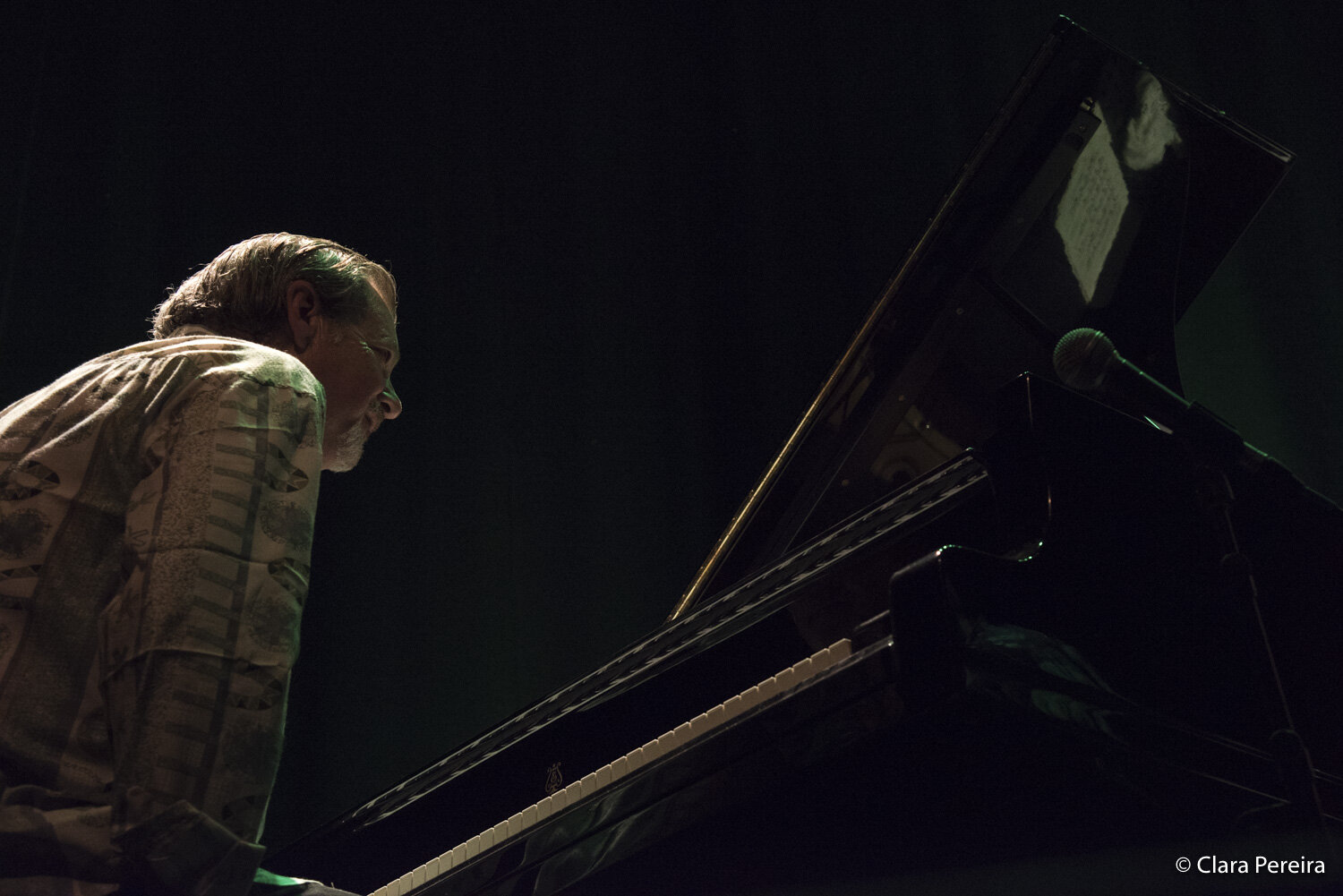
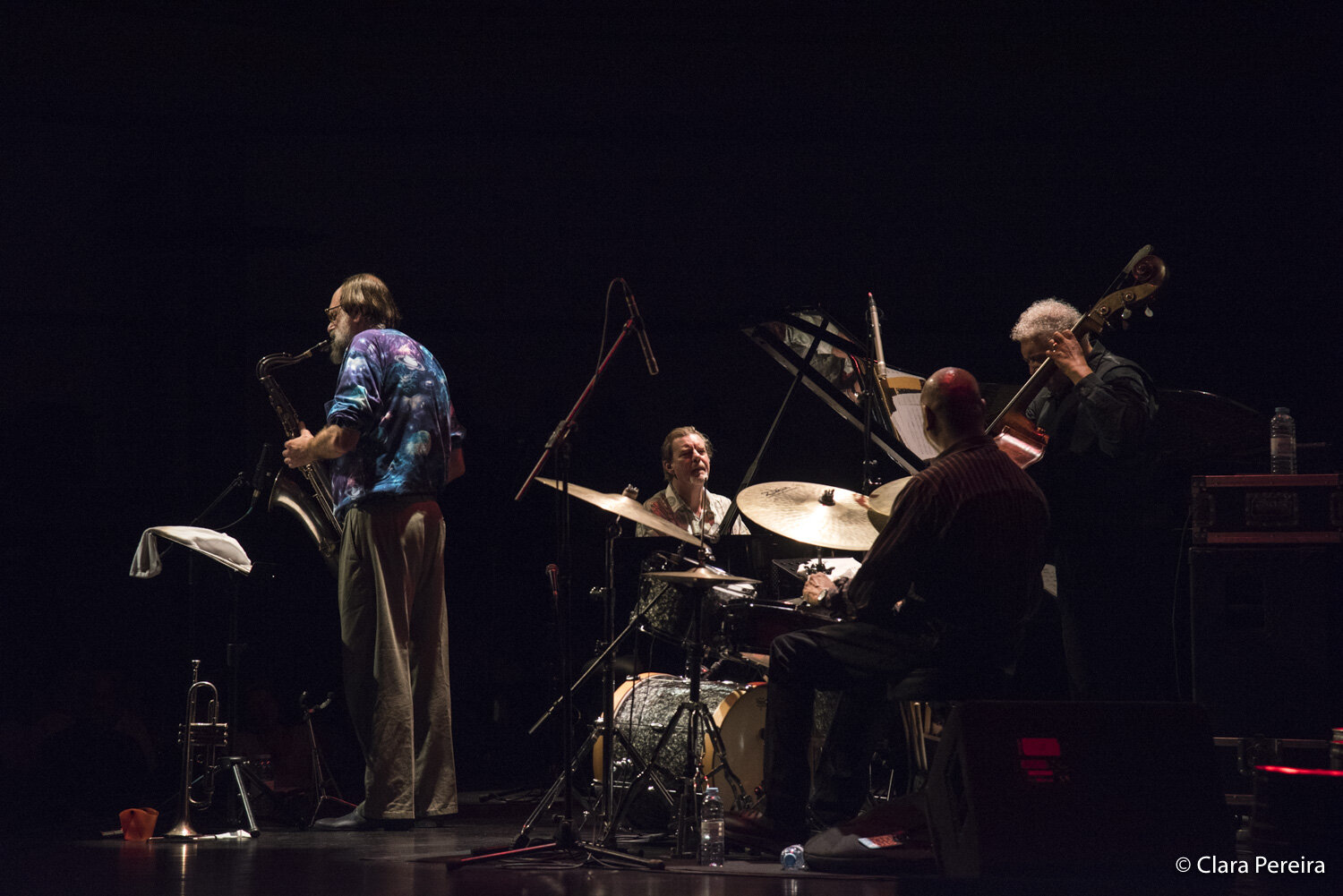
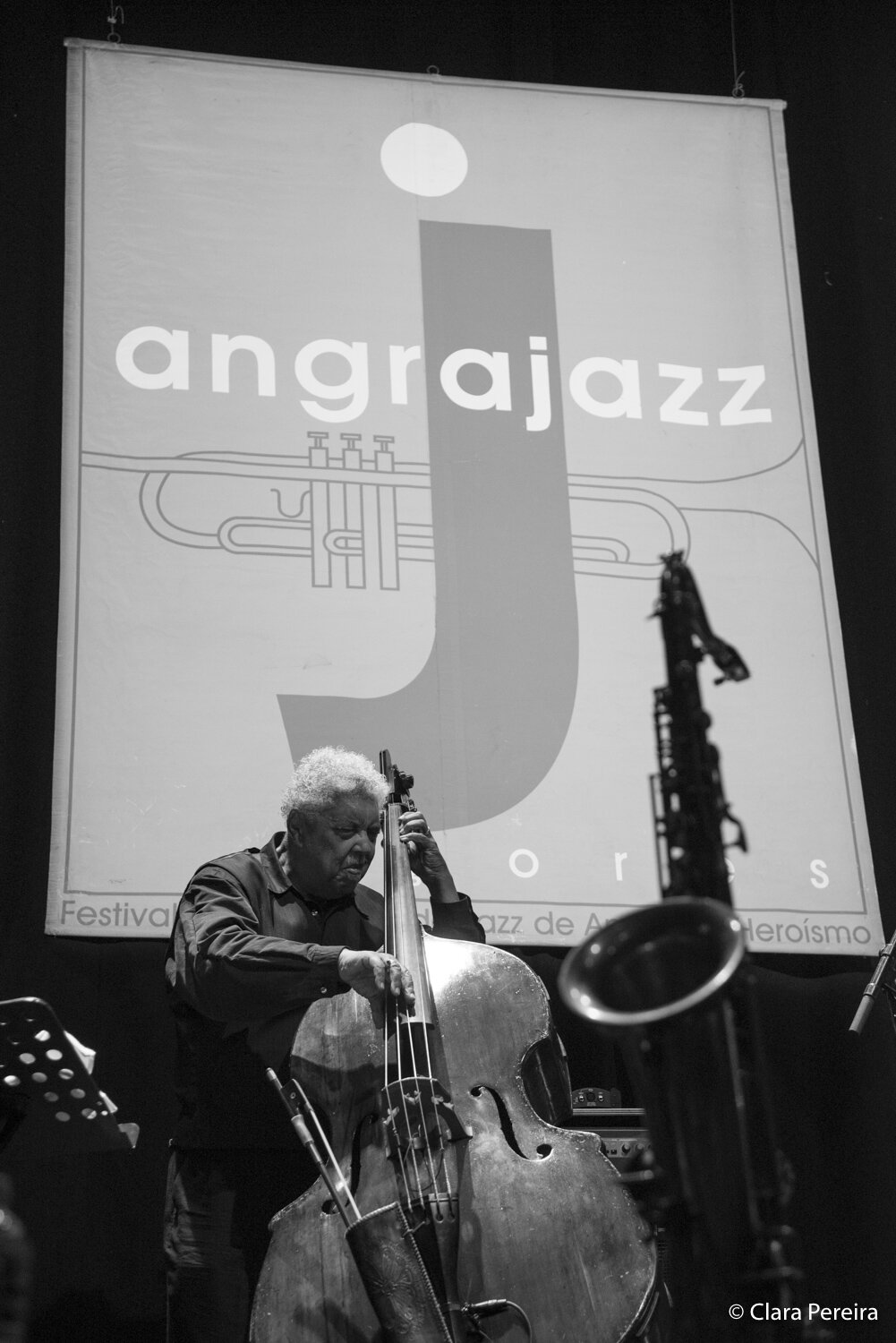
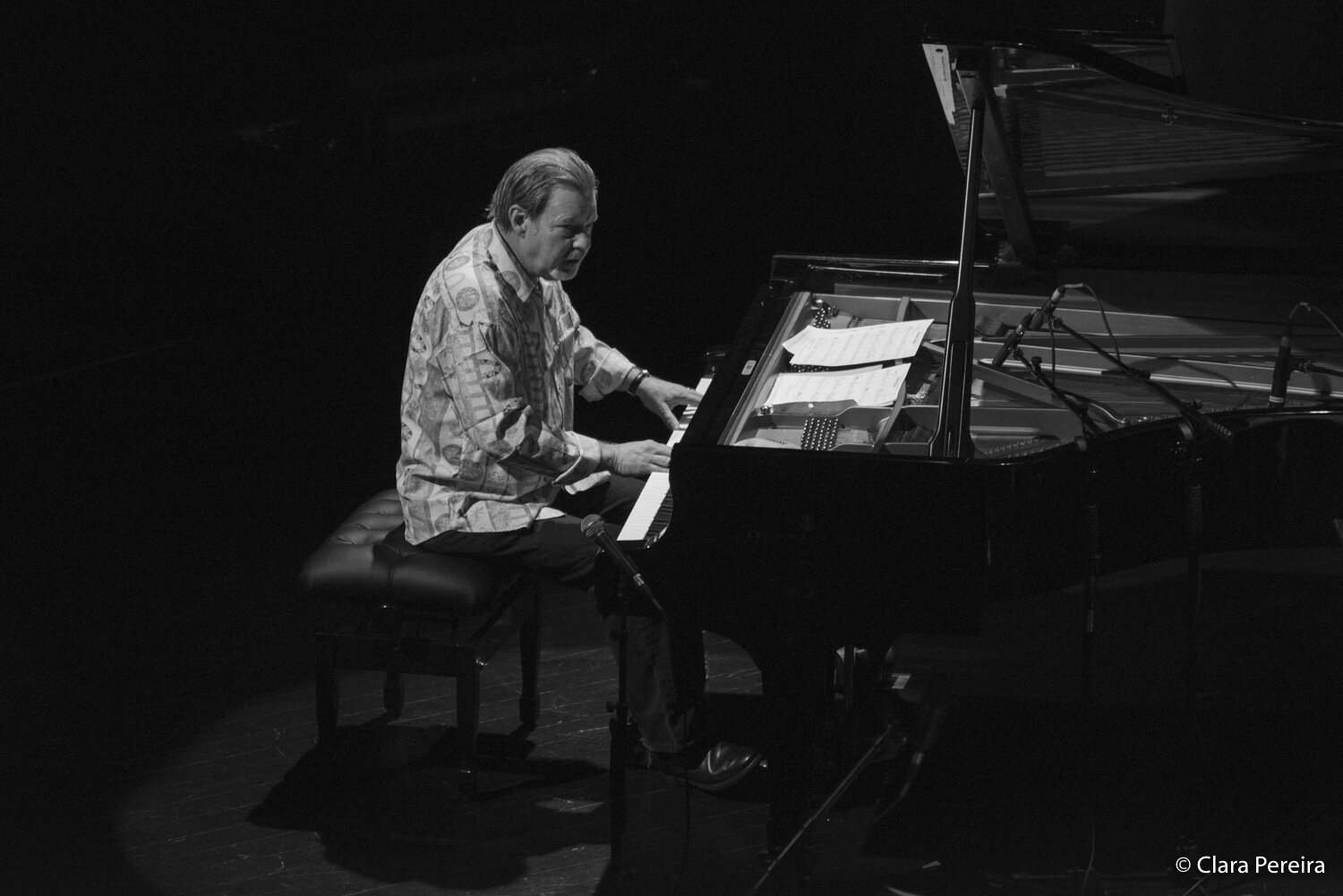
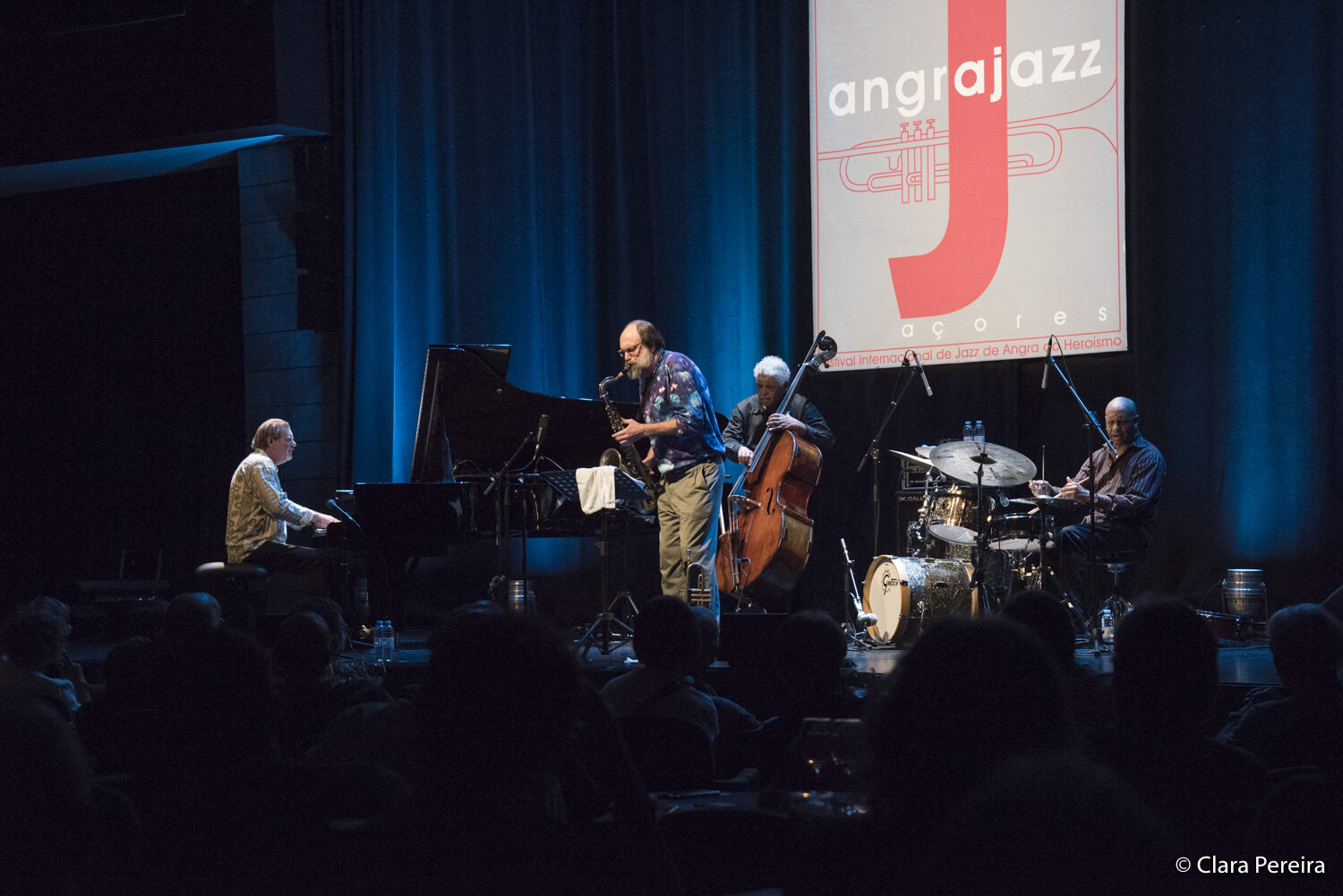
SATURDAY, Oct 5TH
THE ALLAN HARRIS BAND
Opening the last night of the festival, The Allan Harris Band was a disappointment for several reasons. The singer, guitarist, and bandleader is a natural storyteller, and entertained the audience with personal stories like “Miami”, taken from his 2015 album Black Bar Jukebox, and “Can’t Live My Life Without You”, a smooth R&B exercise immersed in bluesy tones. However, the band didn’t reveal the adherence required and Harris was adrift with some difficulties to find his voice. He was accompanied by pianist Arcoiris Sandoval, who showed some promising technique when soloing on keyboard, bassist Nimrod Speaks, and drummer Shirazette Tinnin.
Besides the repetition of processes and the excessive duration of the show (nearly two hours), the chosen songs, mostly based on old standards and typical blues, failed to win me over due to the basic arrangements and limited improvisational expansion. “Jeannine”, “I Remember You”, “When I Fall in Love”, “The Very Thought of You”, and “Nature Boy” were some of the standards revisited. Moreover, “Fly Me to the Moon”, here subjected to an uninspired blues treatment and lacking the in-the-pocket factor, Dorival Caymmi’s “Doralice”, sung in a weird Portuguese, and a so-so rendition of Miles Davis’ “So What”, didn’t bring any magic to the gig.
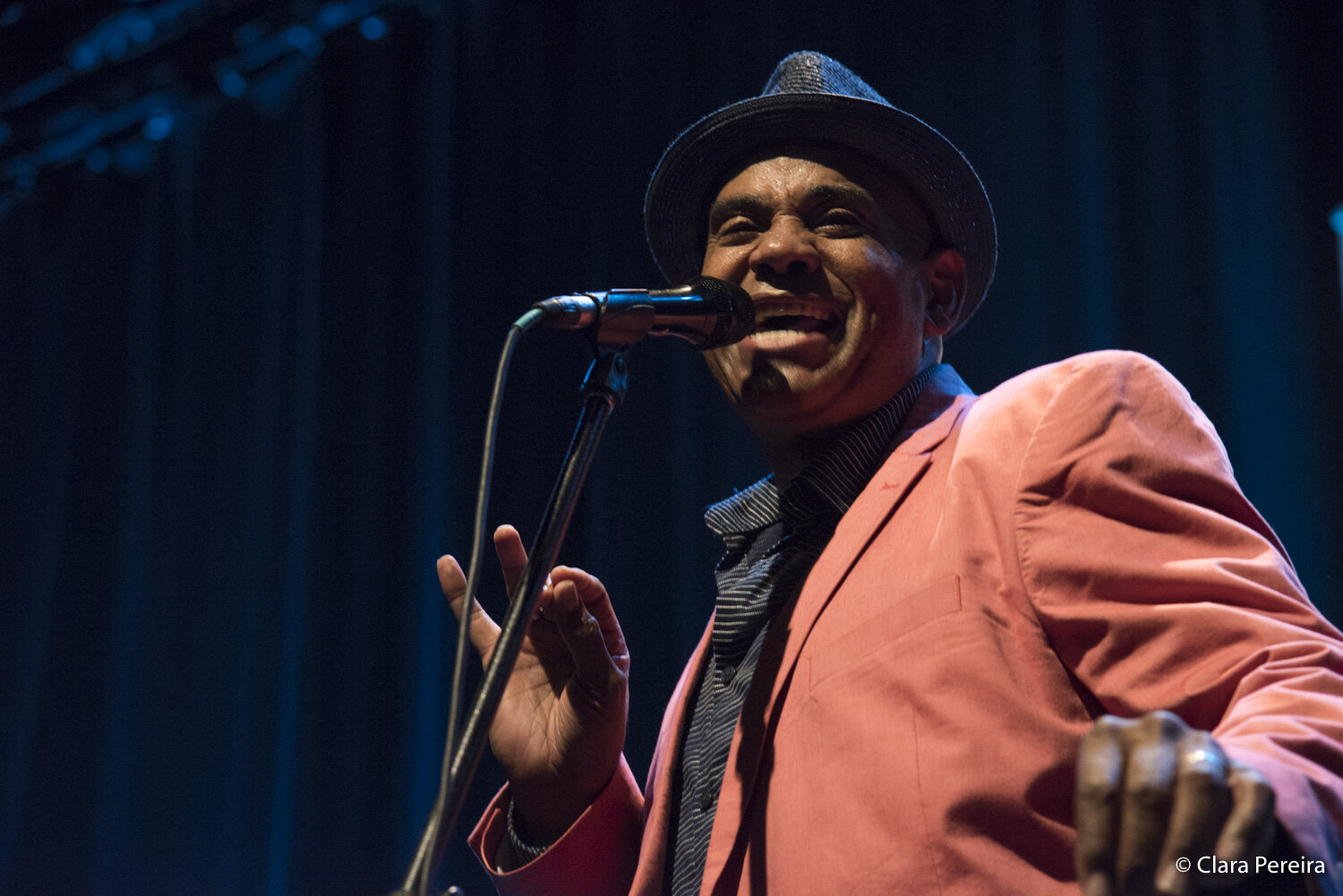
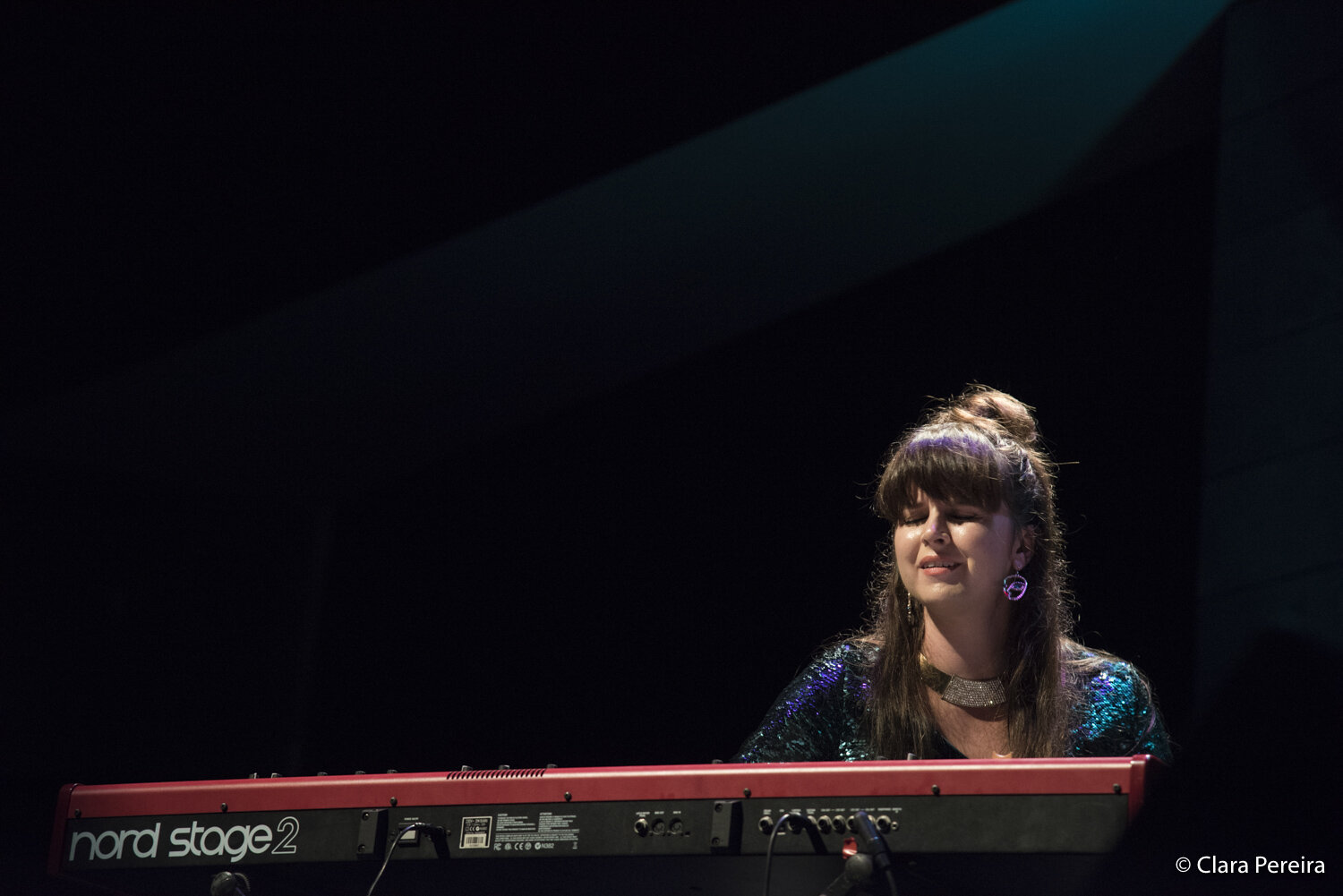
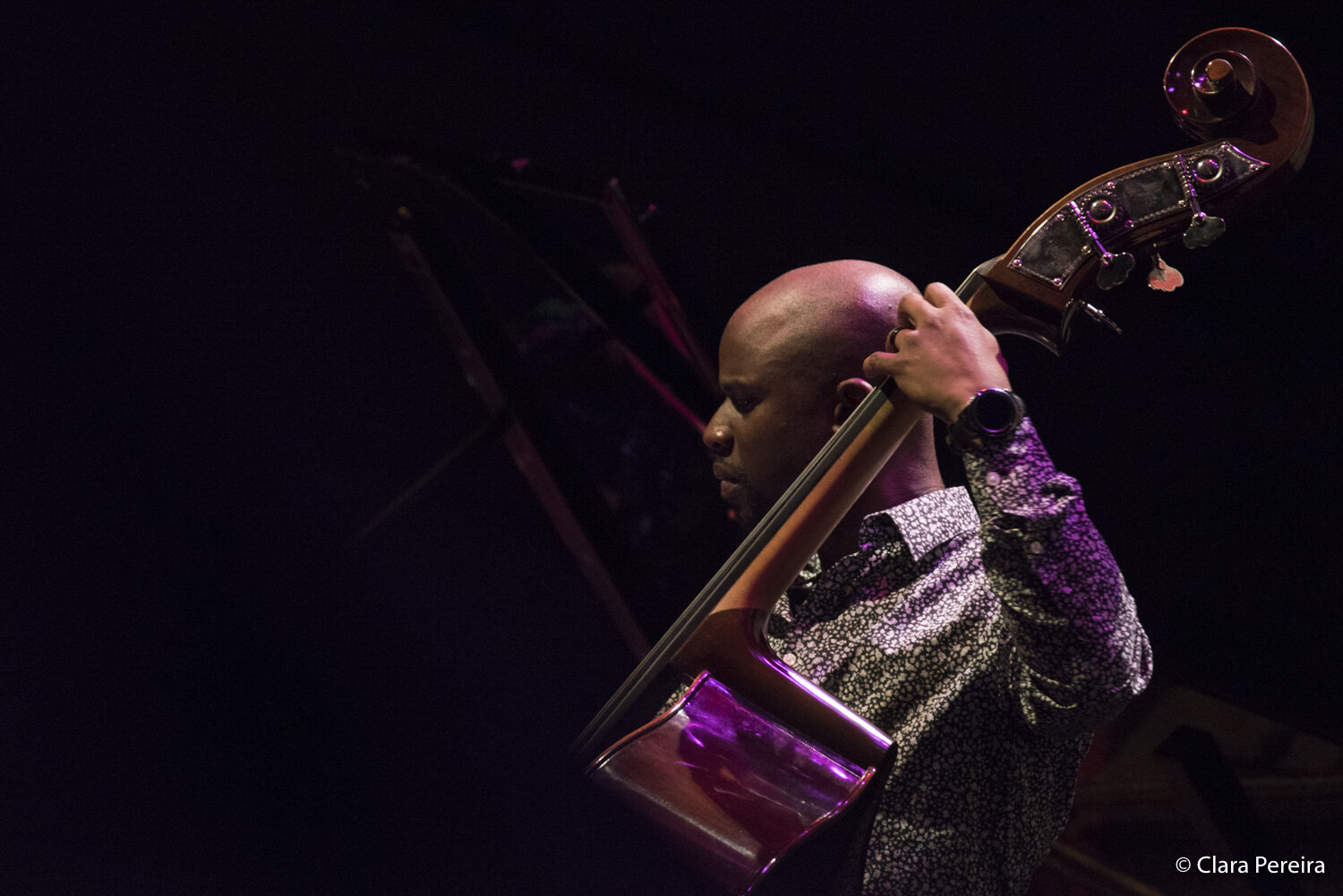
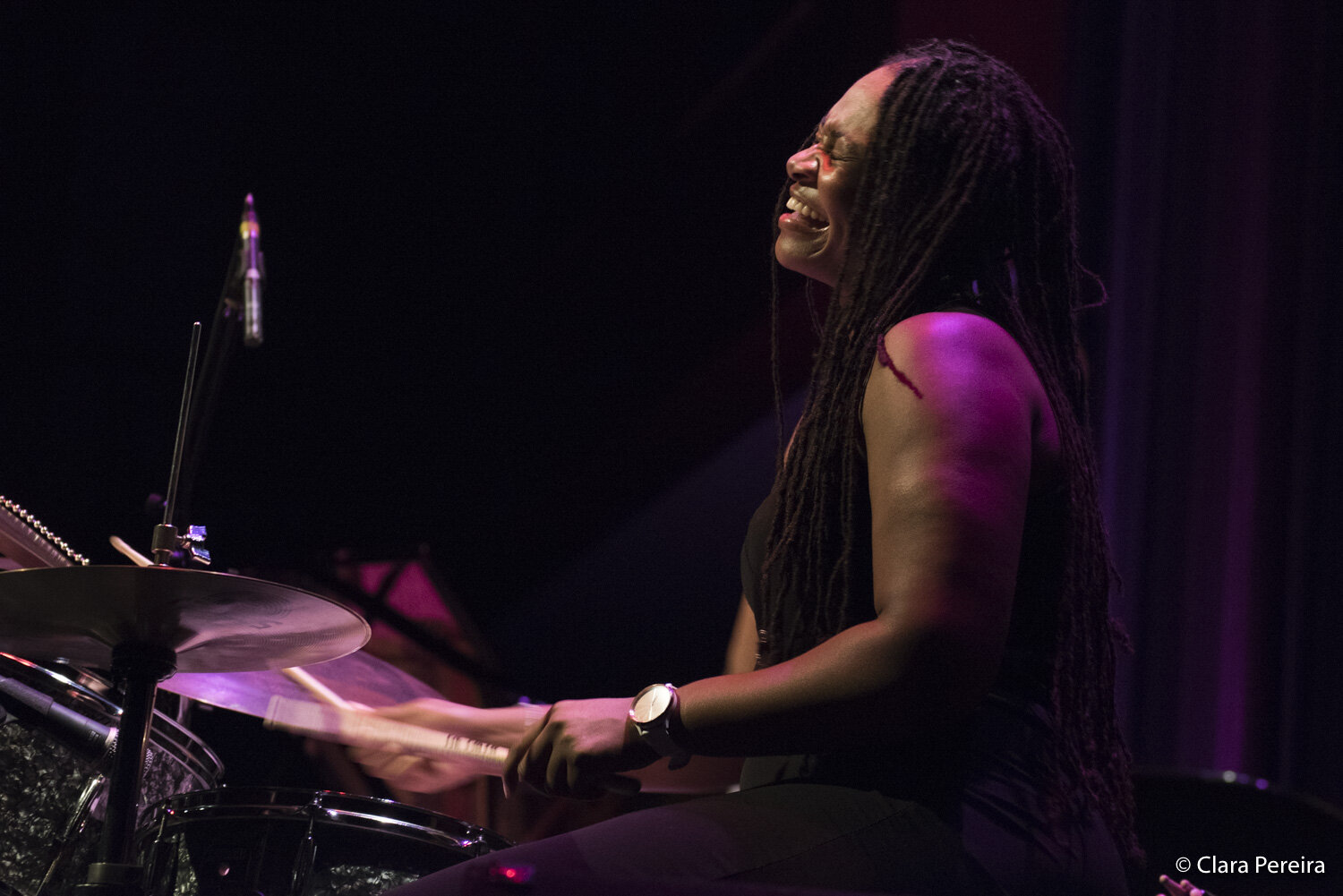
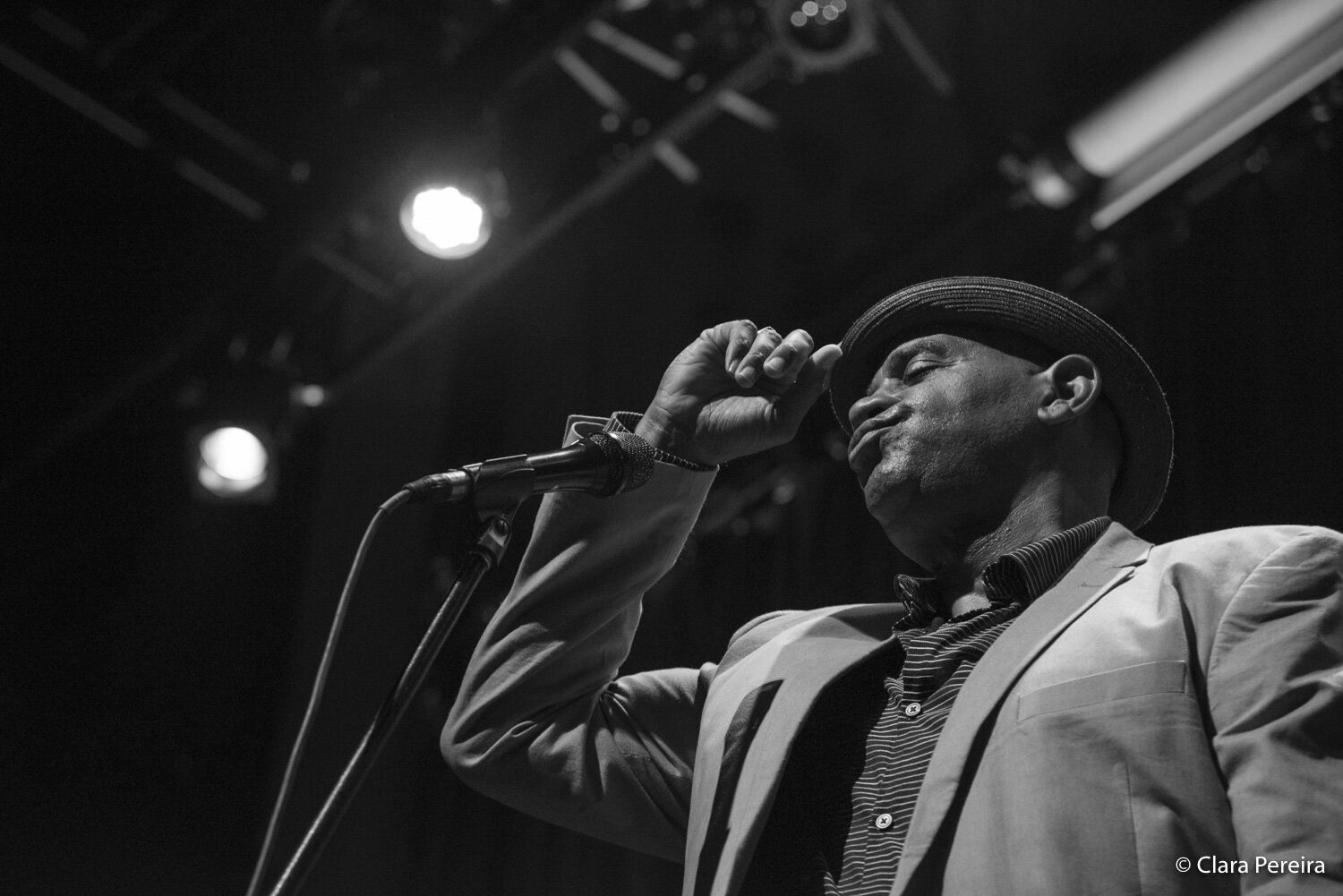
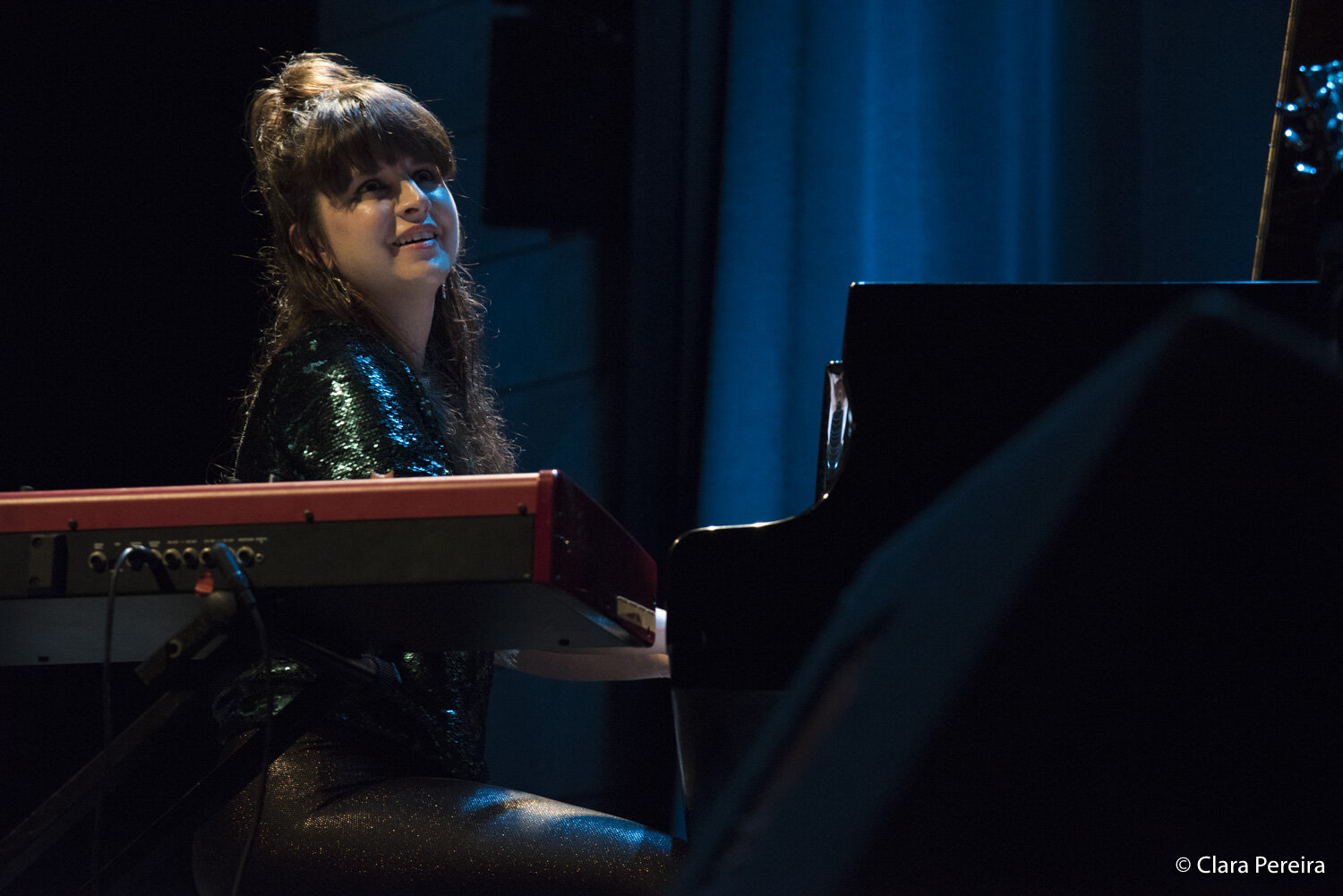

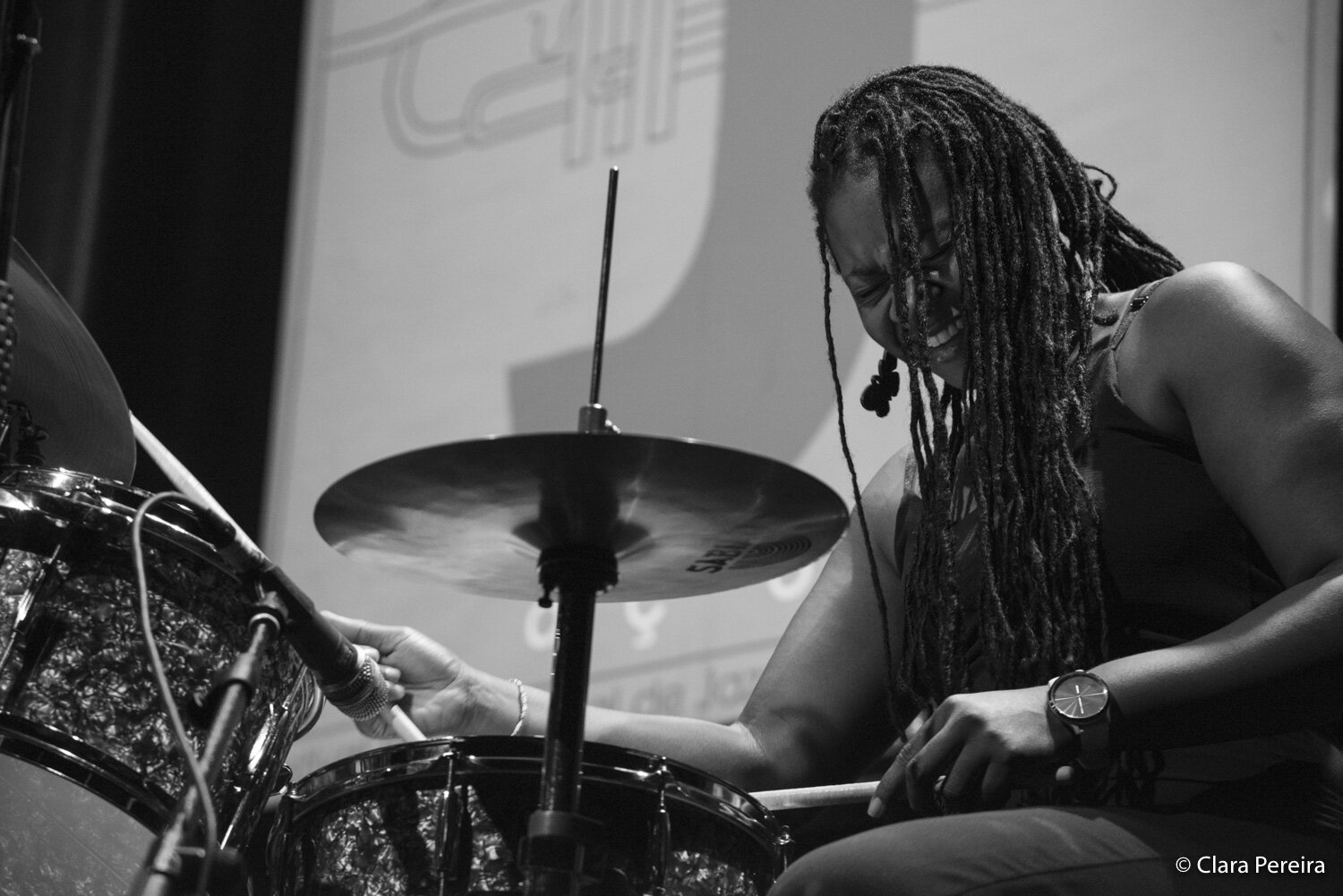
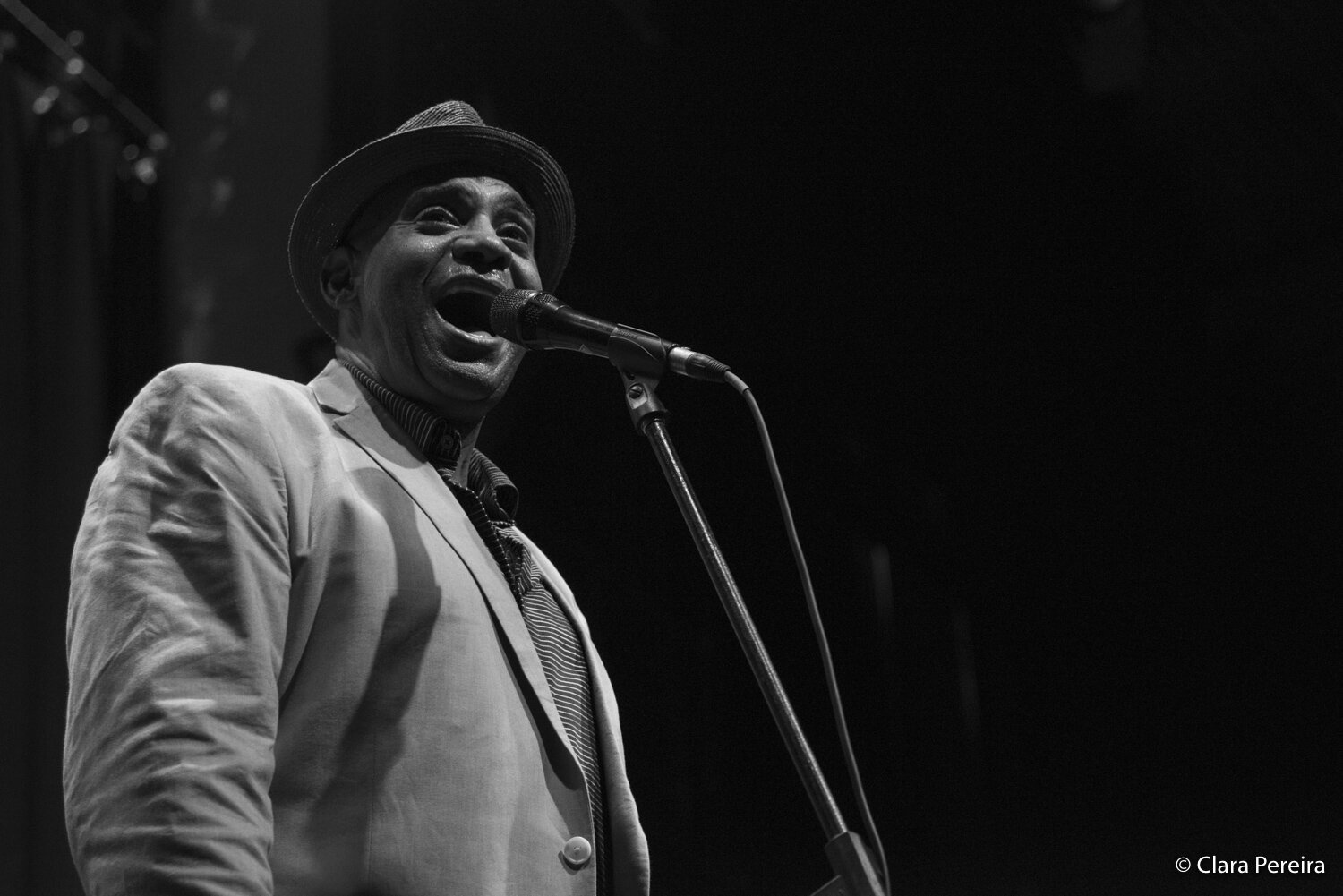
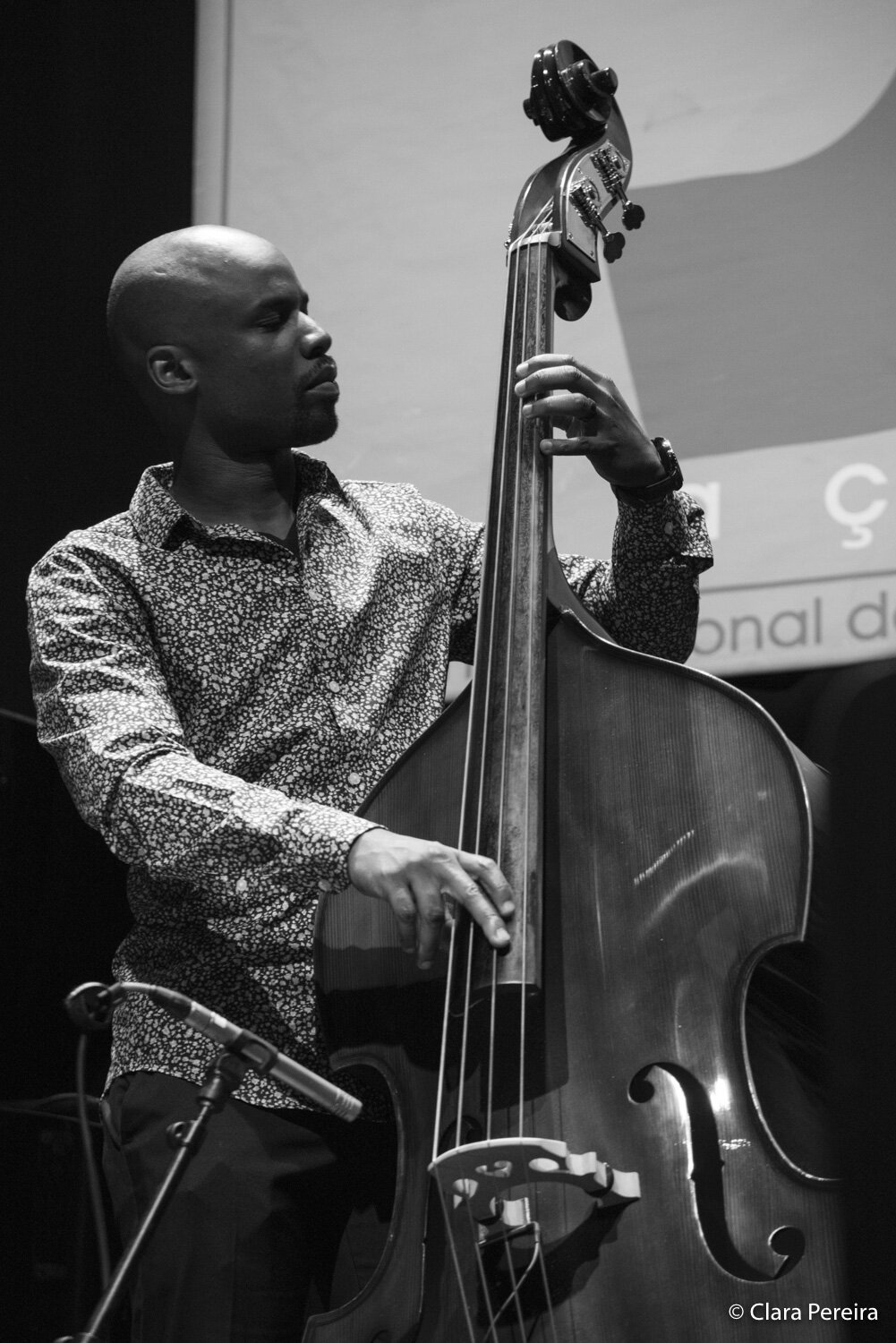
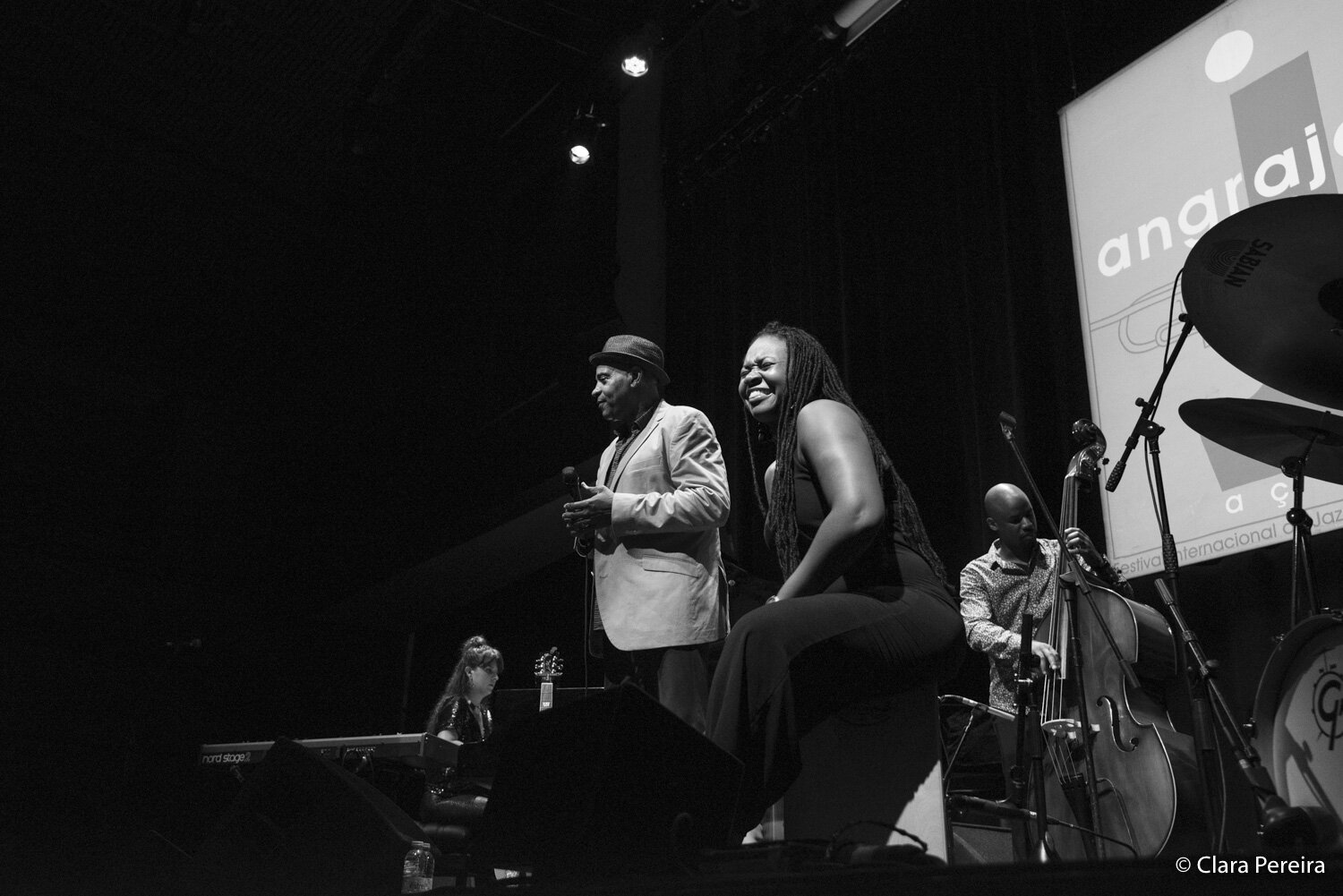
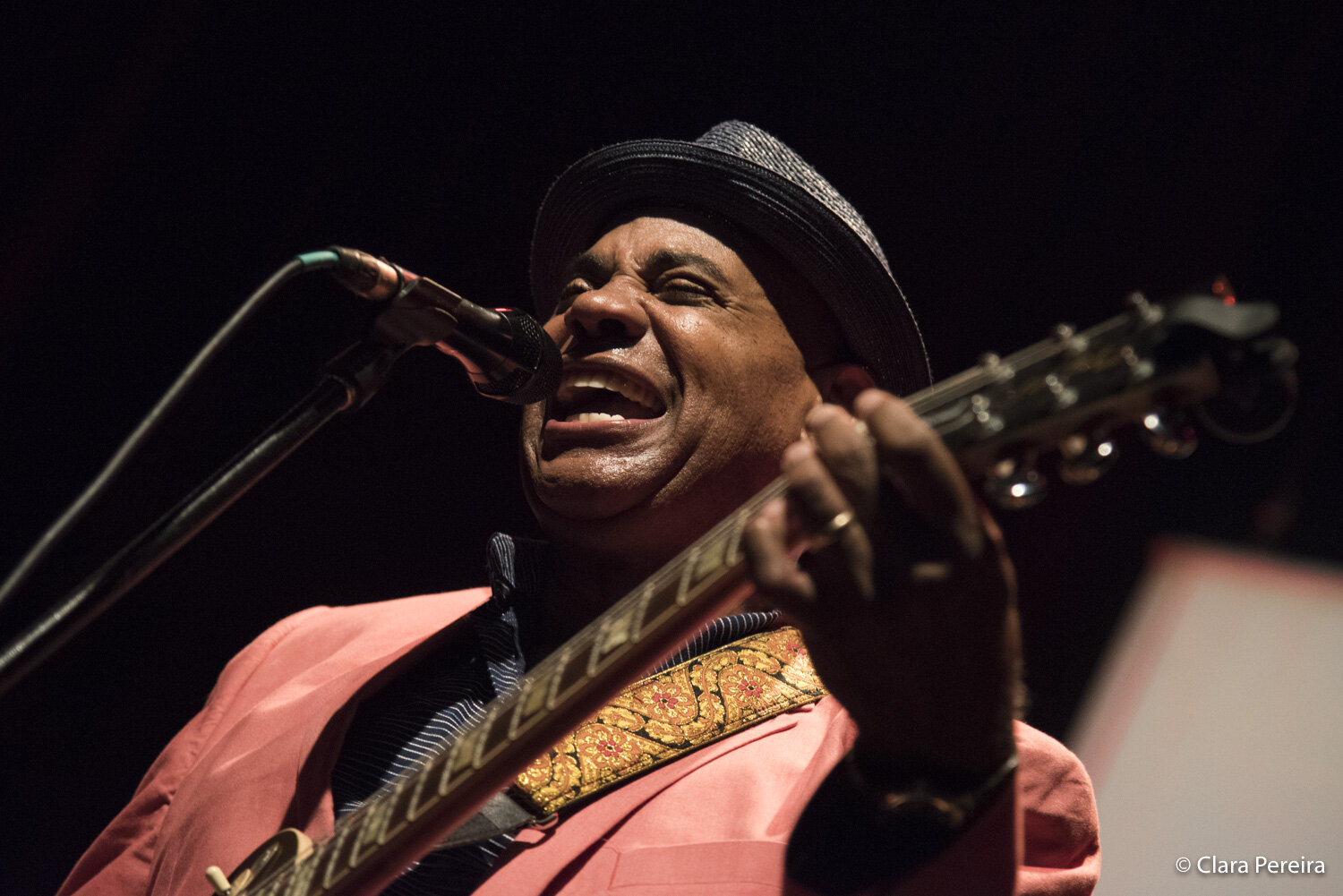
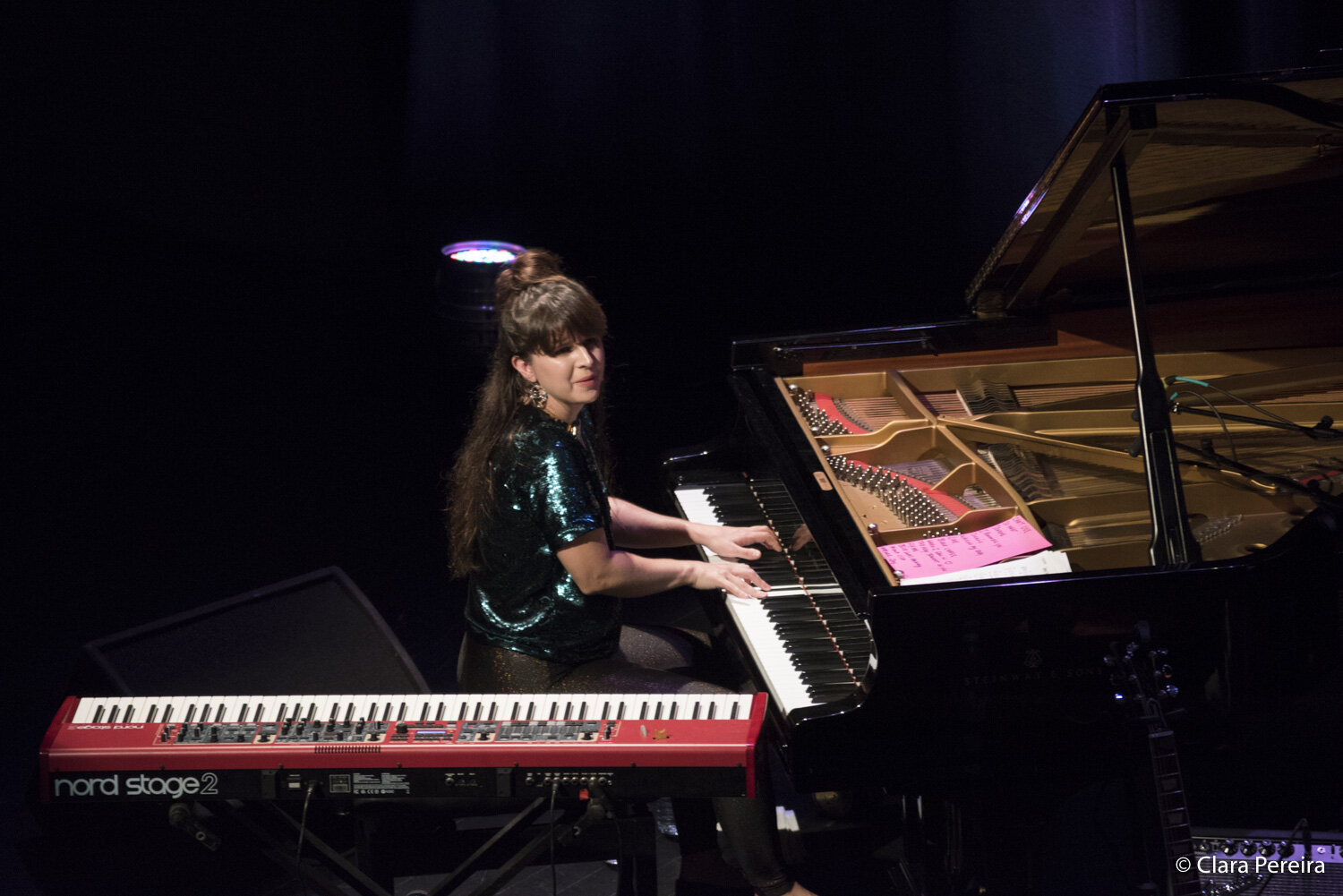
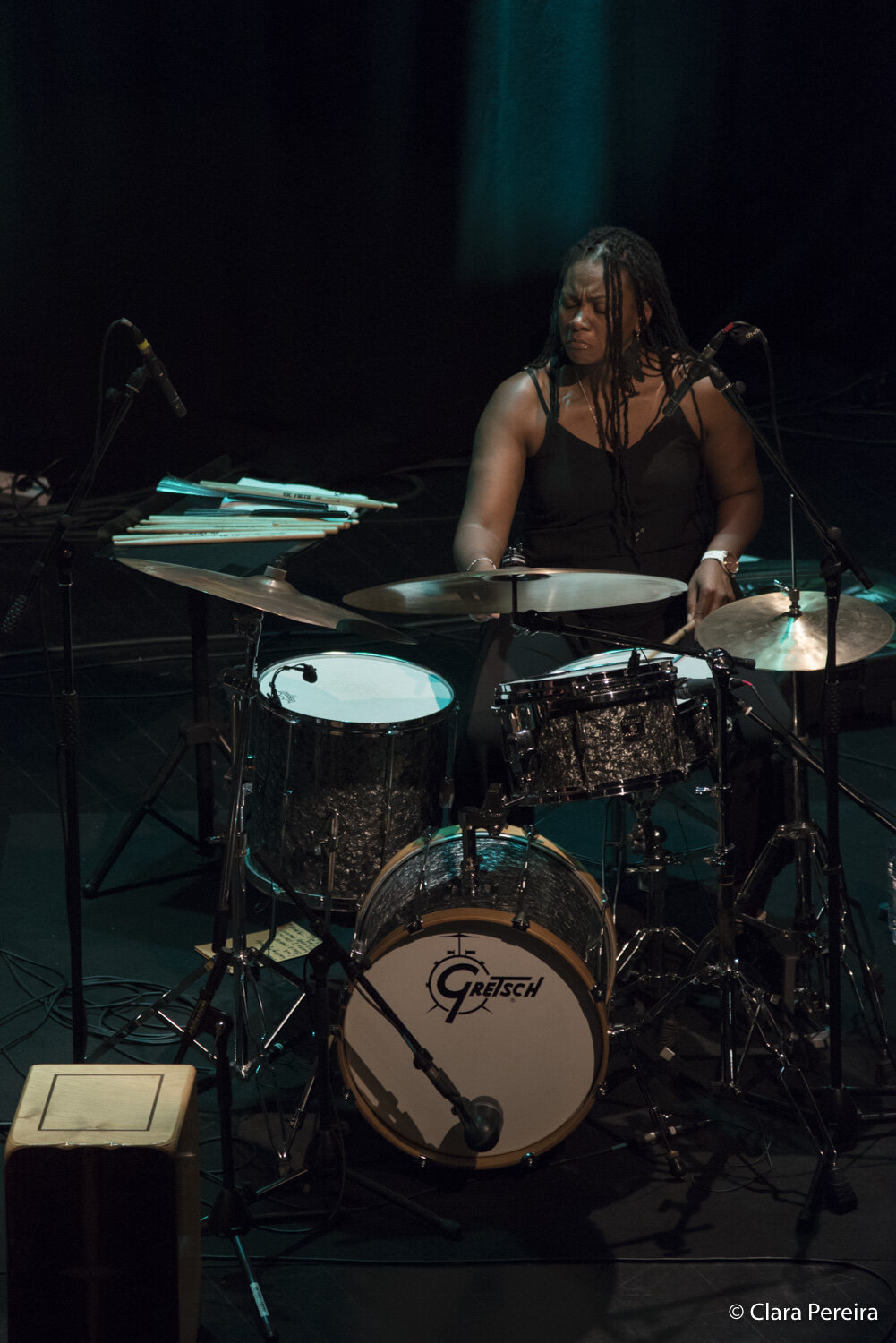
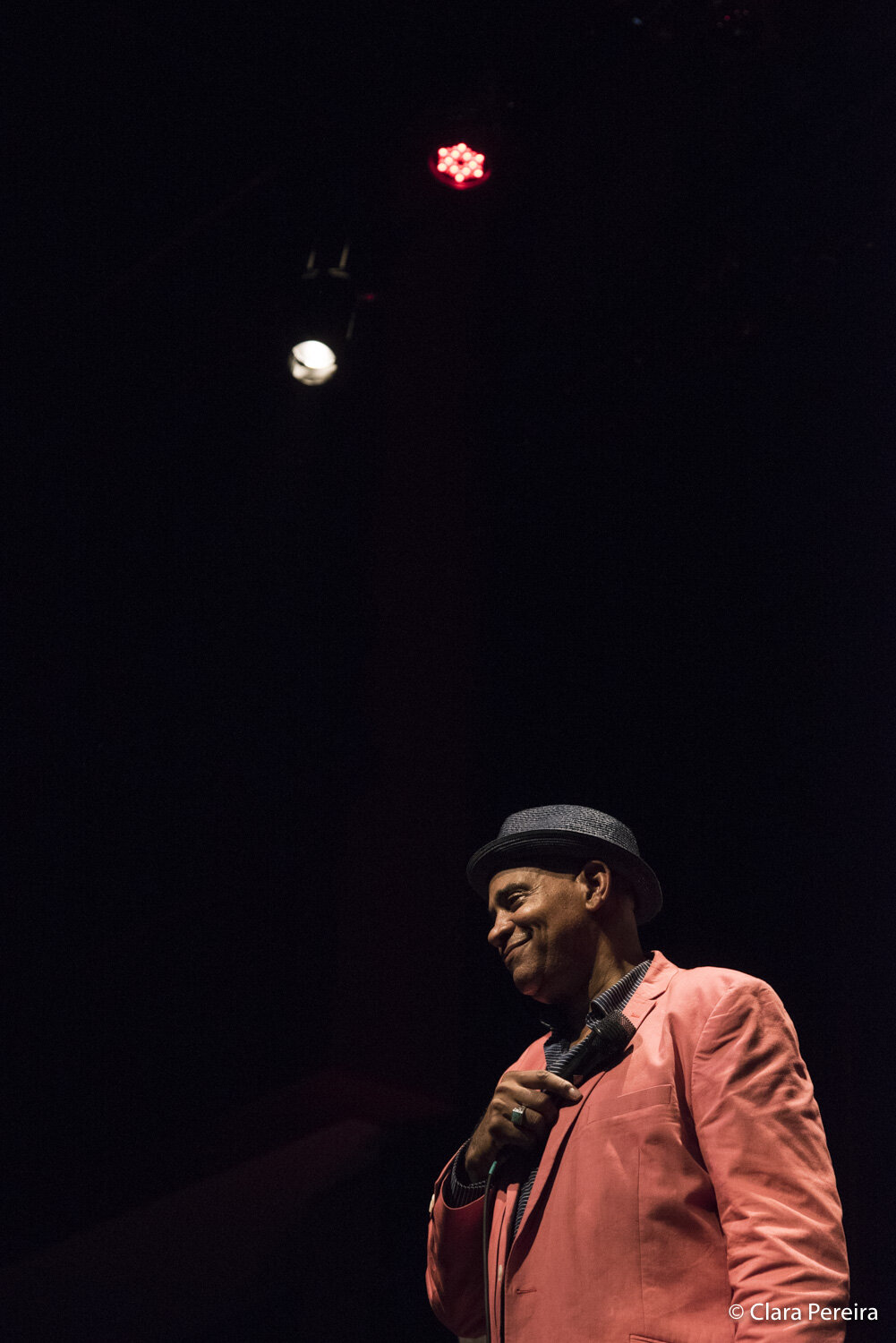
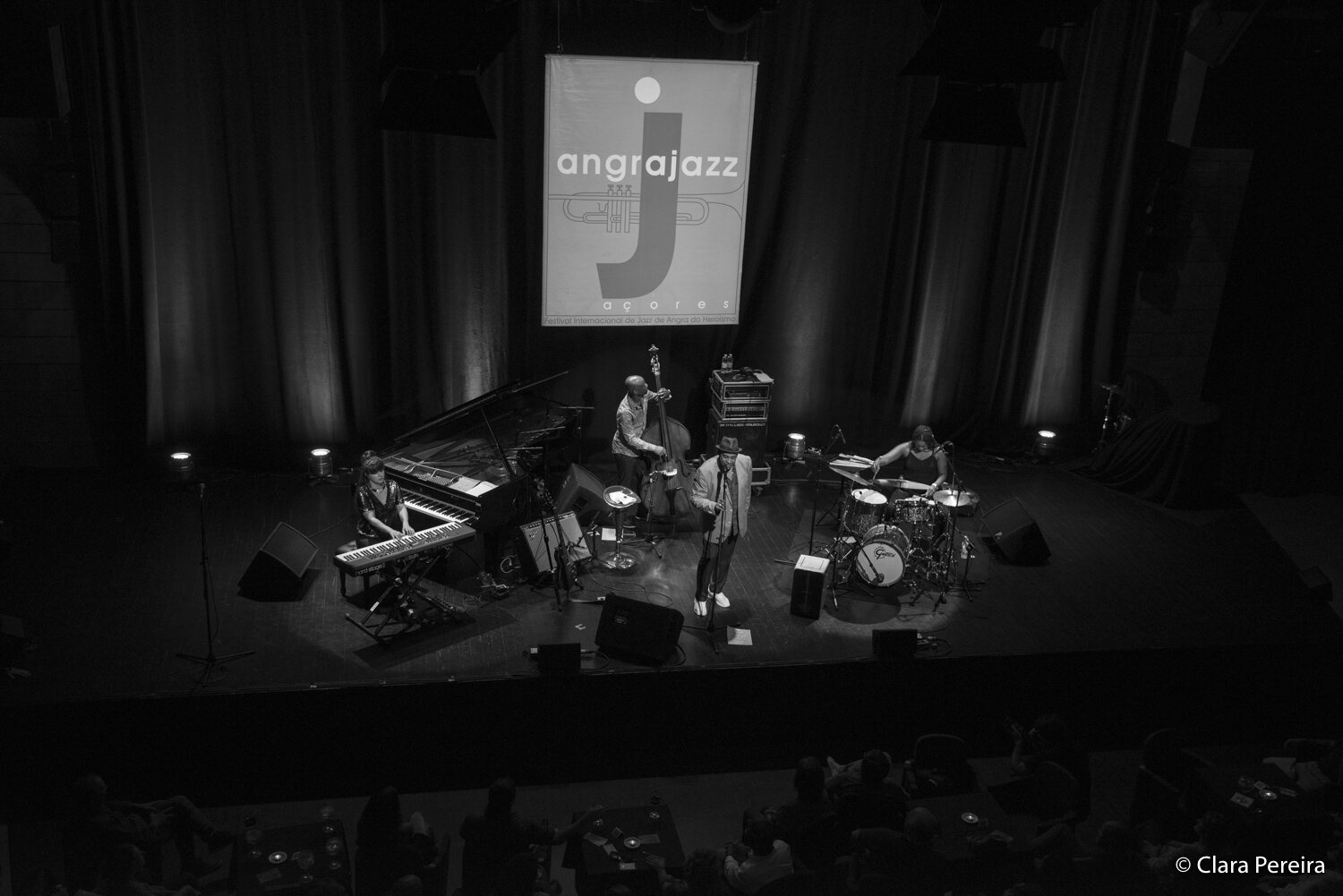
MIGUEL ZENON QUARTET
To compensate the first show of the night, the headliner and multiple-Grammy nominated Puerto Rican saxophonist Miguel Zenón, delivered an unforgettable concert with his extraordinary quartet of more than a decade. Excelling in their respective positions, Luis Perdomo on piano, Hans Glawischnig on bass, and Henry Cole on drums, were an infallible support for the altoist, who transformed famous salsa tunes by Puerto Rican singer Ismael Rivera into exquisite jazz hybrids of unquestionable quality. The music can be enjoyed on his latest album Sonero: The Music of Ismael Rivera, certainly one of my preferences for the year’s best list, but the emotions increase when we hear them live and see how much fun they have while playing the extremely addictive music that runs in their veins.
Taking a high-risk approach that combines melodic boldness, harmonic sophistication, and rhythmic vitality, the quartet navigated the album’s tunes, starting off with the killing rhythm and exciting soloing practices of “Quitate De La Via, Perico” and proceeding with the smooth melody and peaceful chord progression of “Las Tumbas”; the folksy courses and polyrhythmic wonder of “El Negro Bembón”; the pronounced Latin drive of “Traigo Salsa”; the stunning and exceptionally synchronous variations in speed of “La Gata Montesa”; the balladic and no less hair-raising “Hola”, which featured a beautiful intro by Perdomo; and the rock punch of “El Nazareno”, which closed out the concert in ecstasy. Boasting an incredible musicianship and refreshing spontaneity, Zenón and his peers were flawless and the festival couldn’t have had a better conclusion. Well done AngraJazz!

